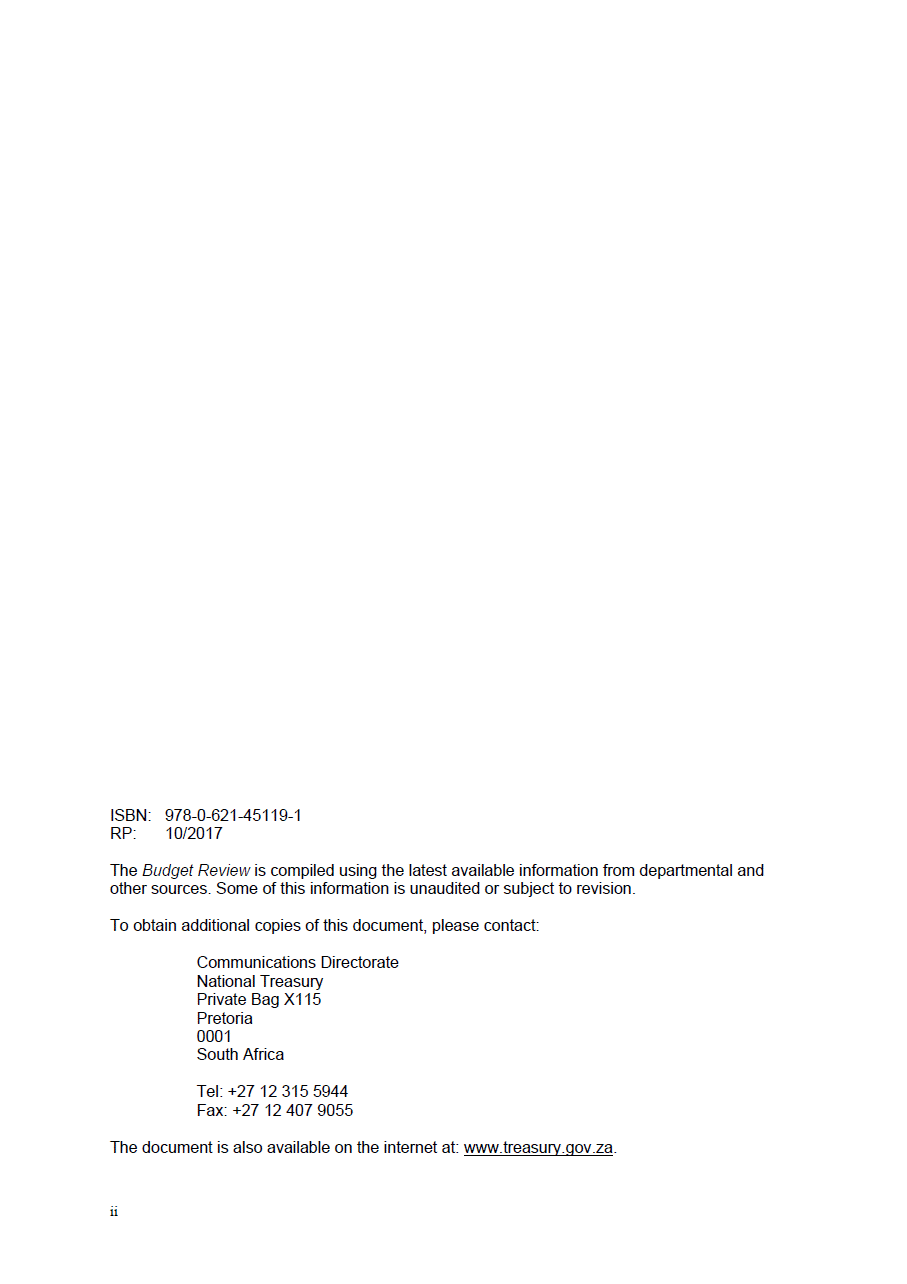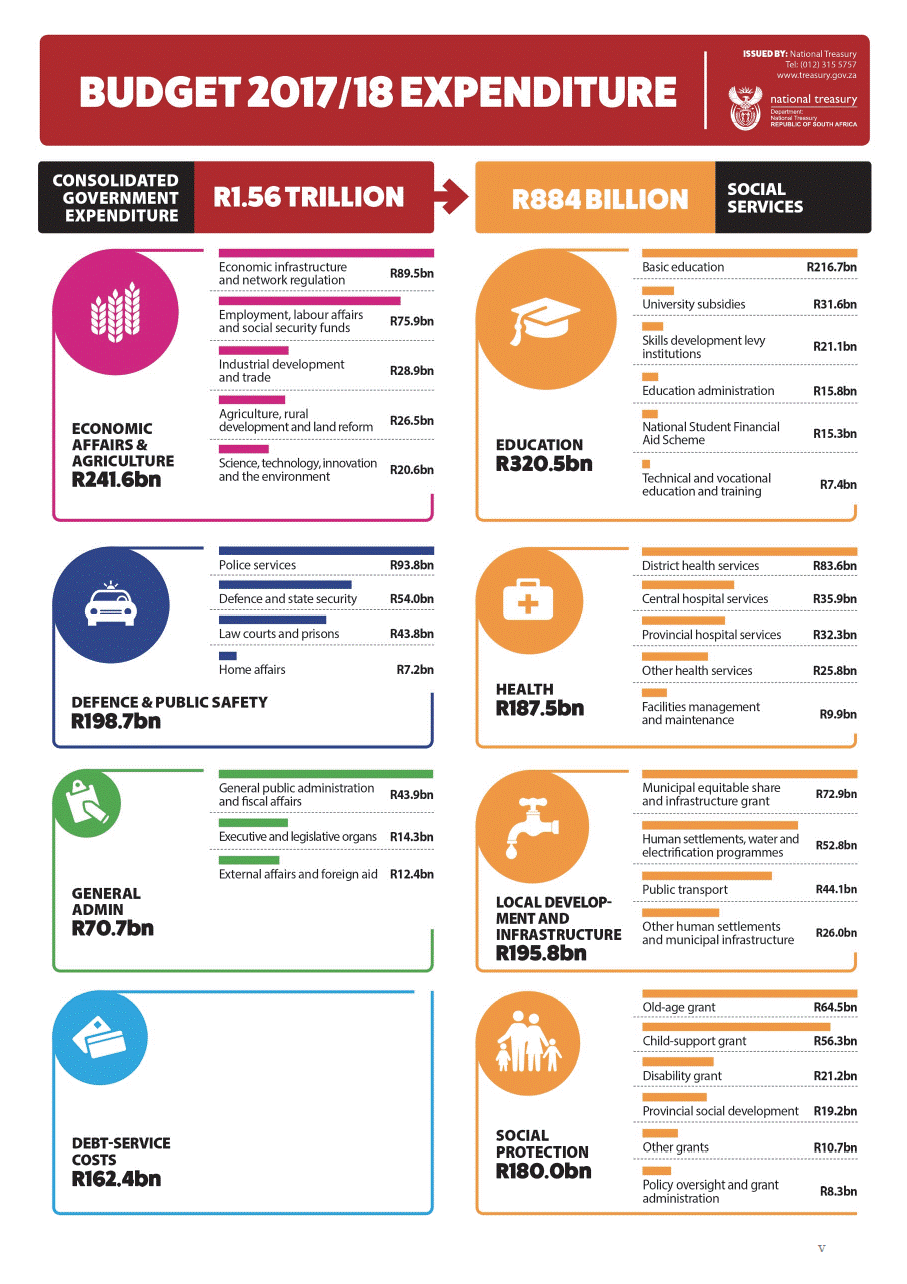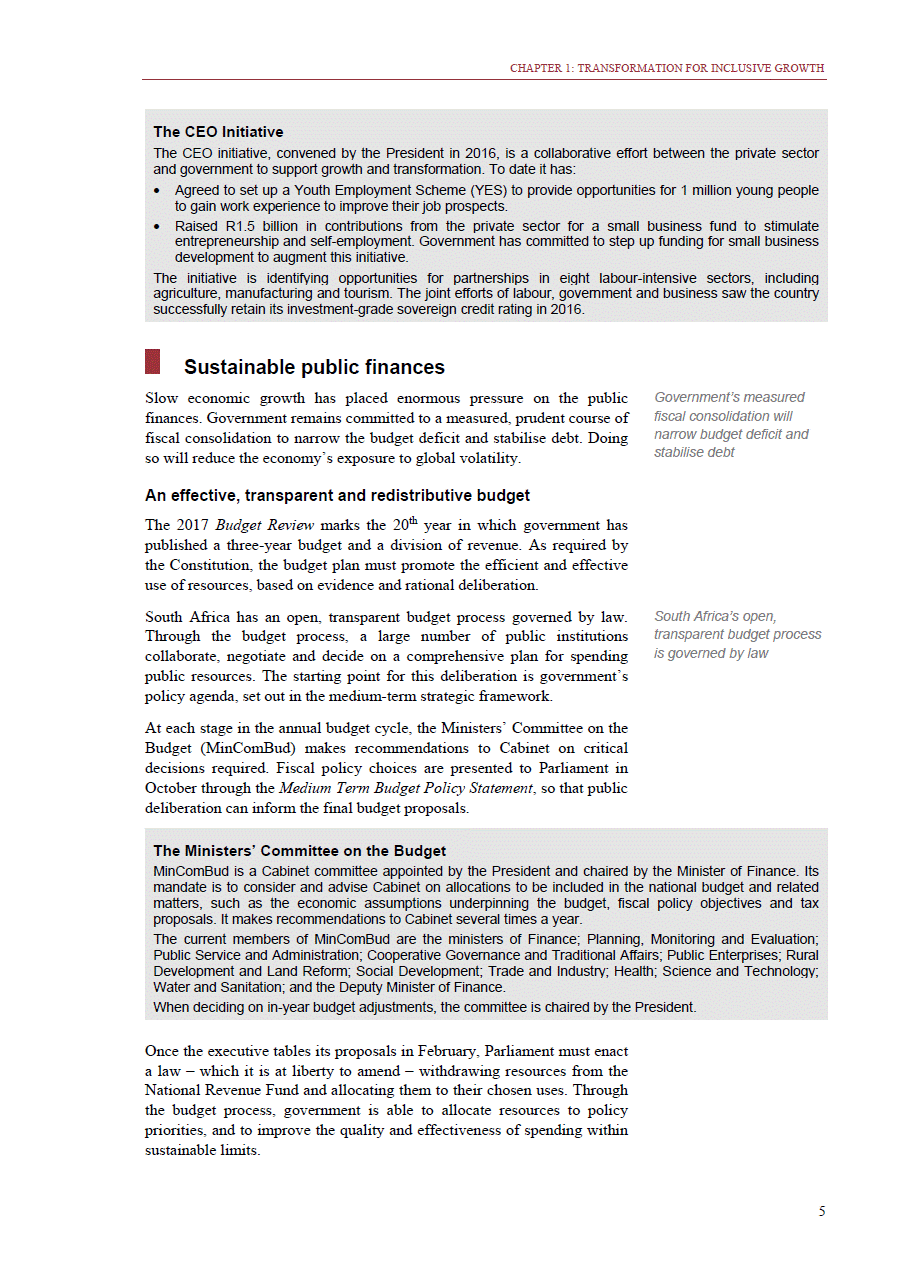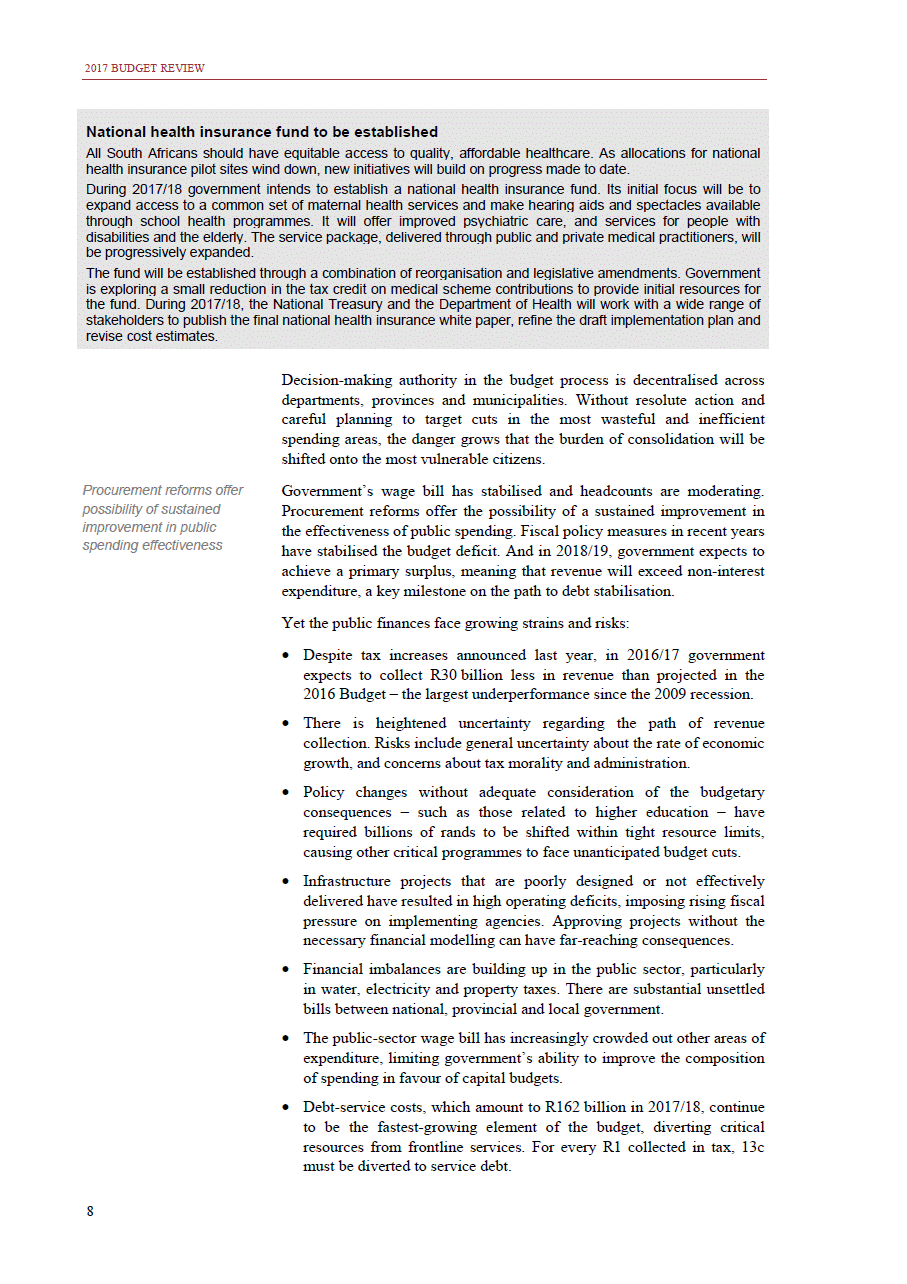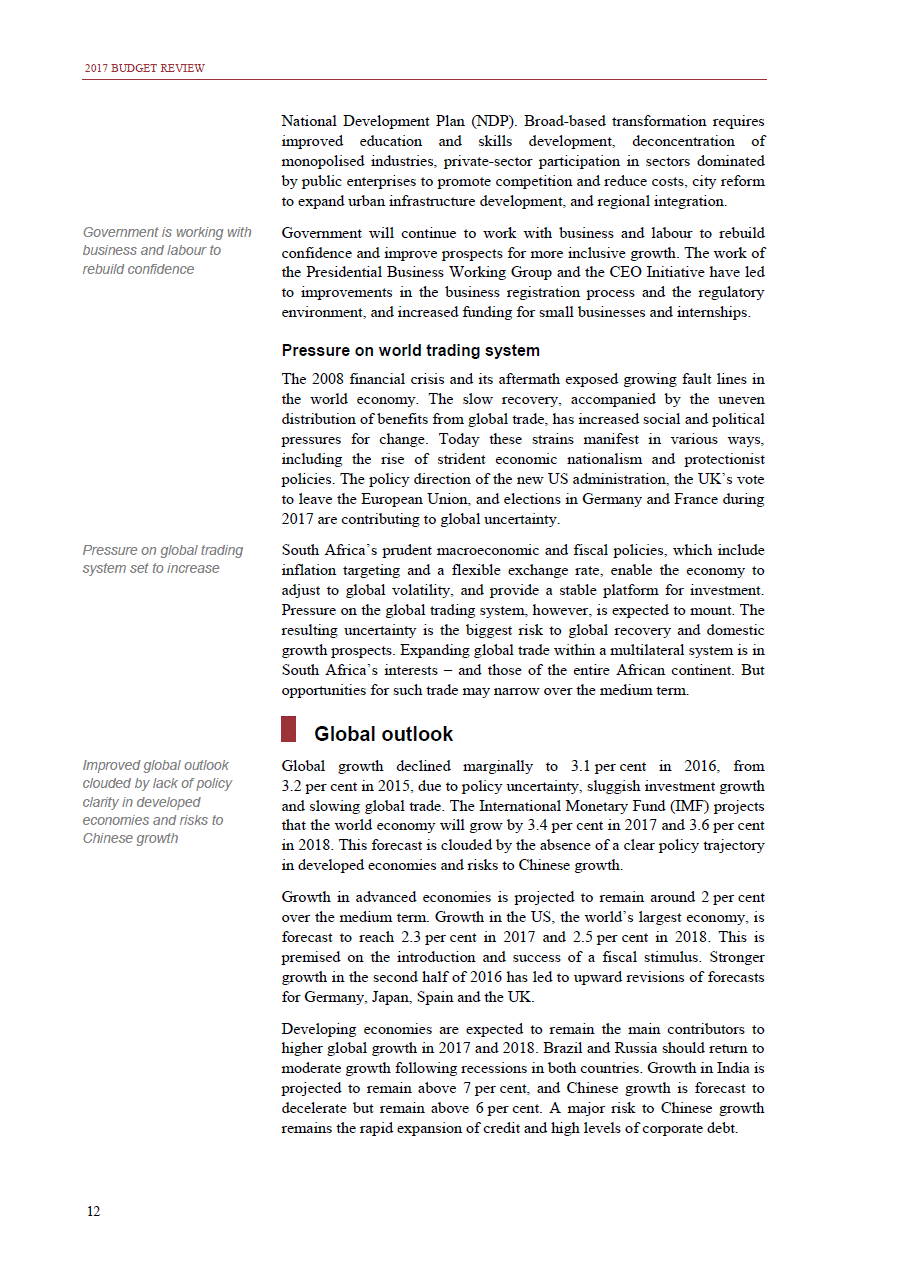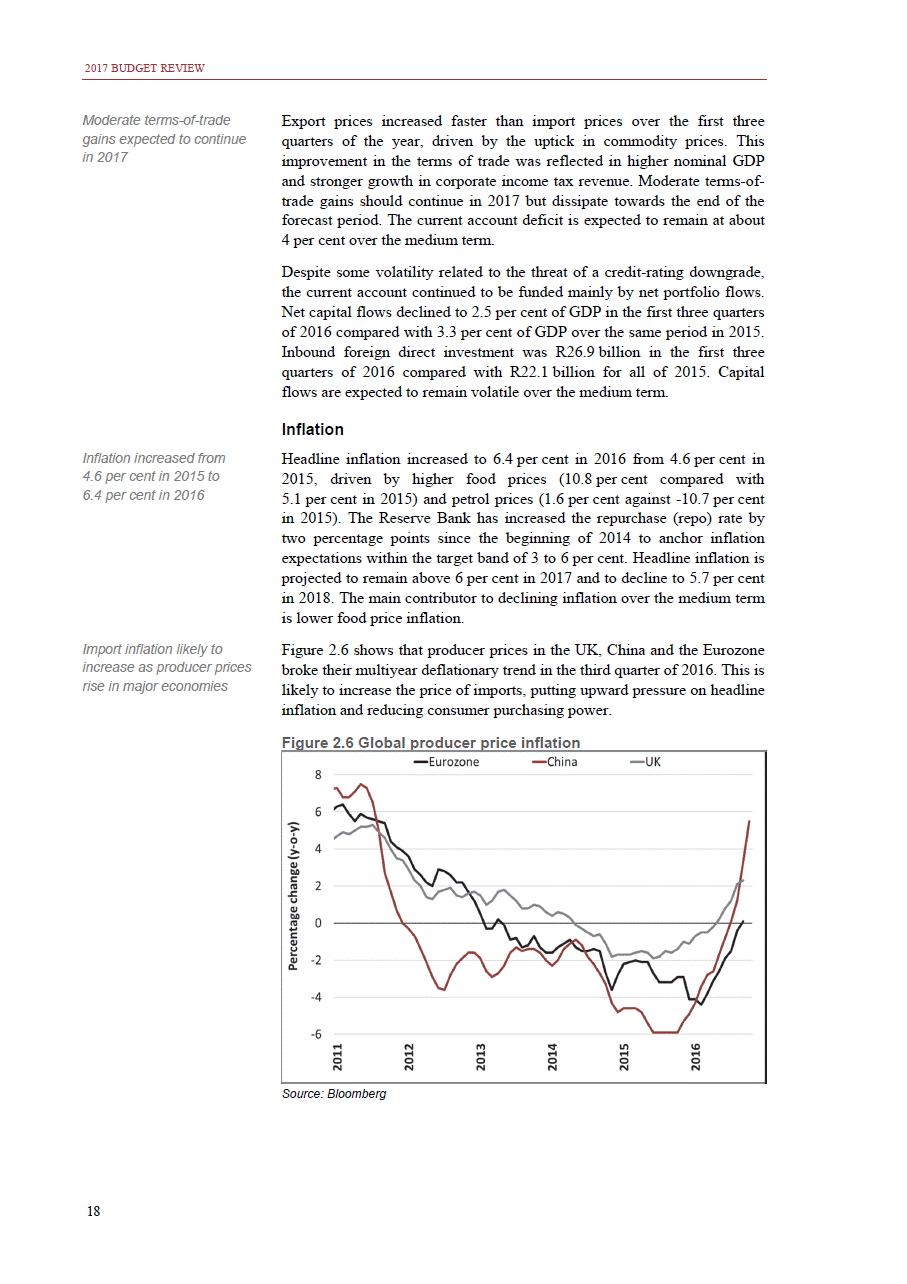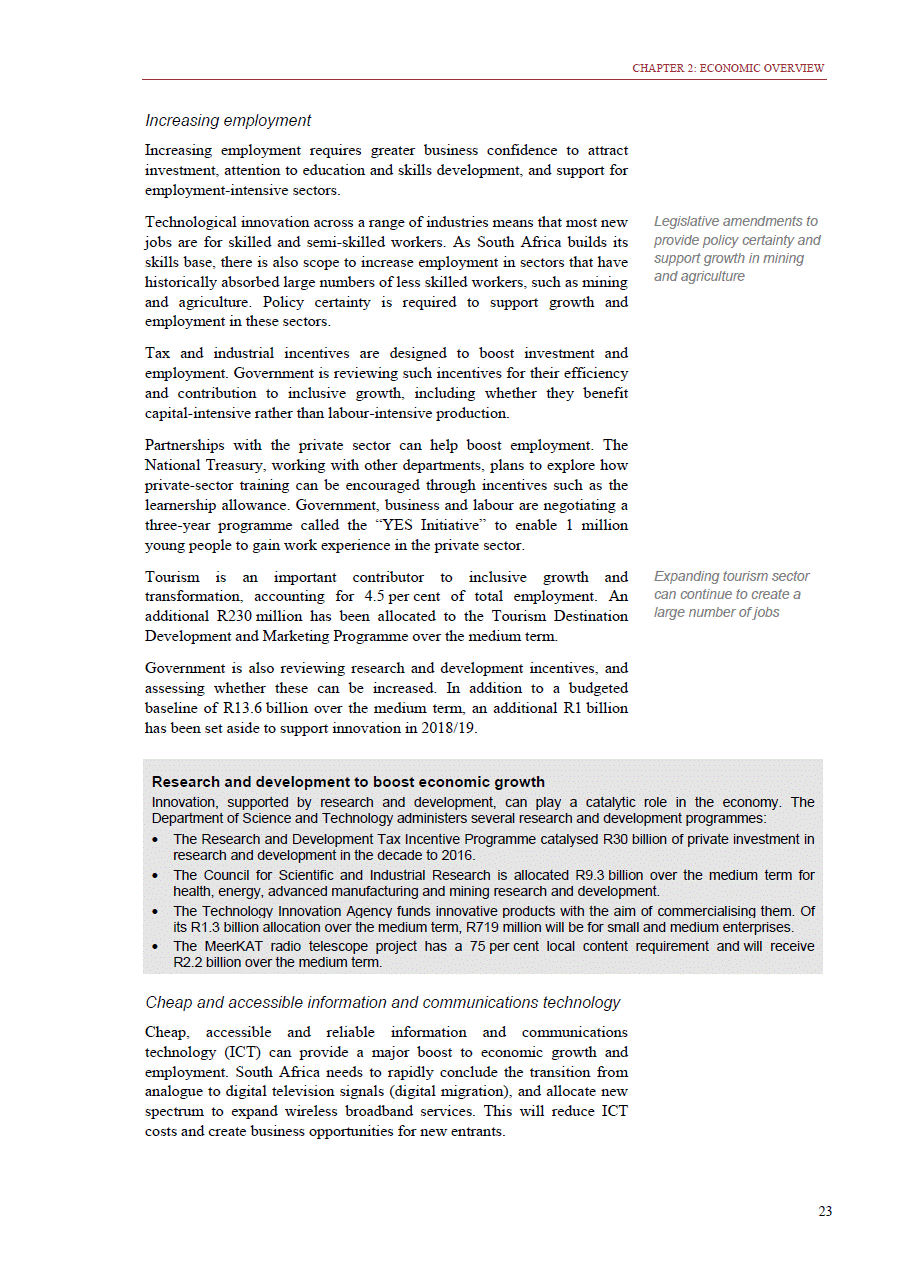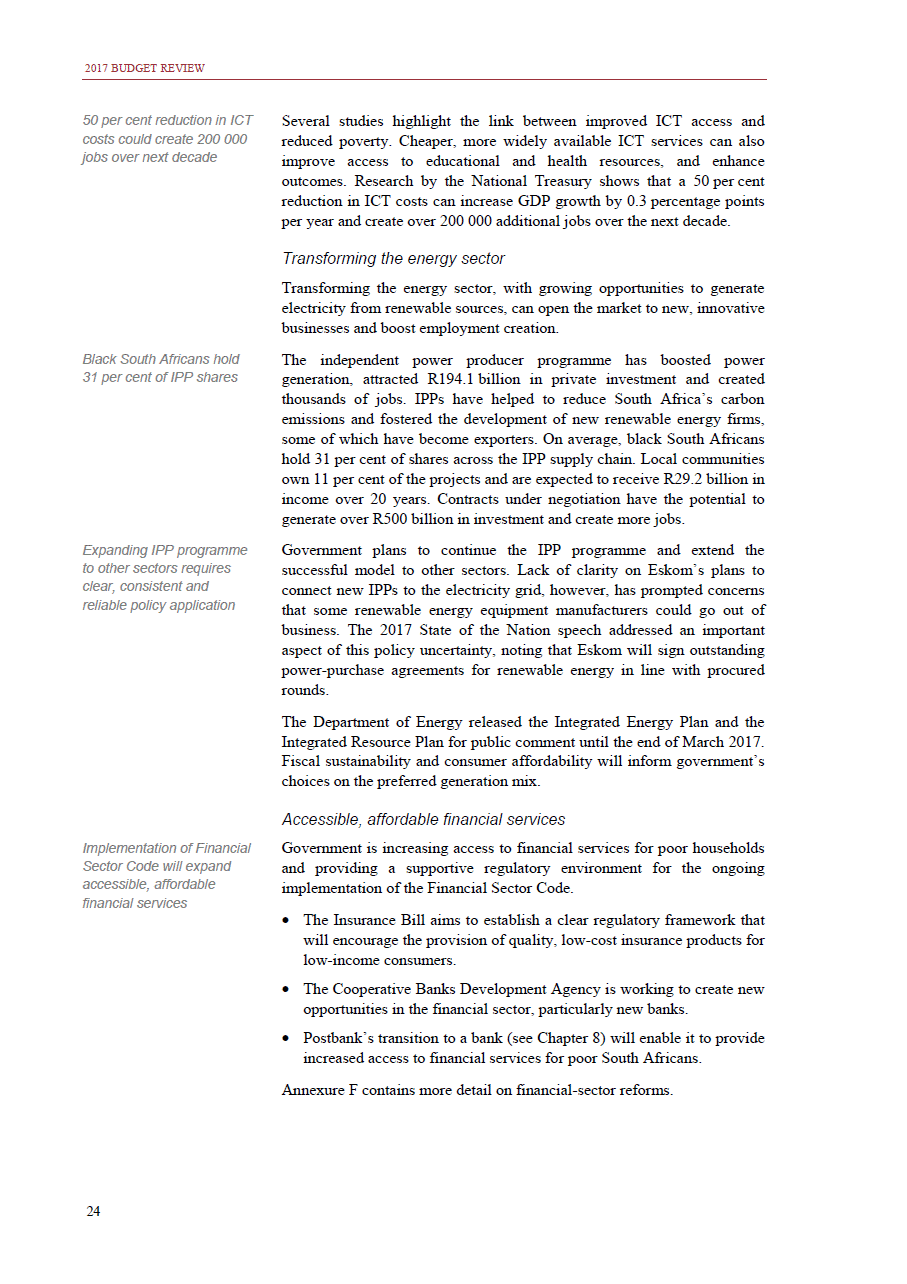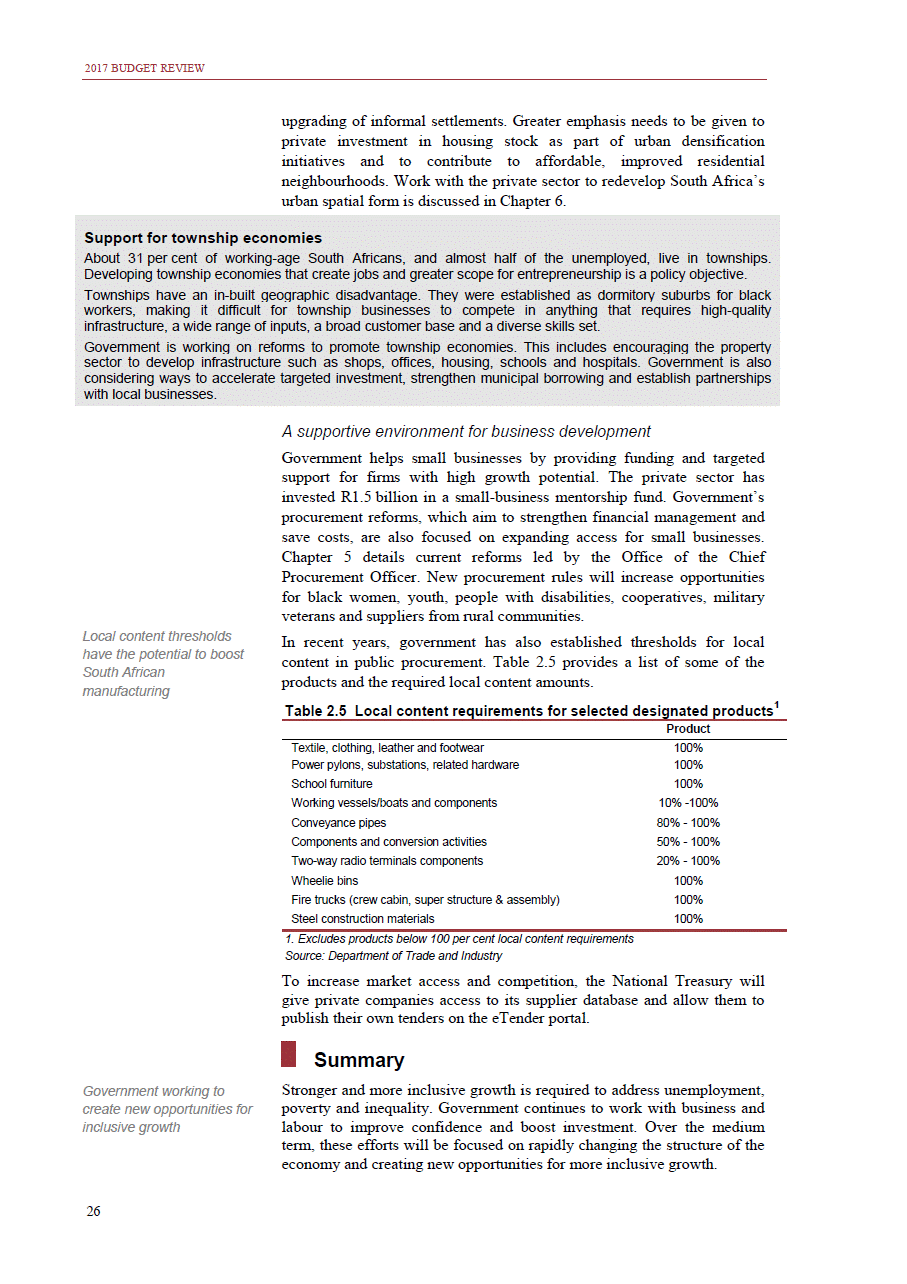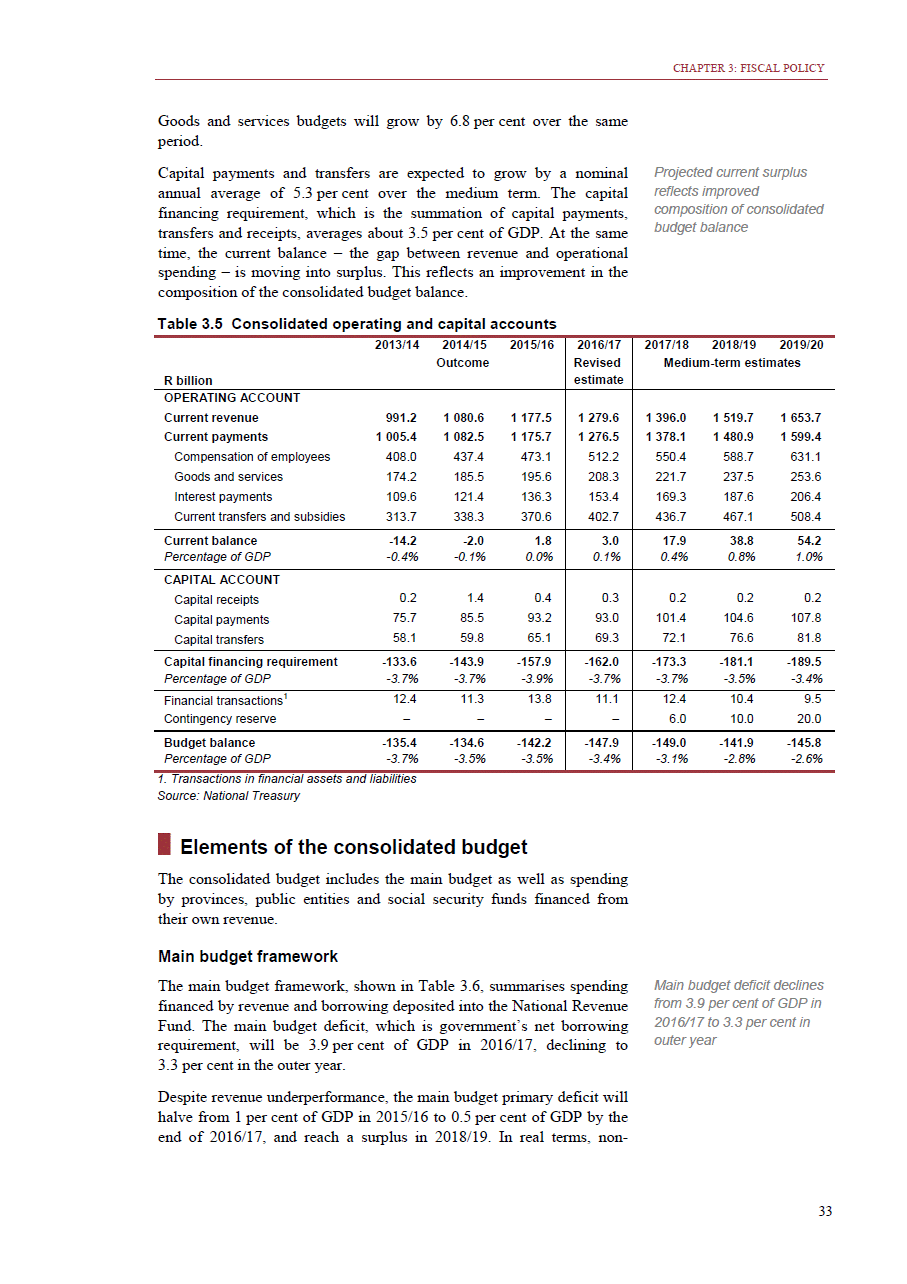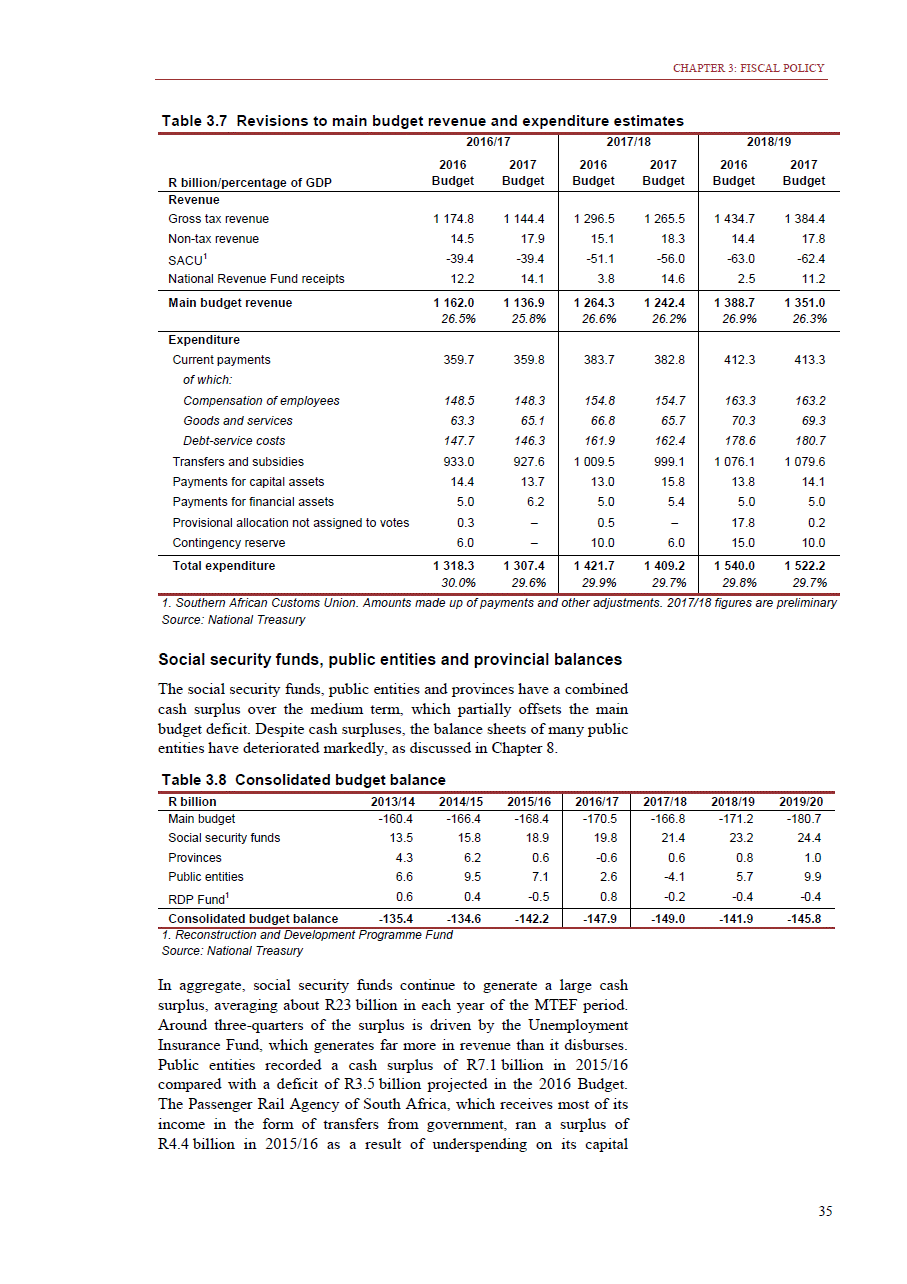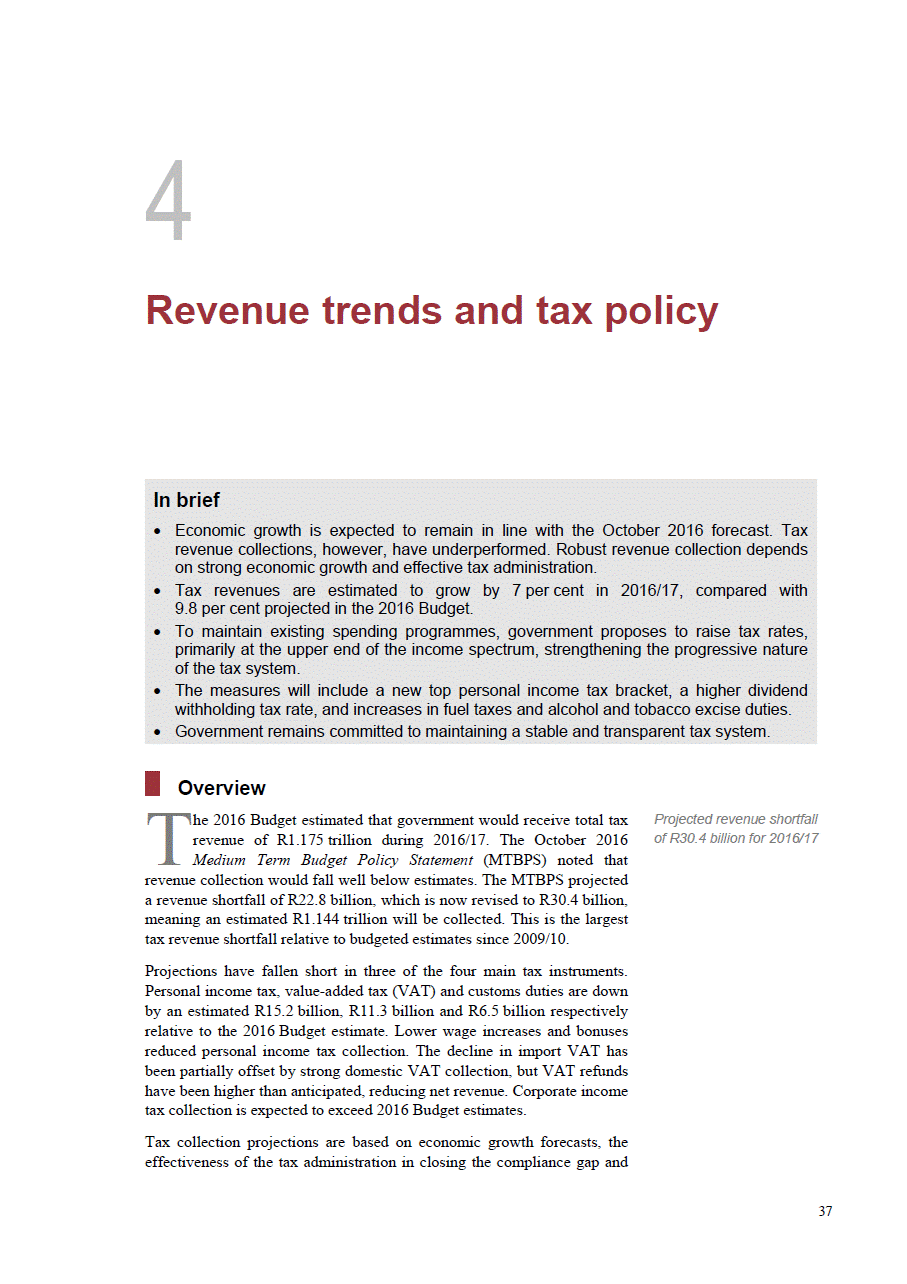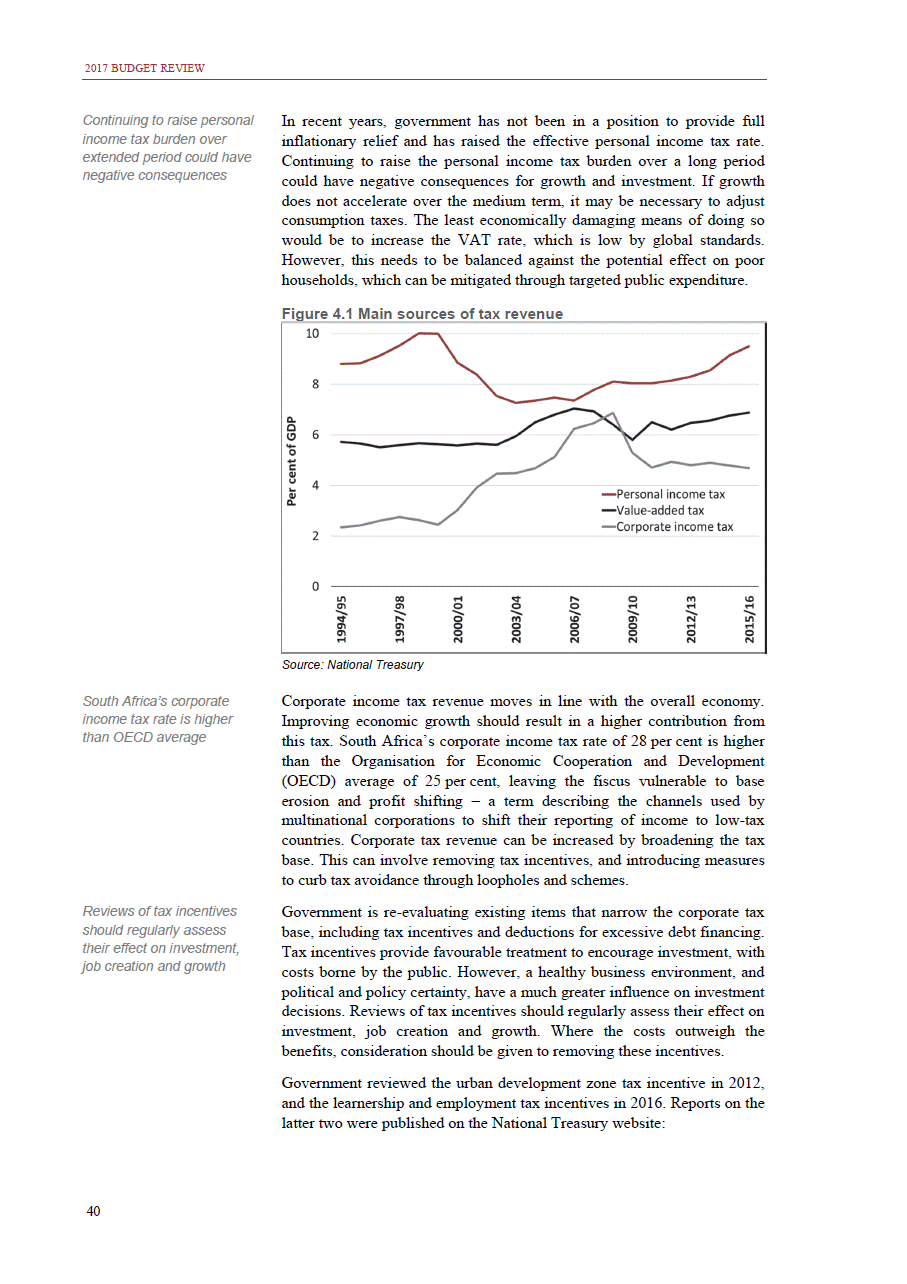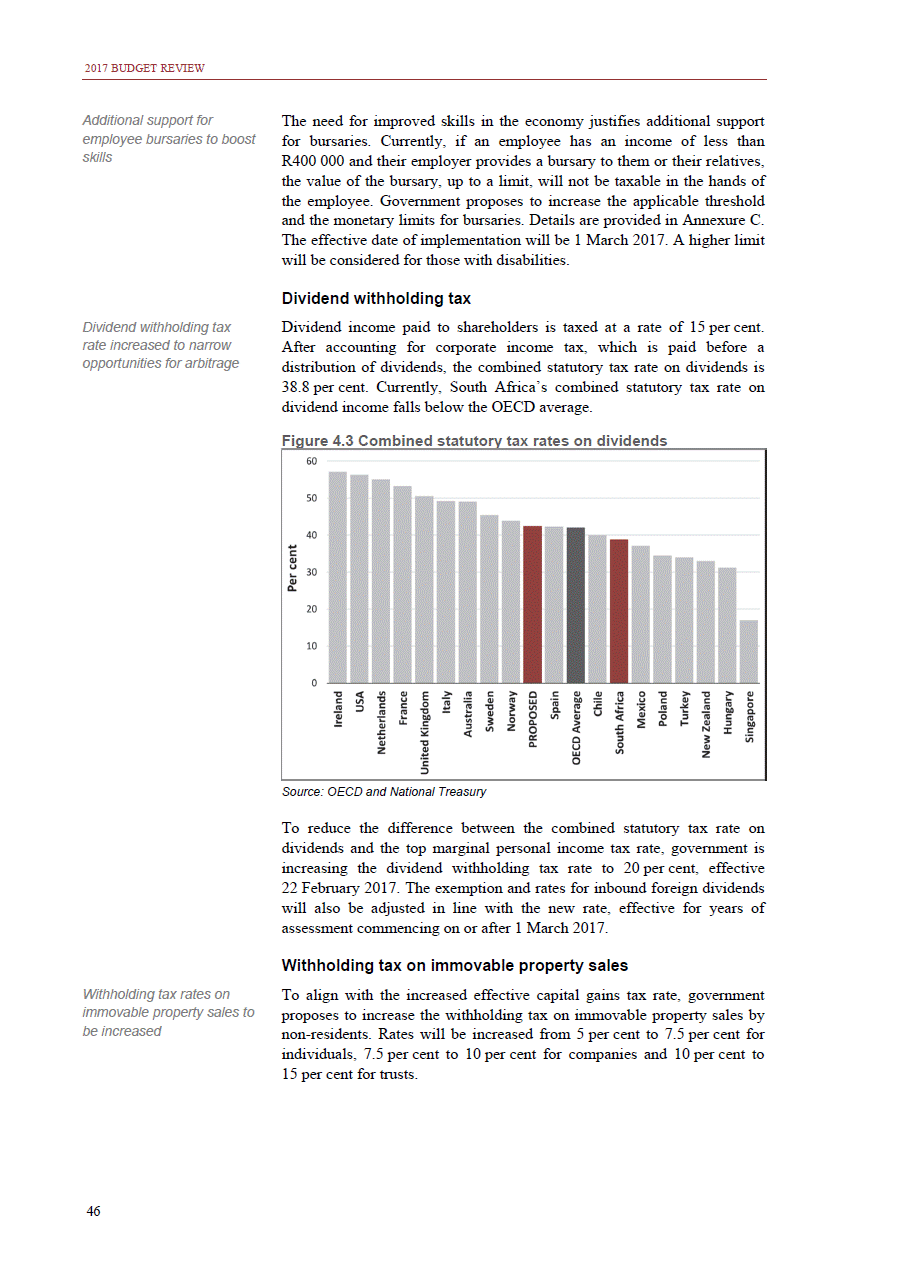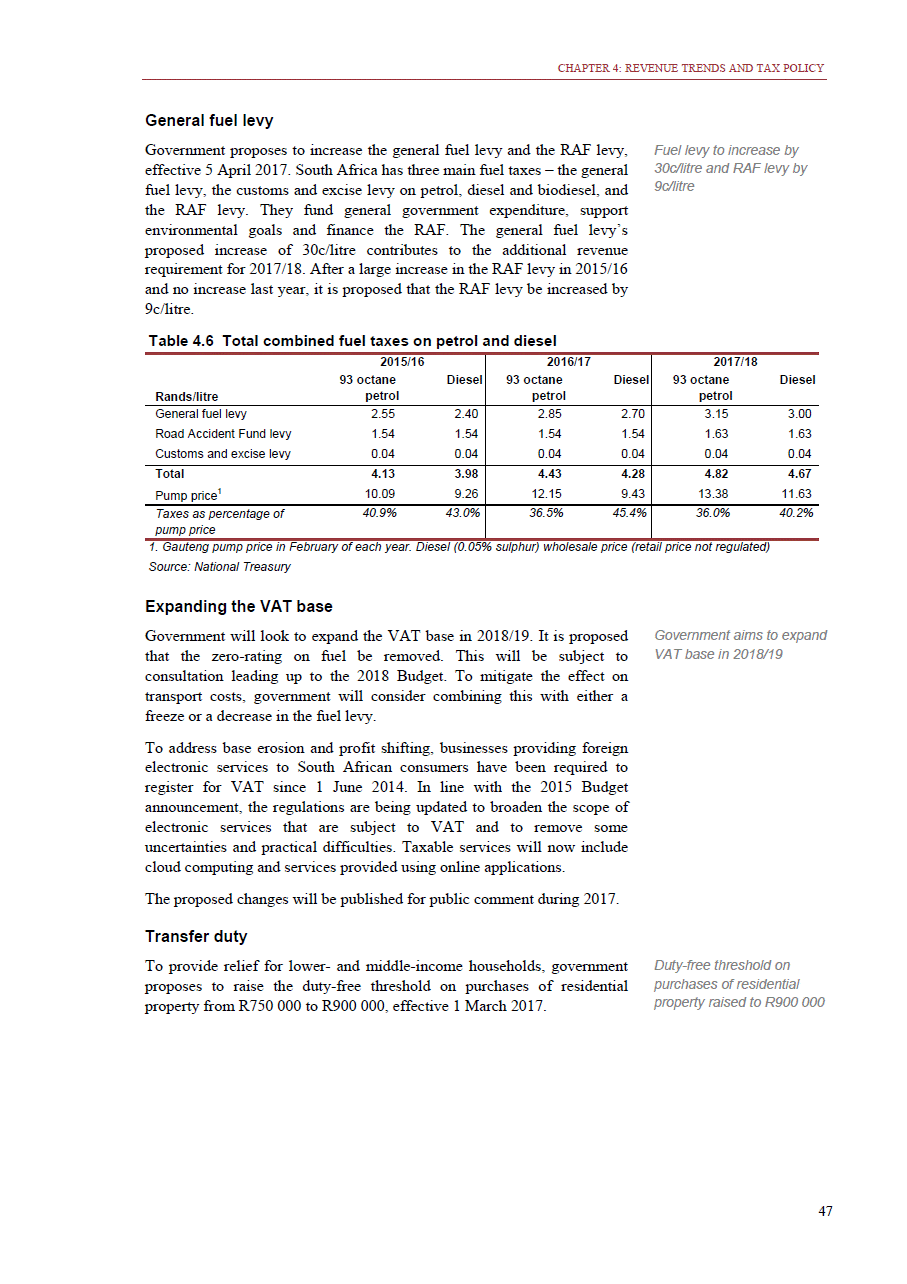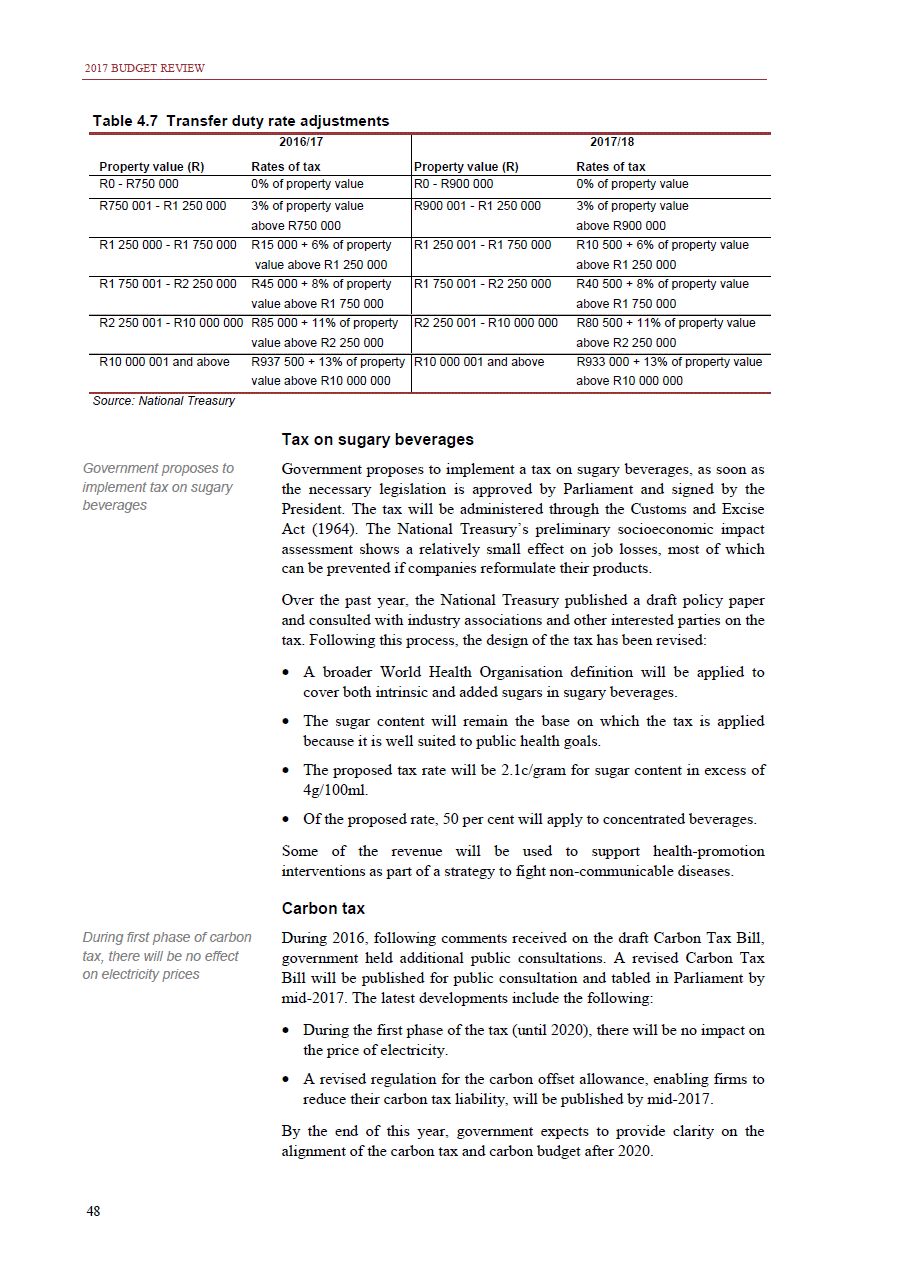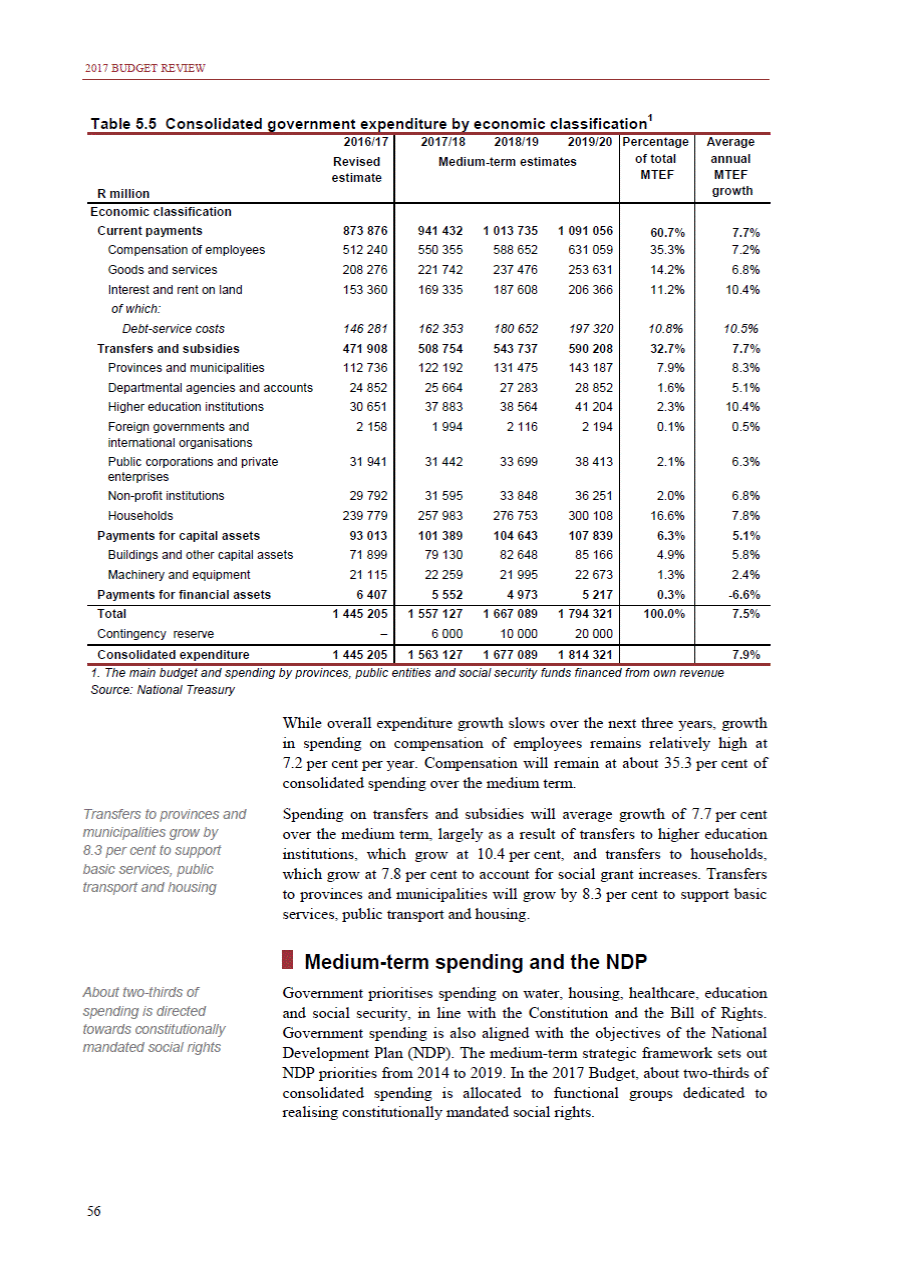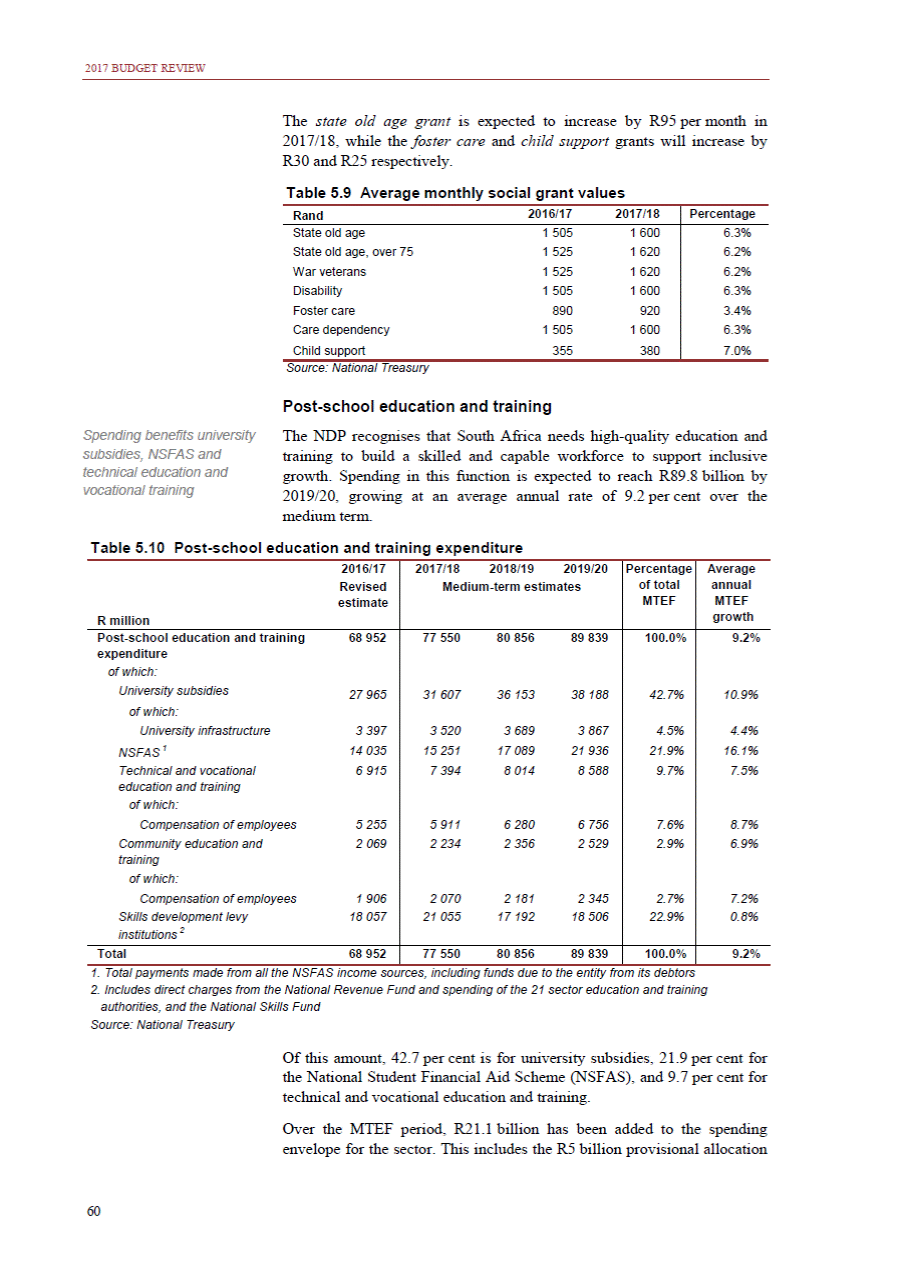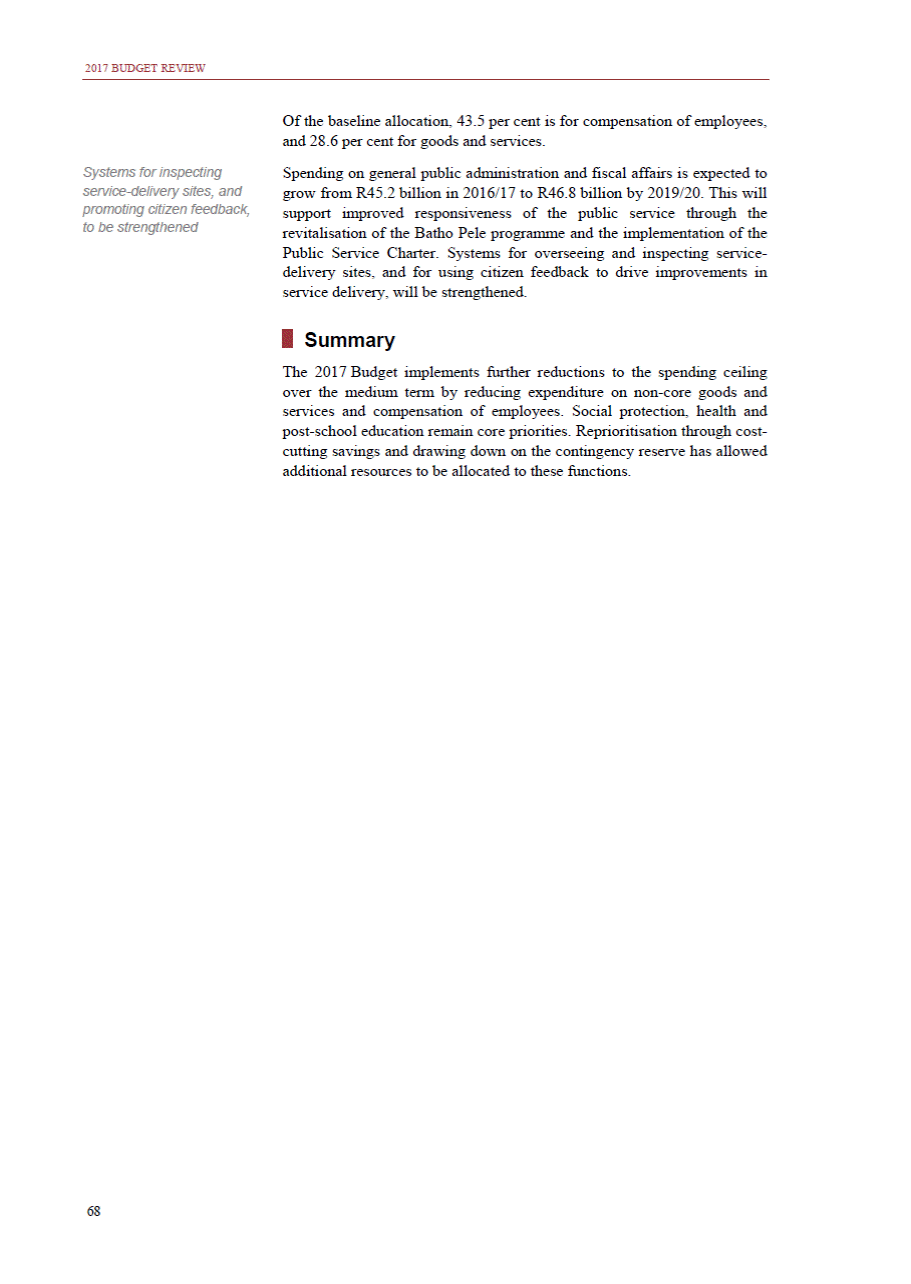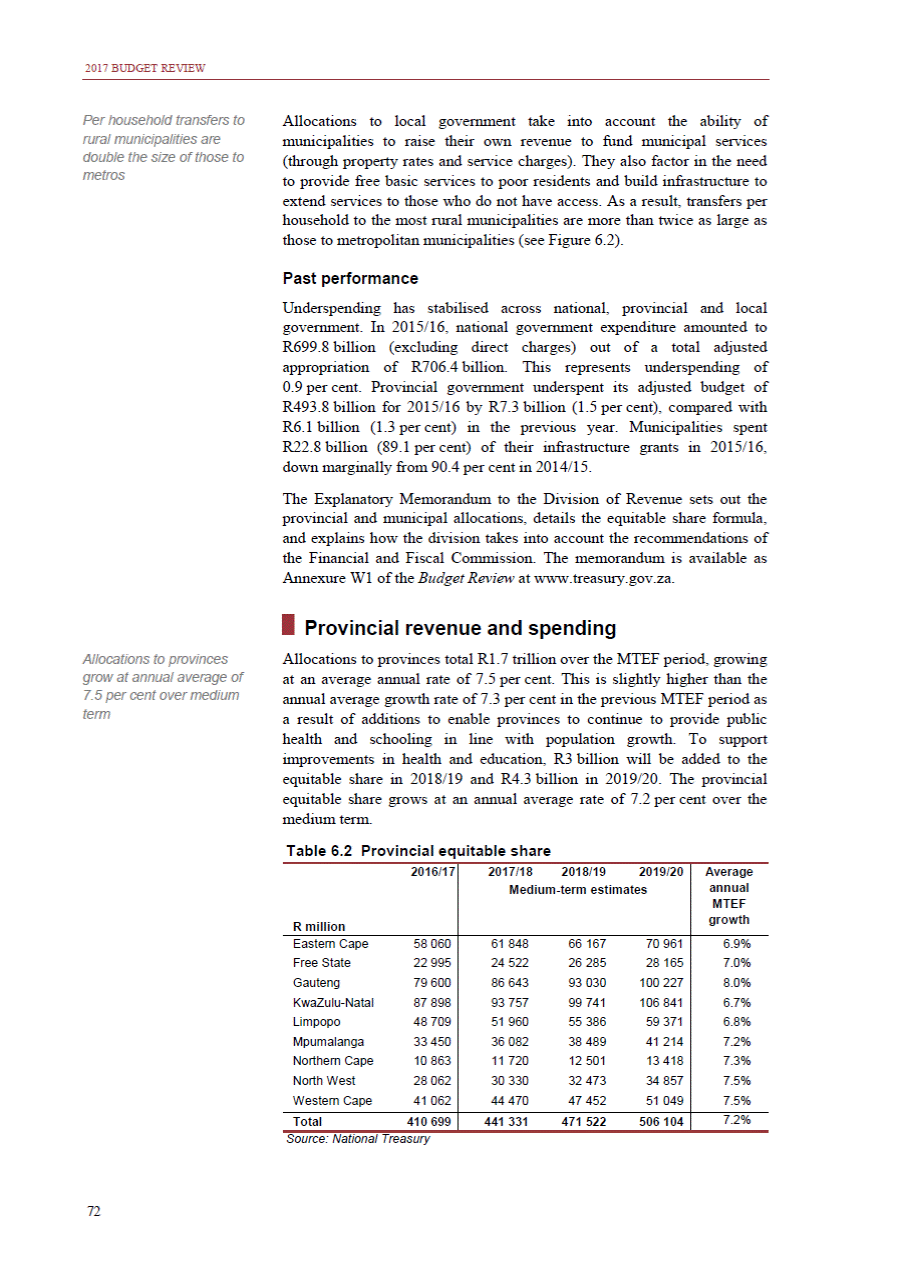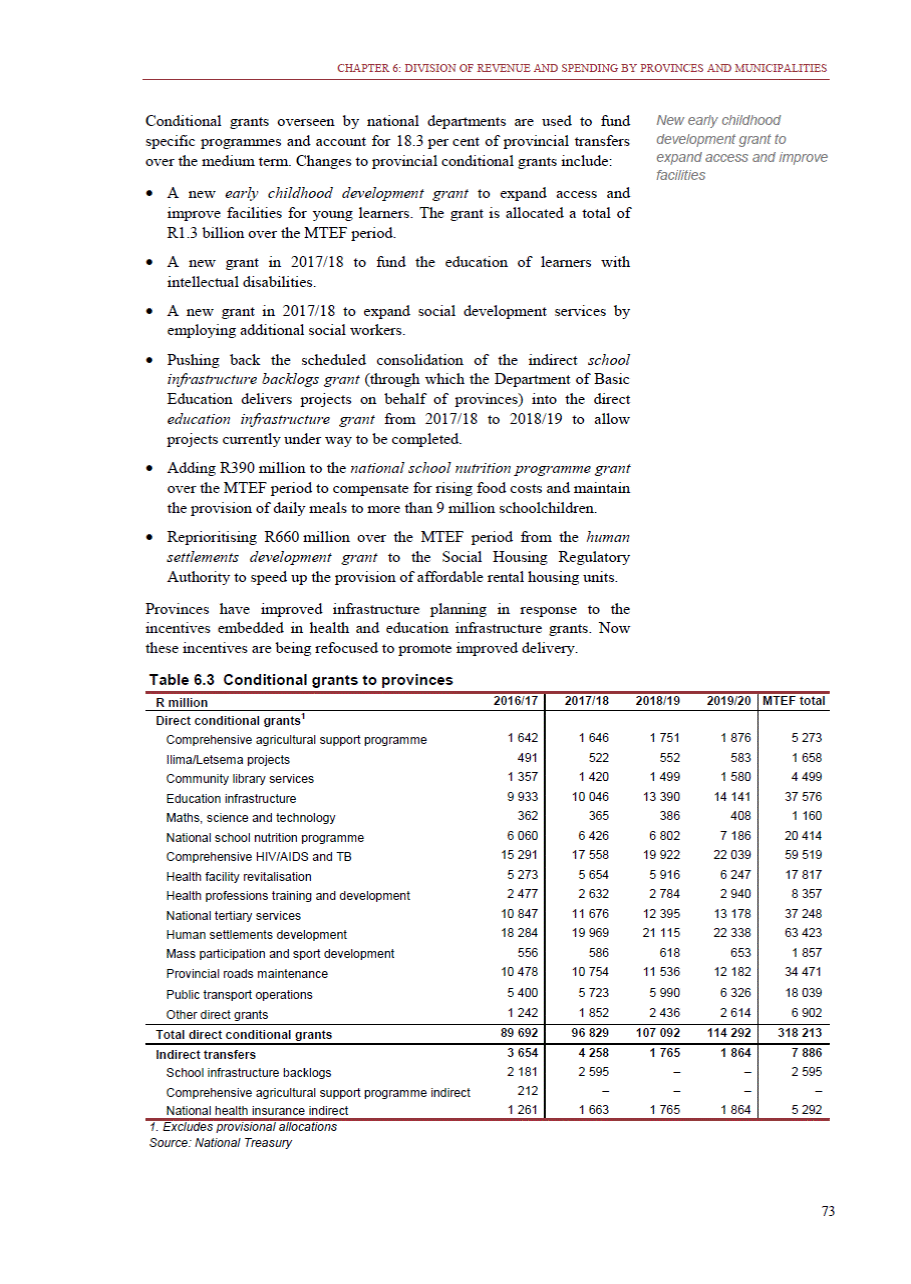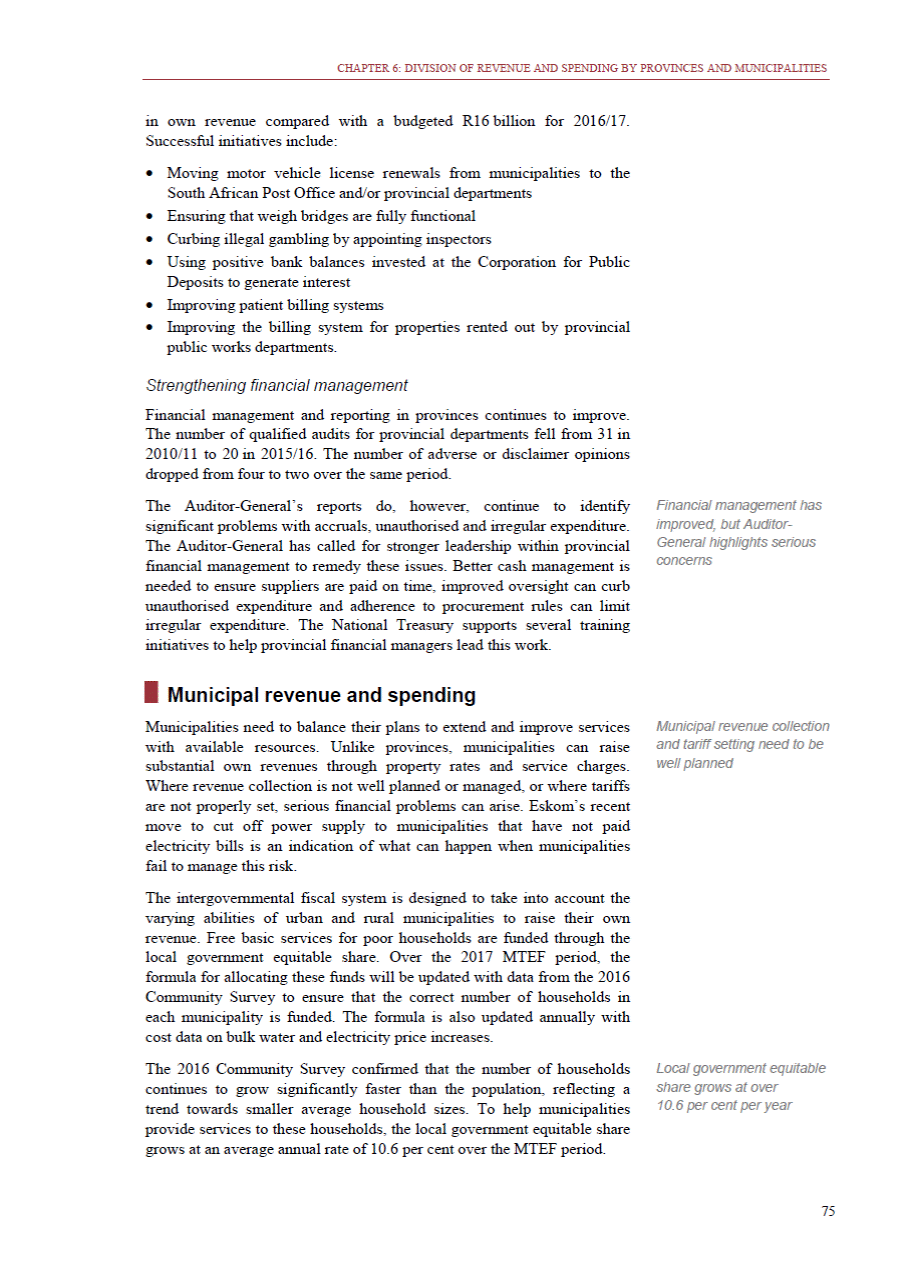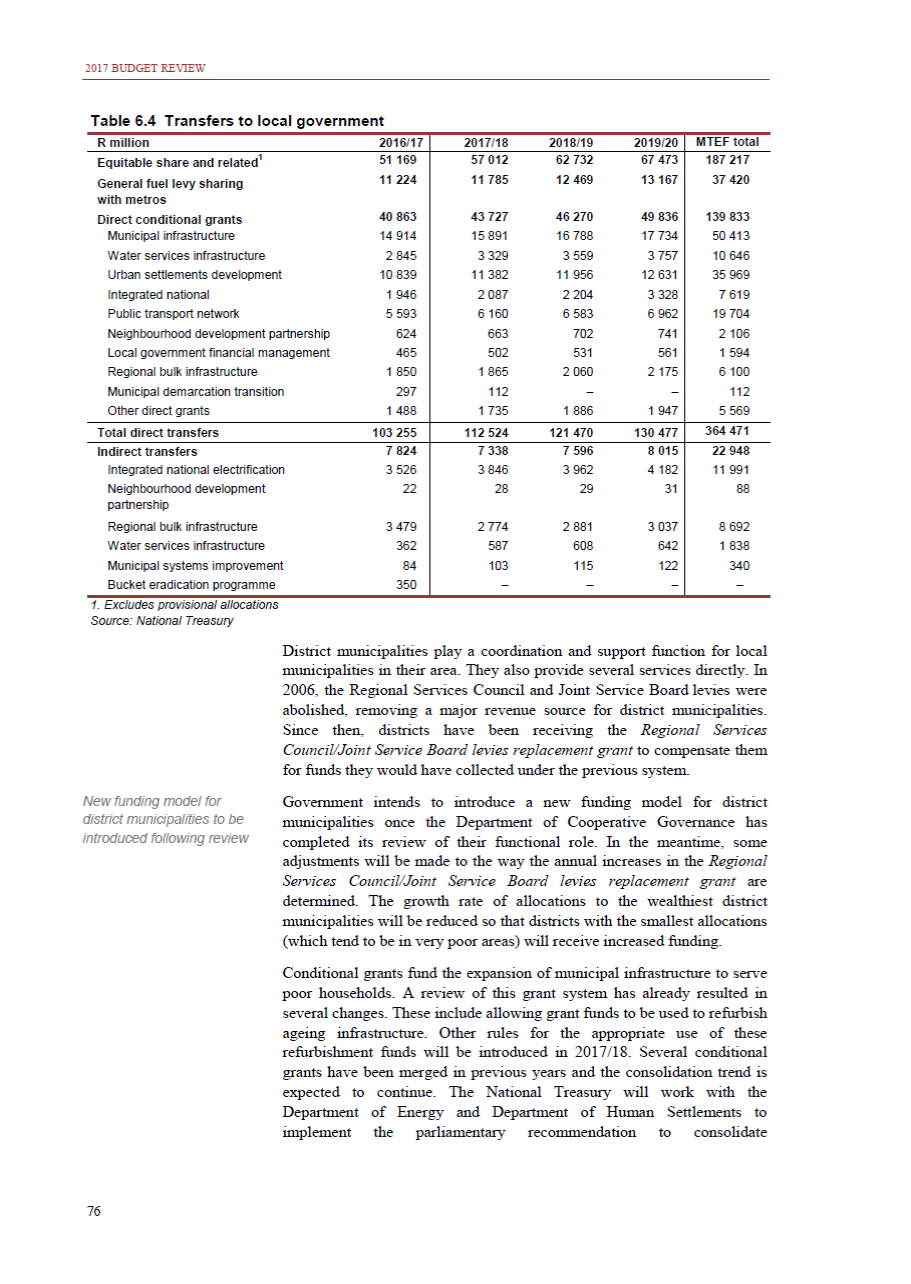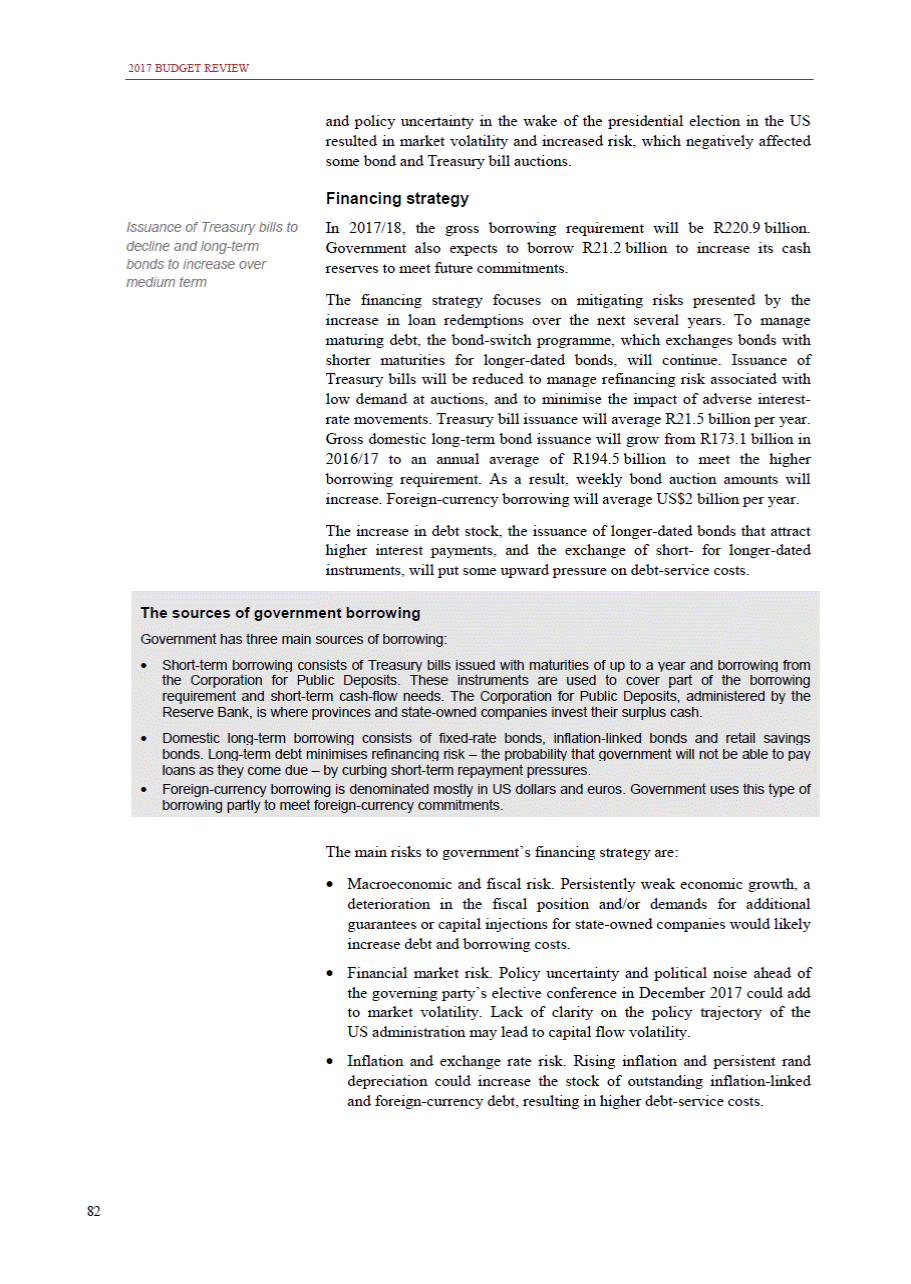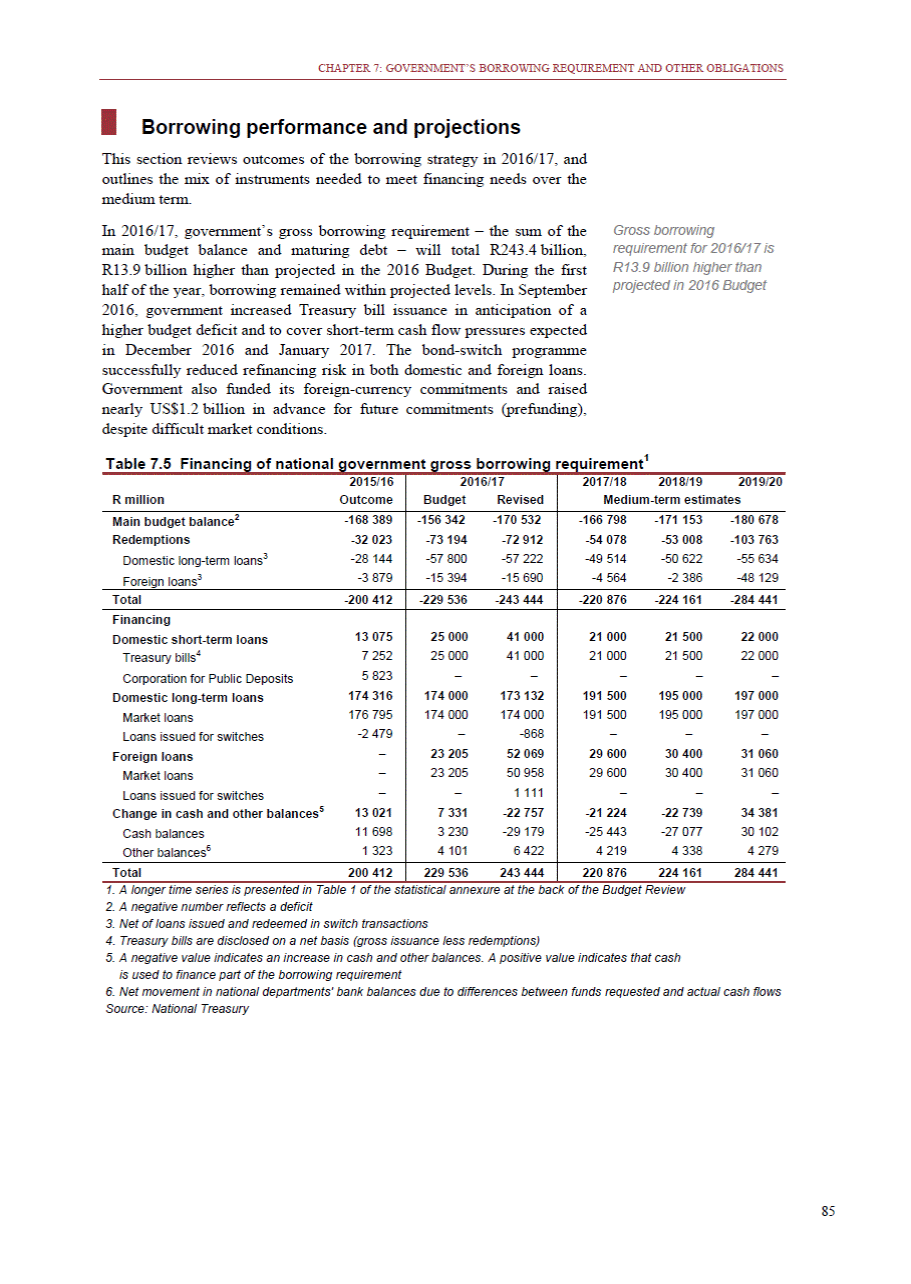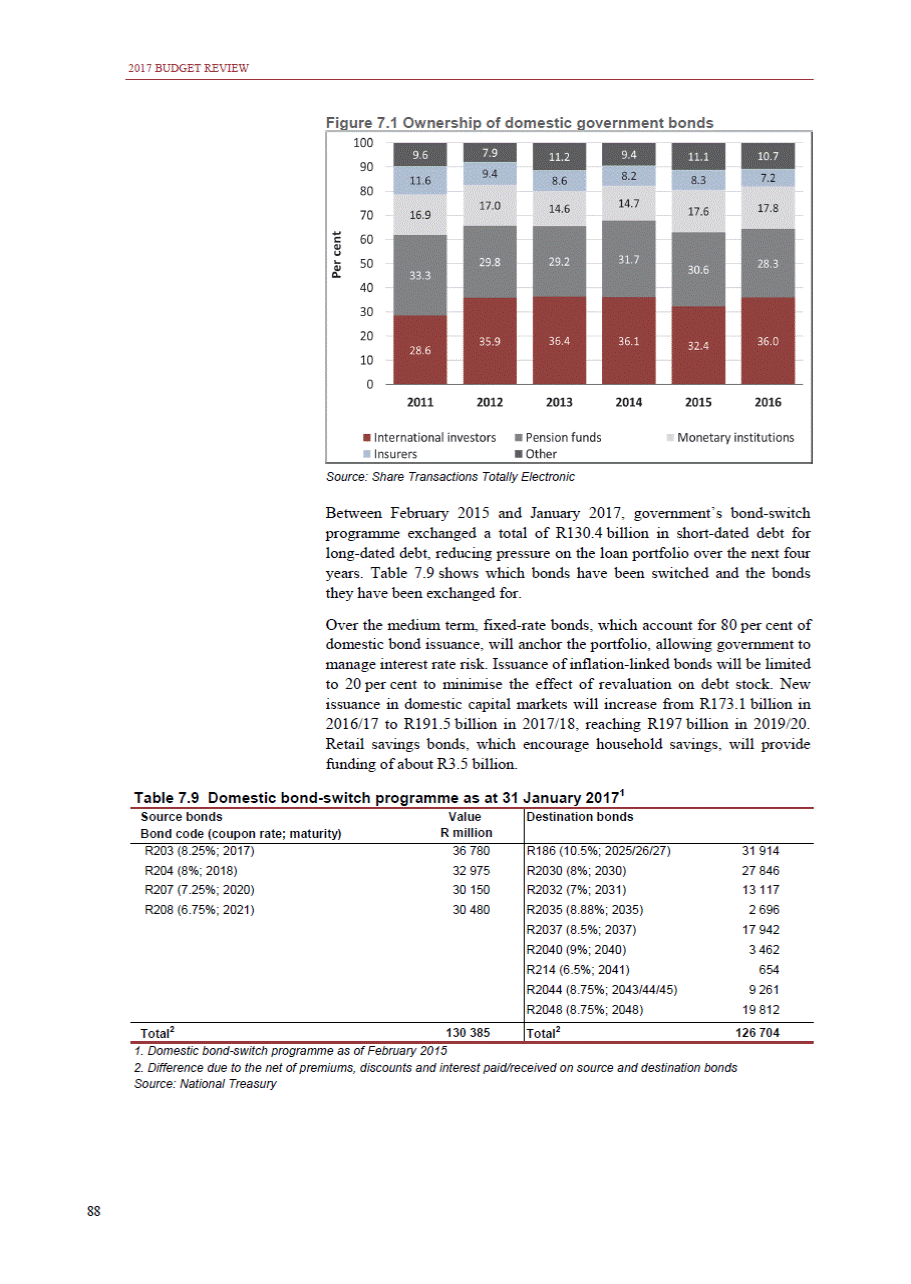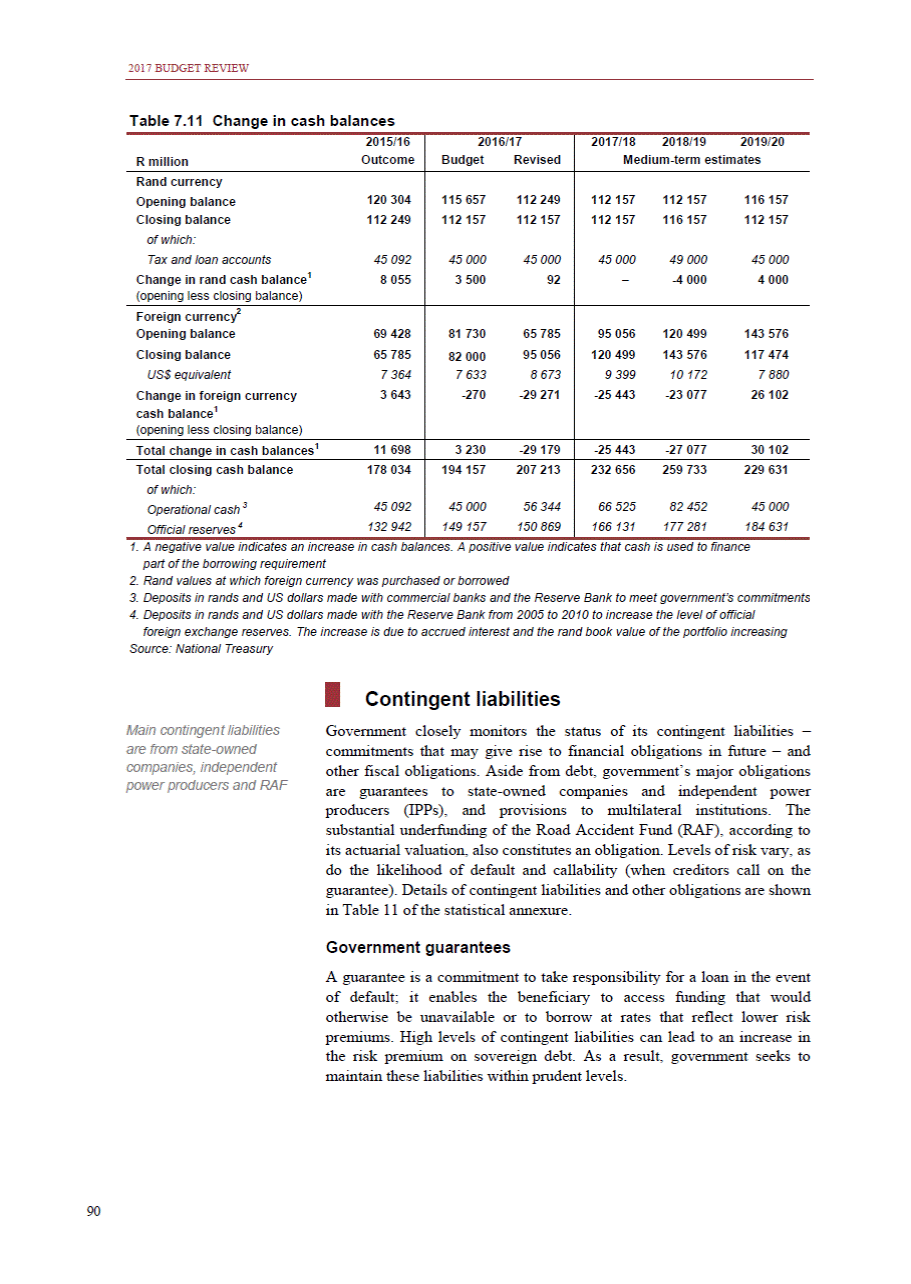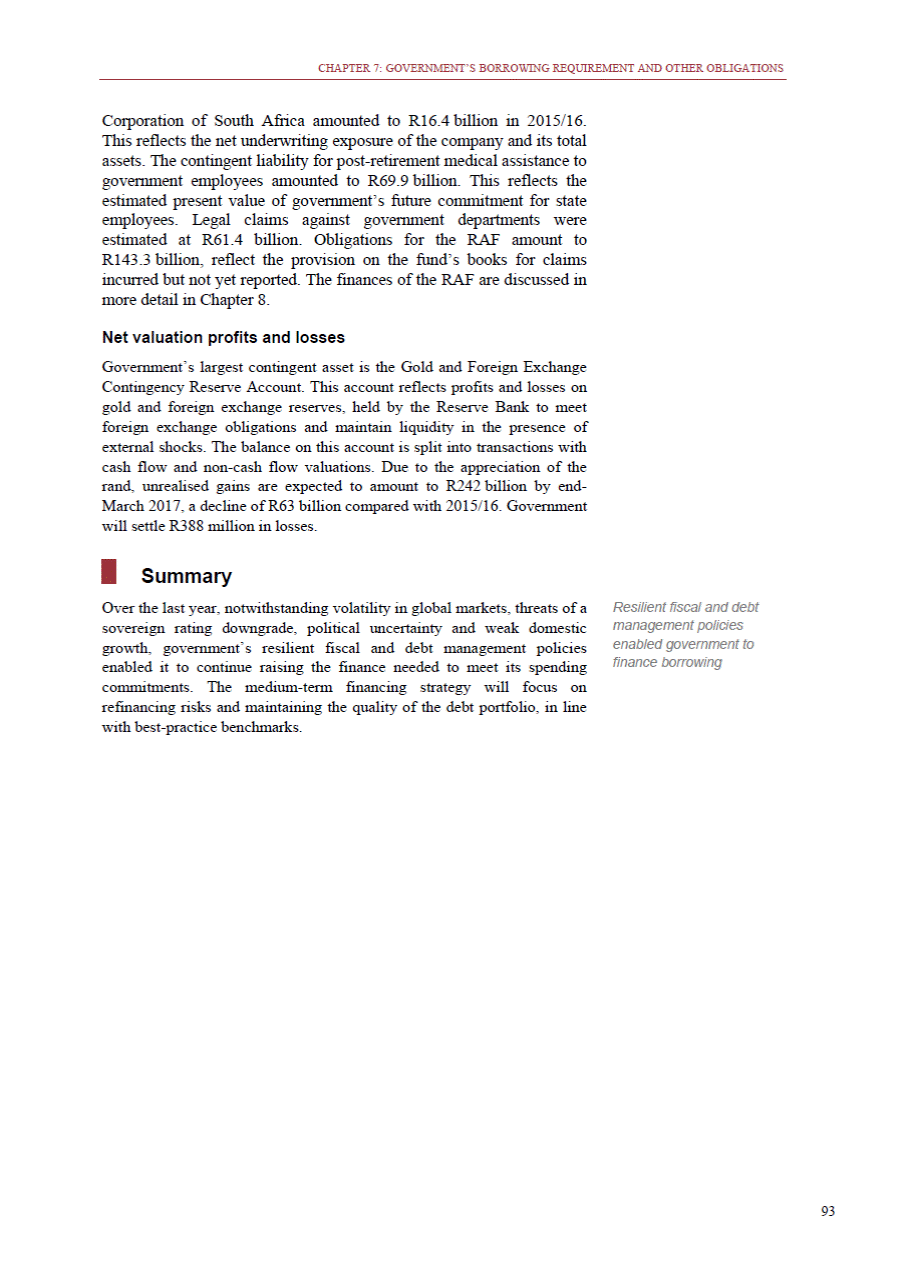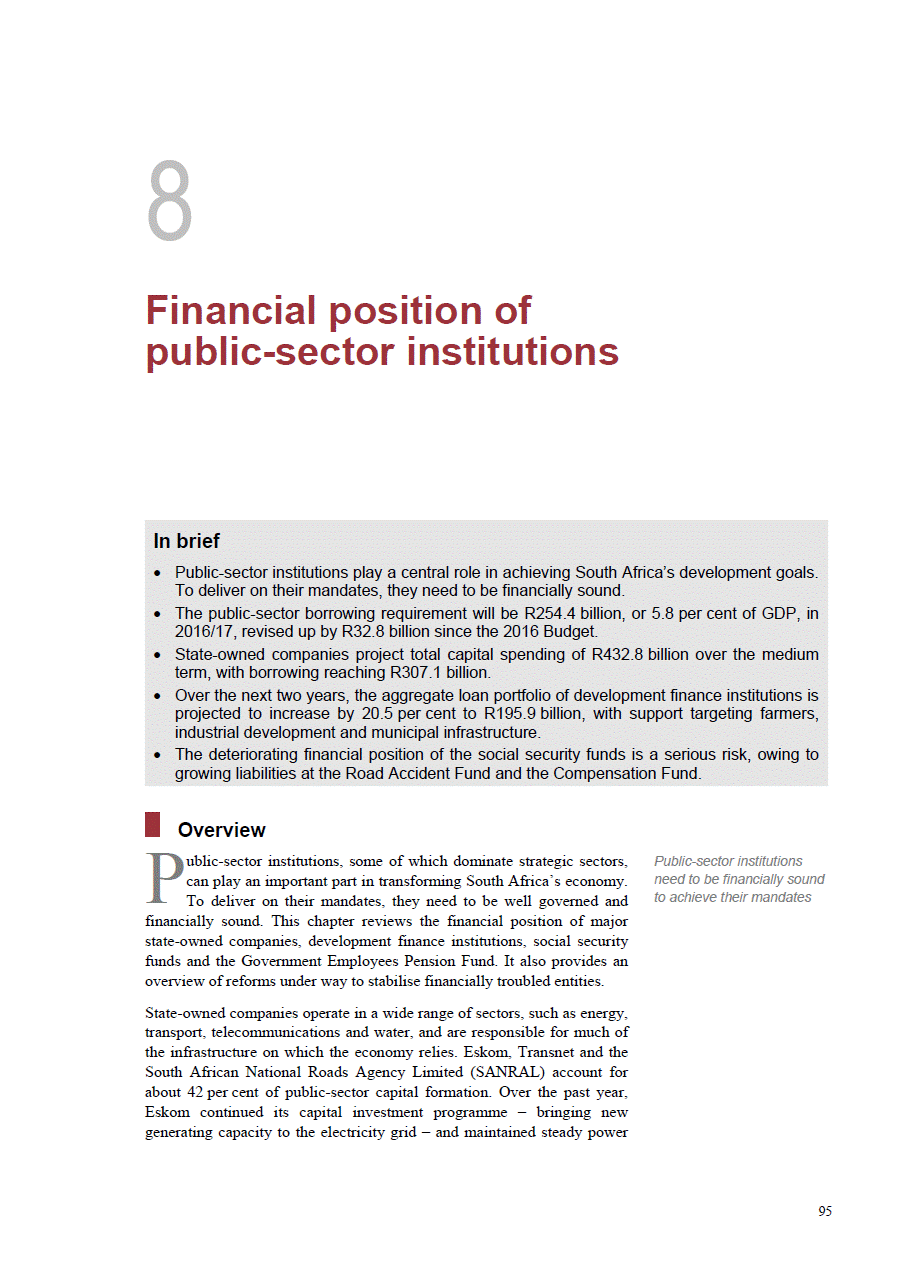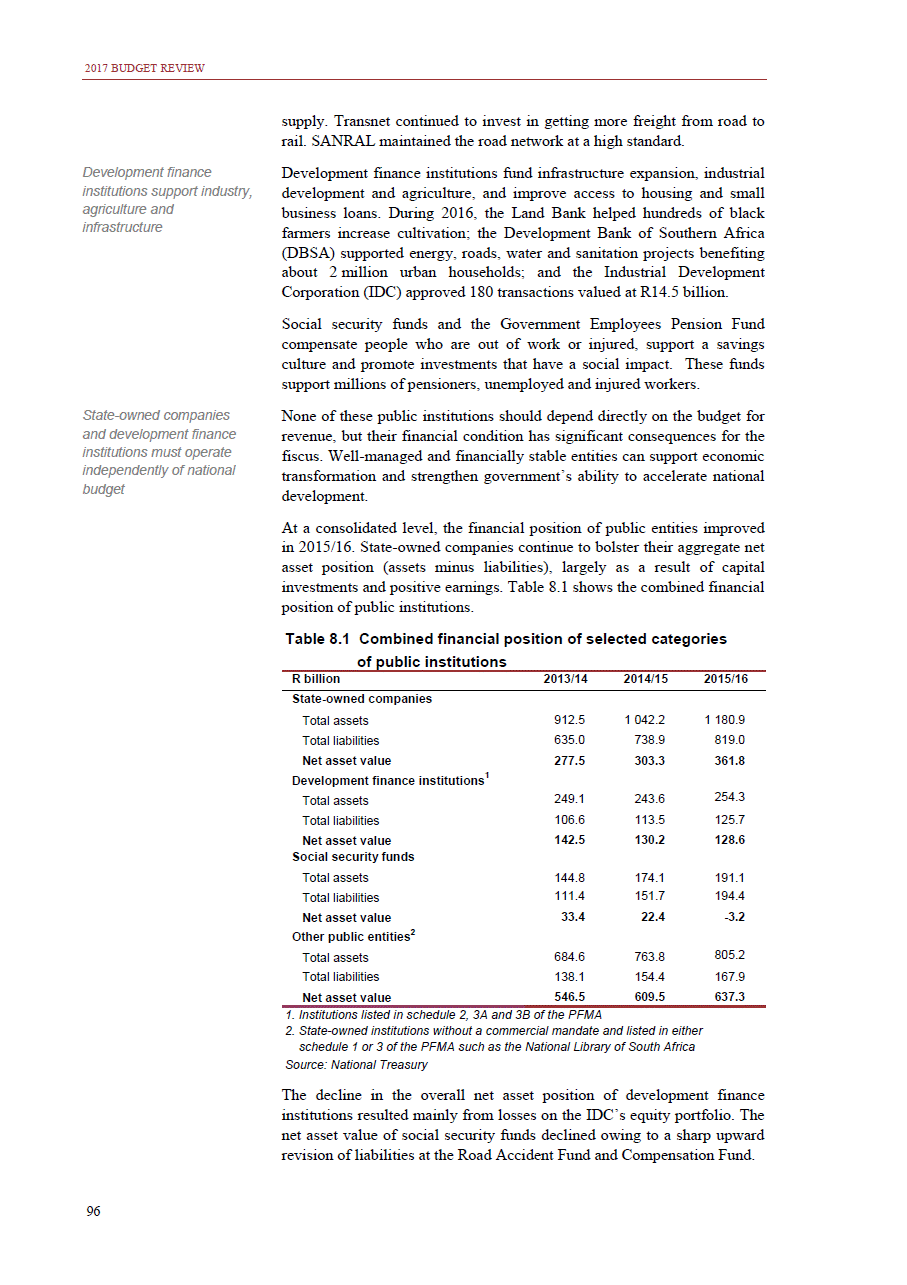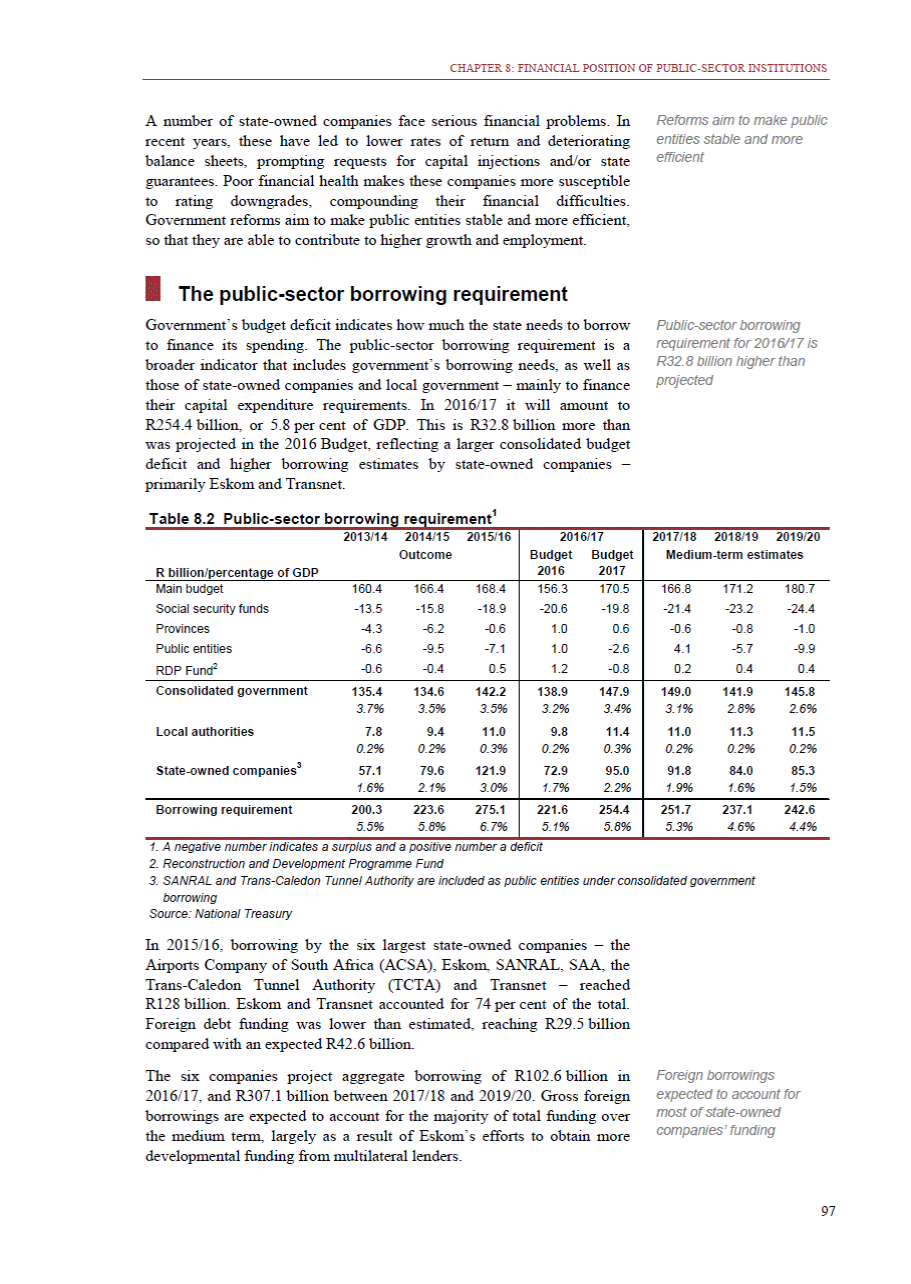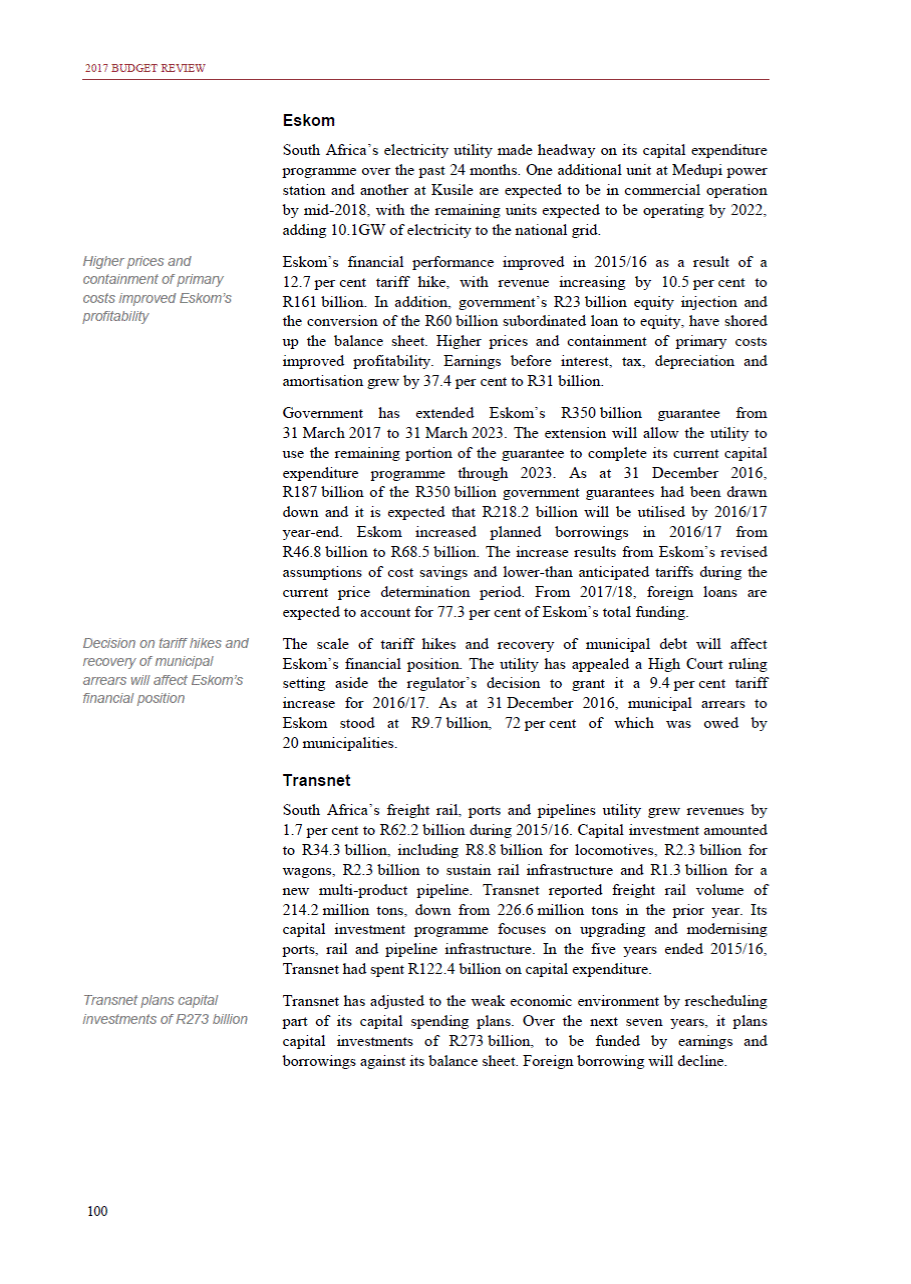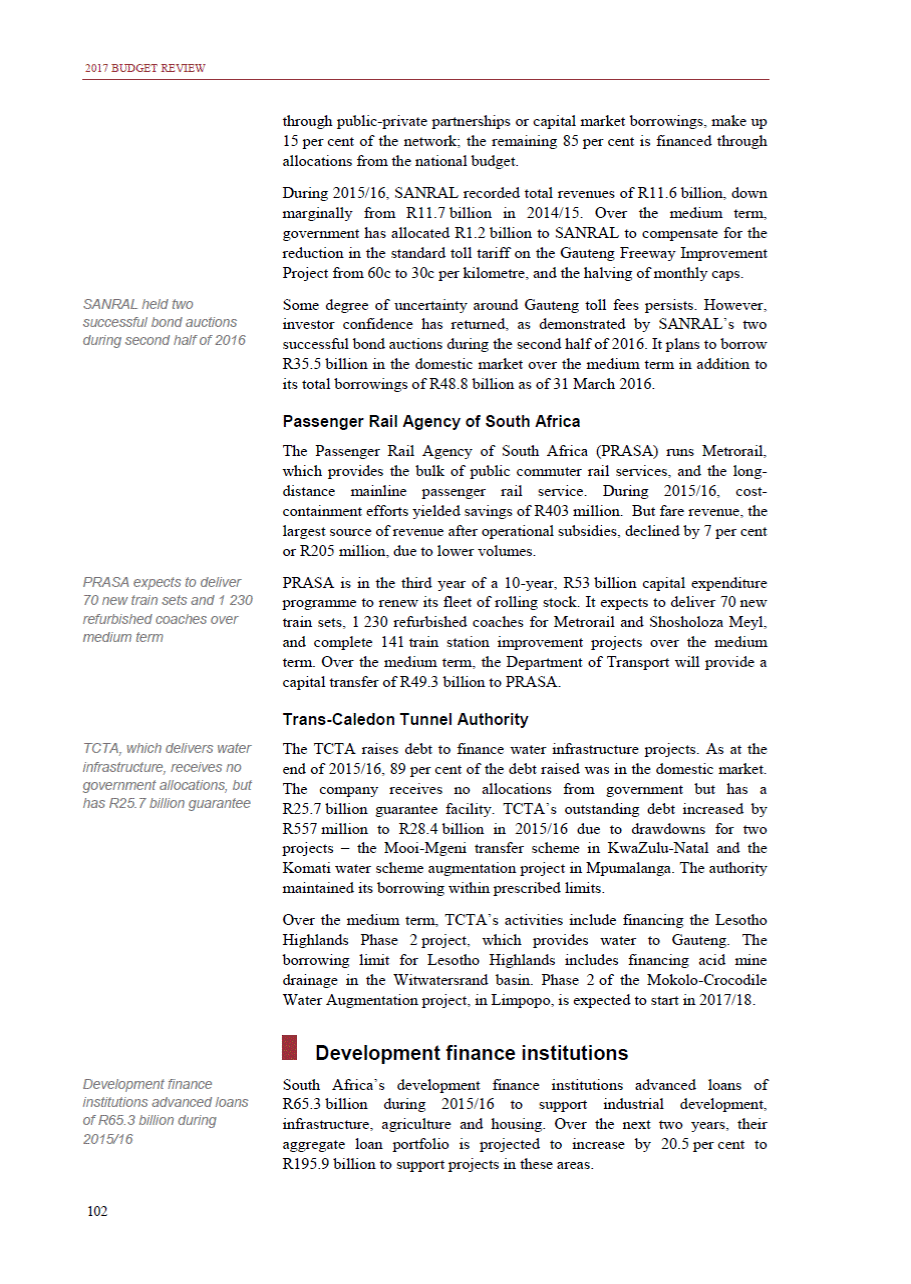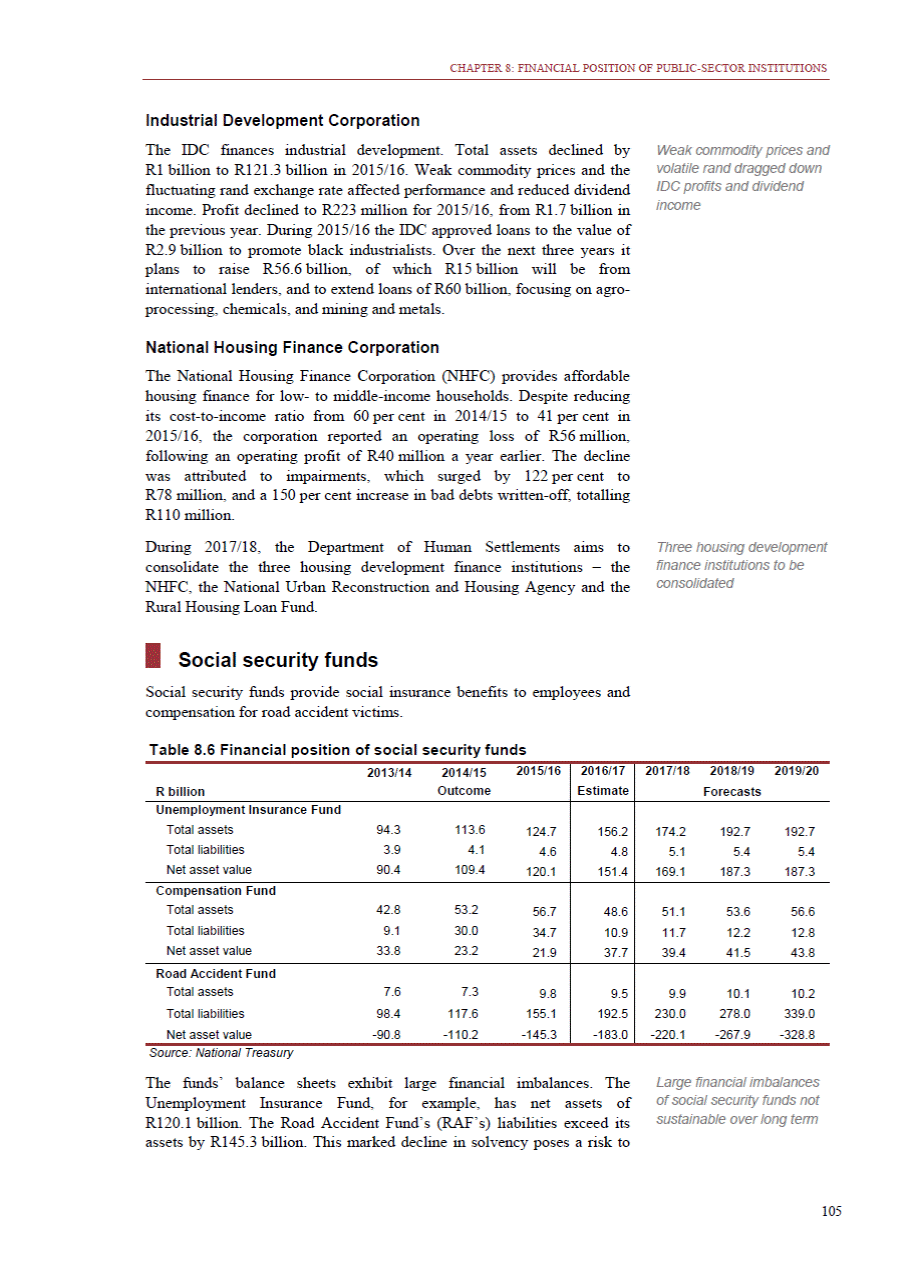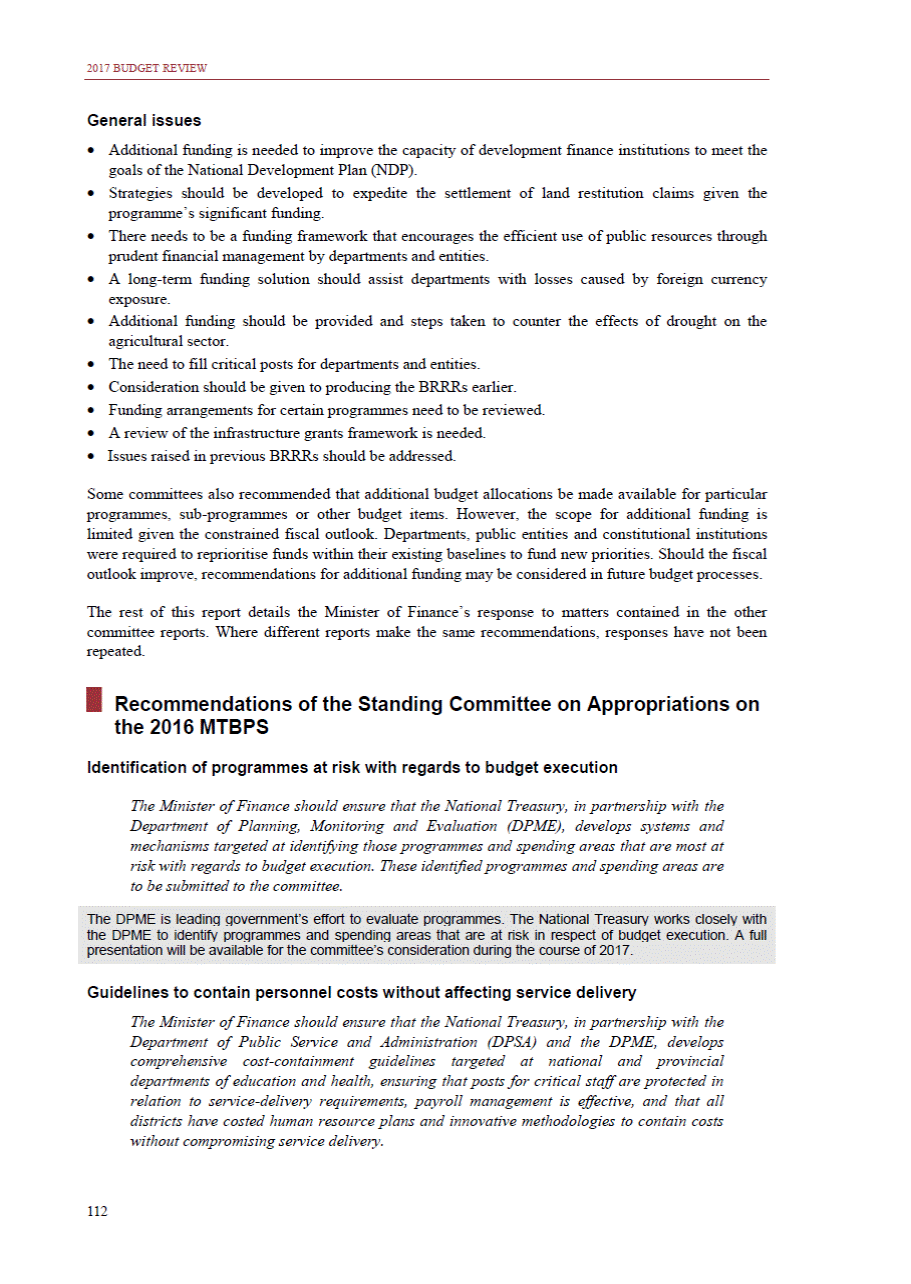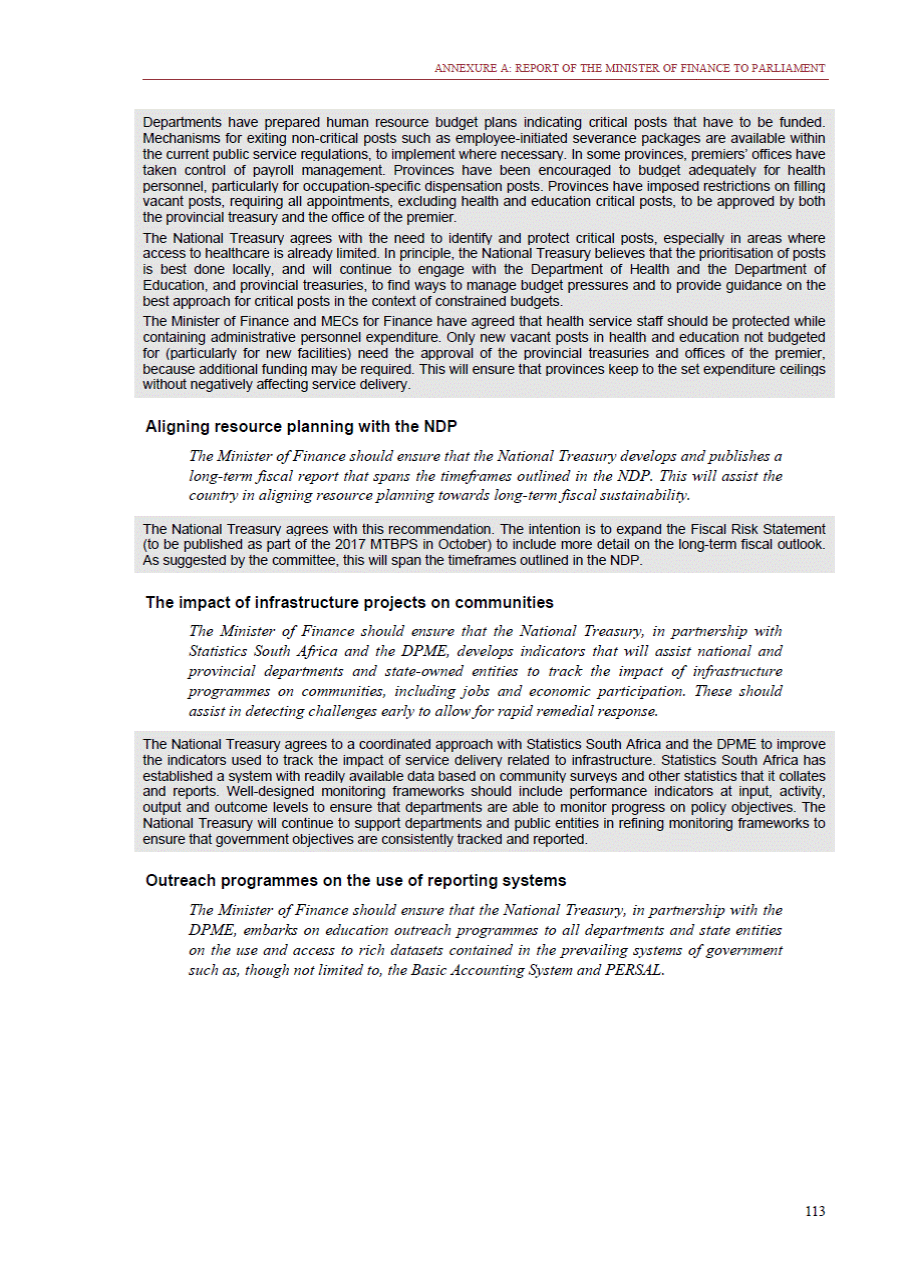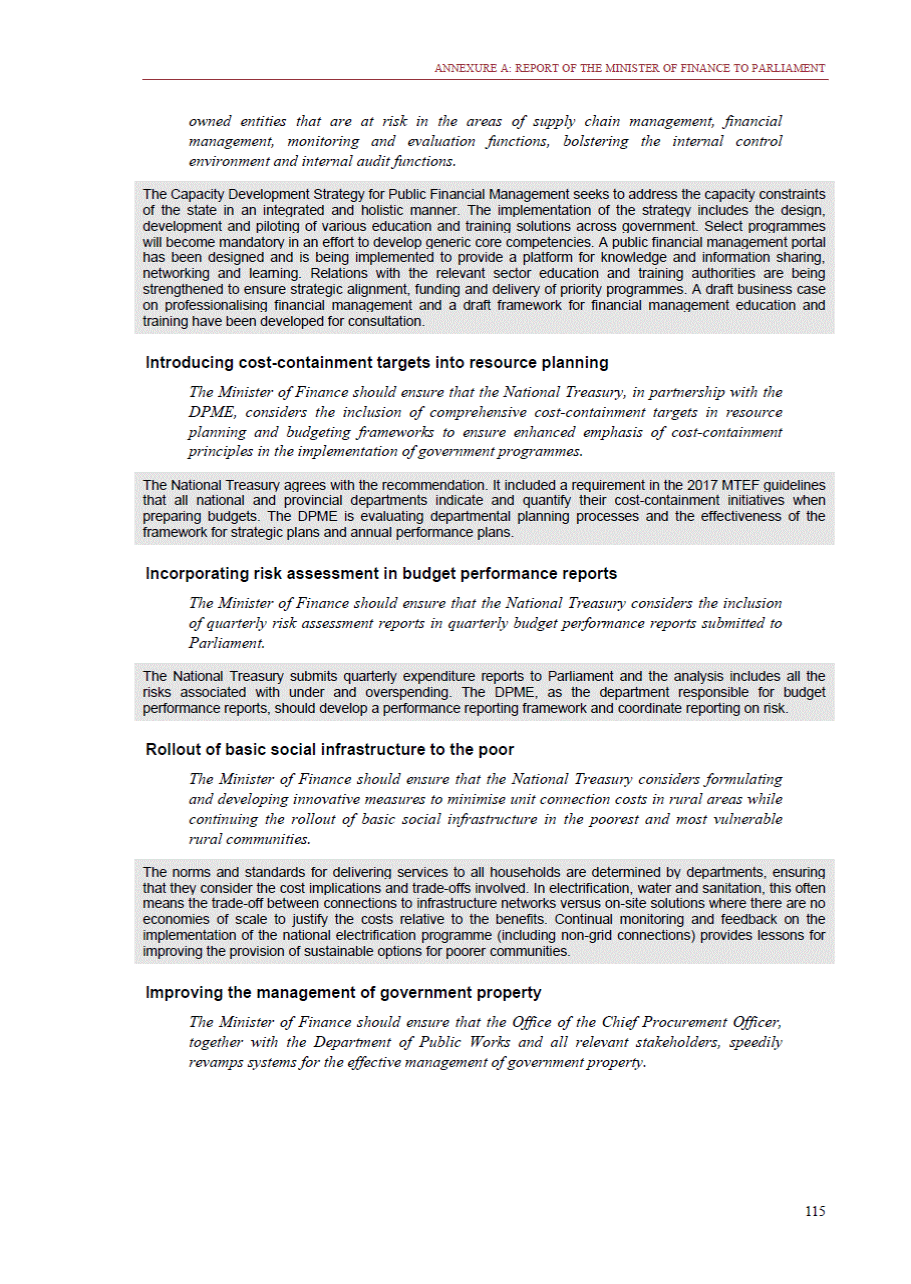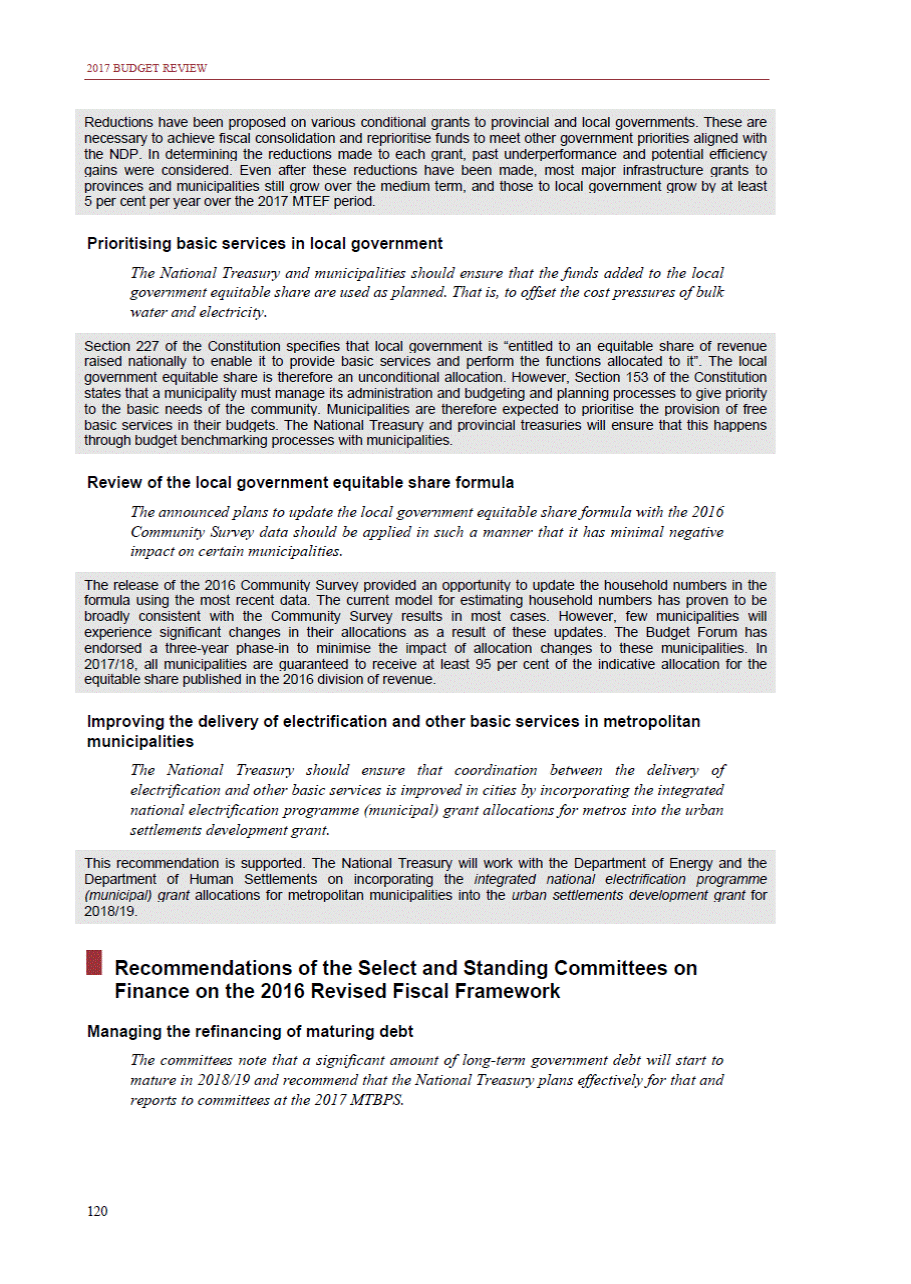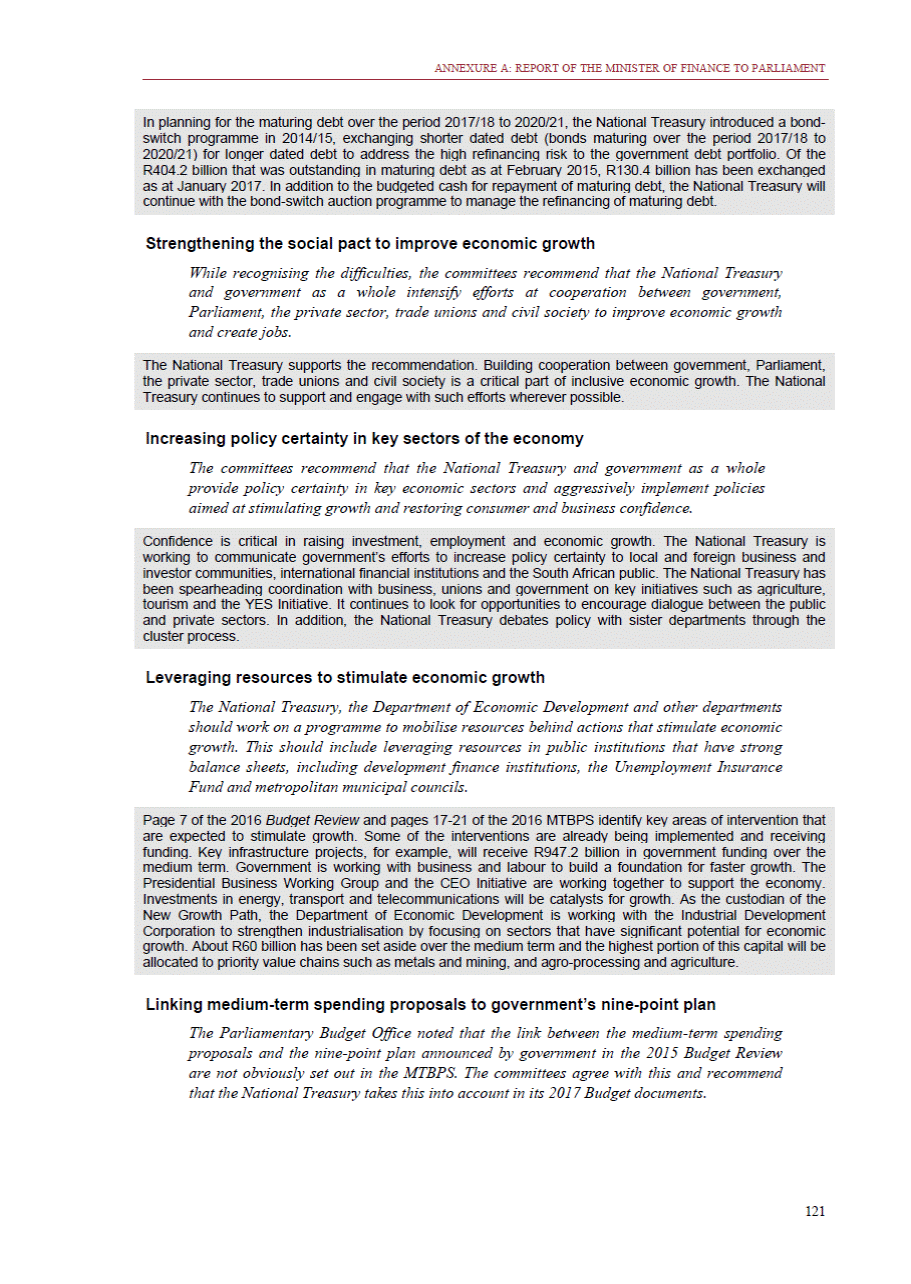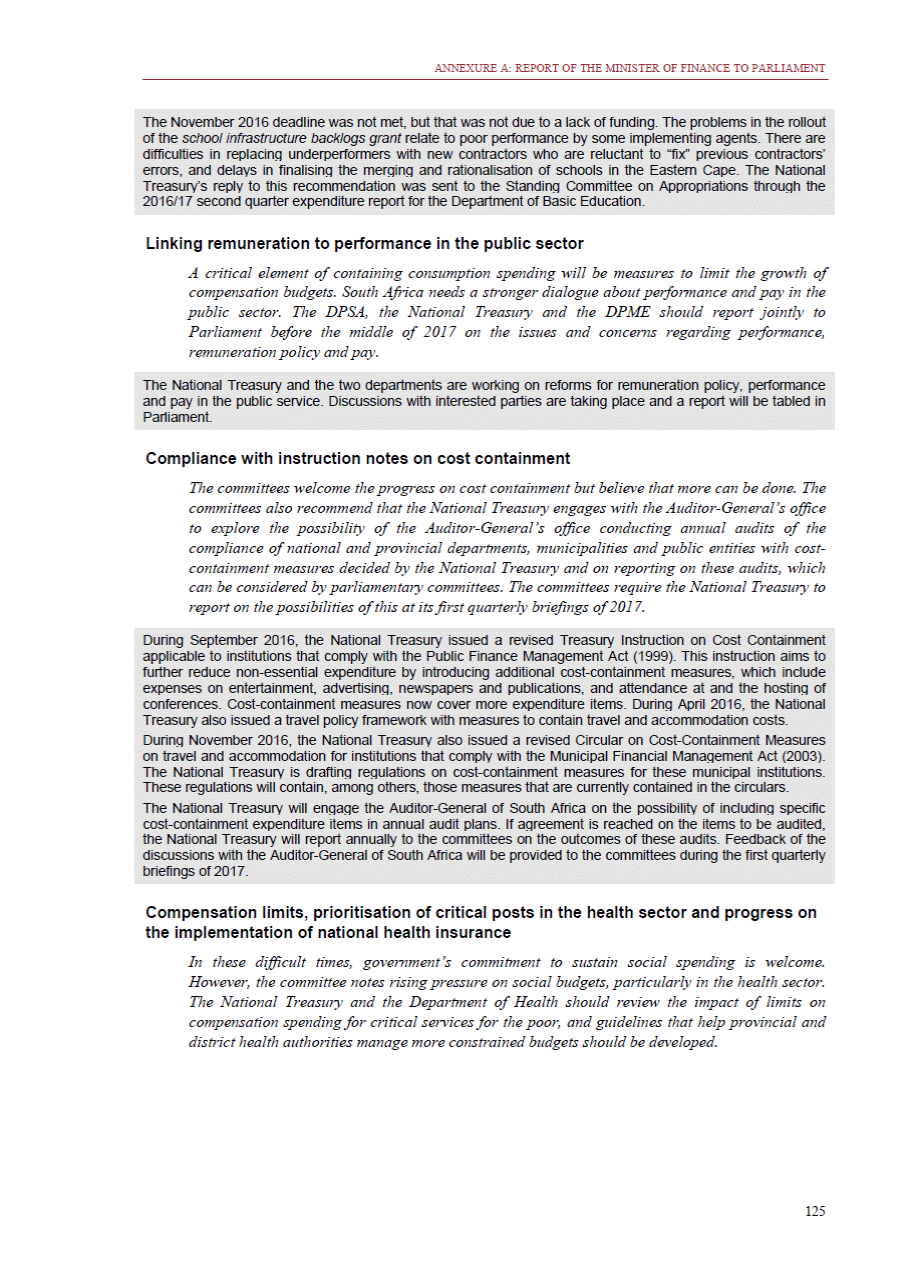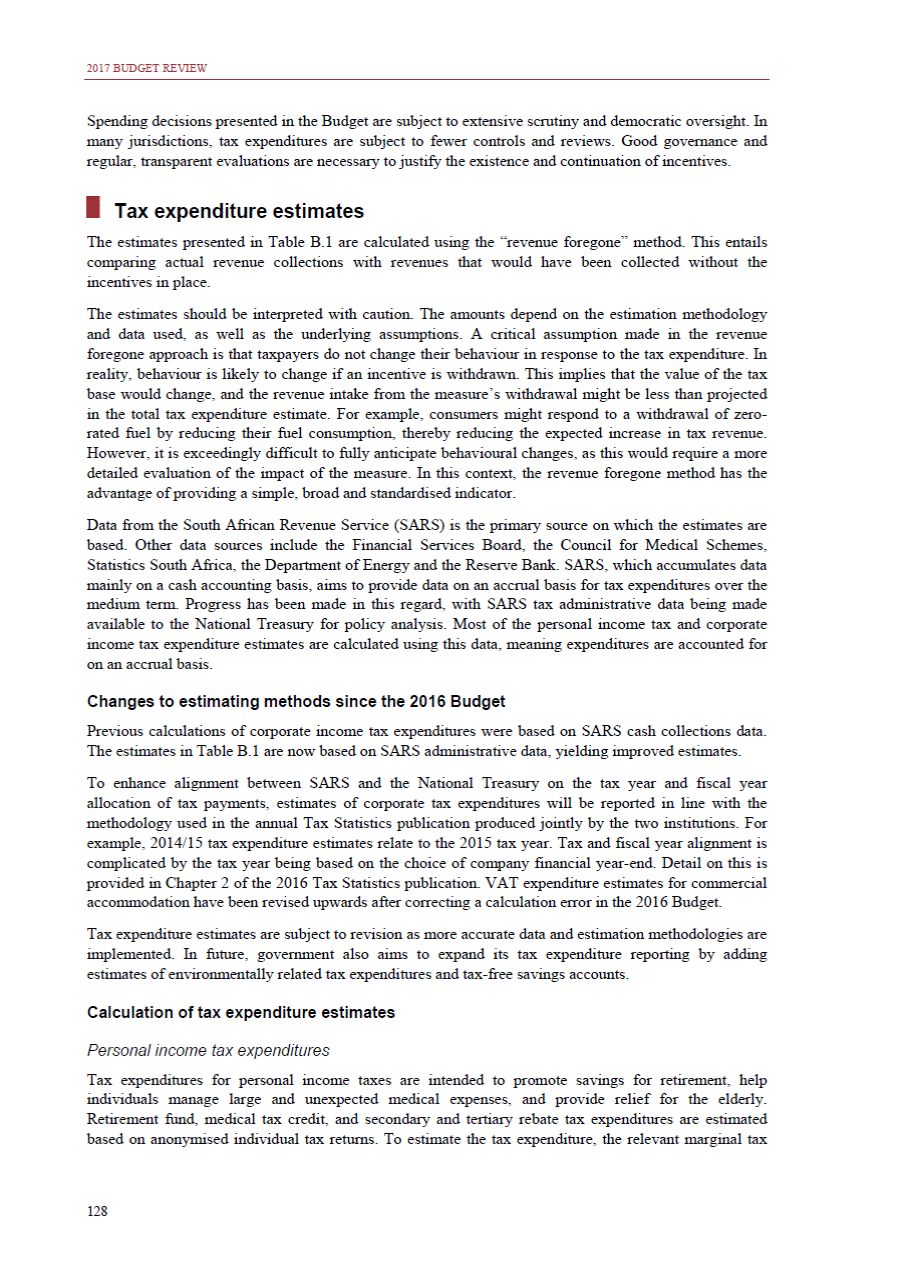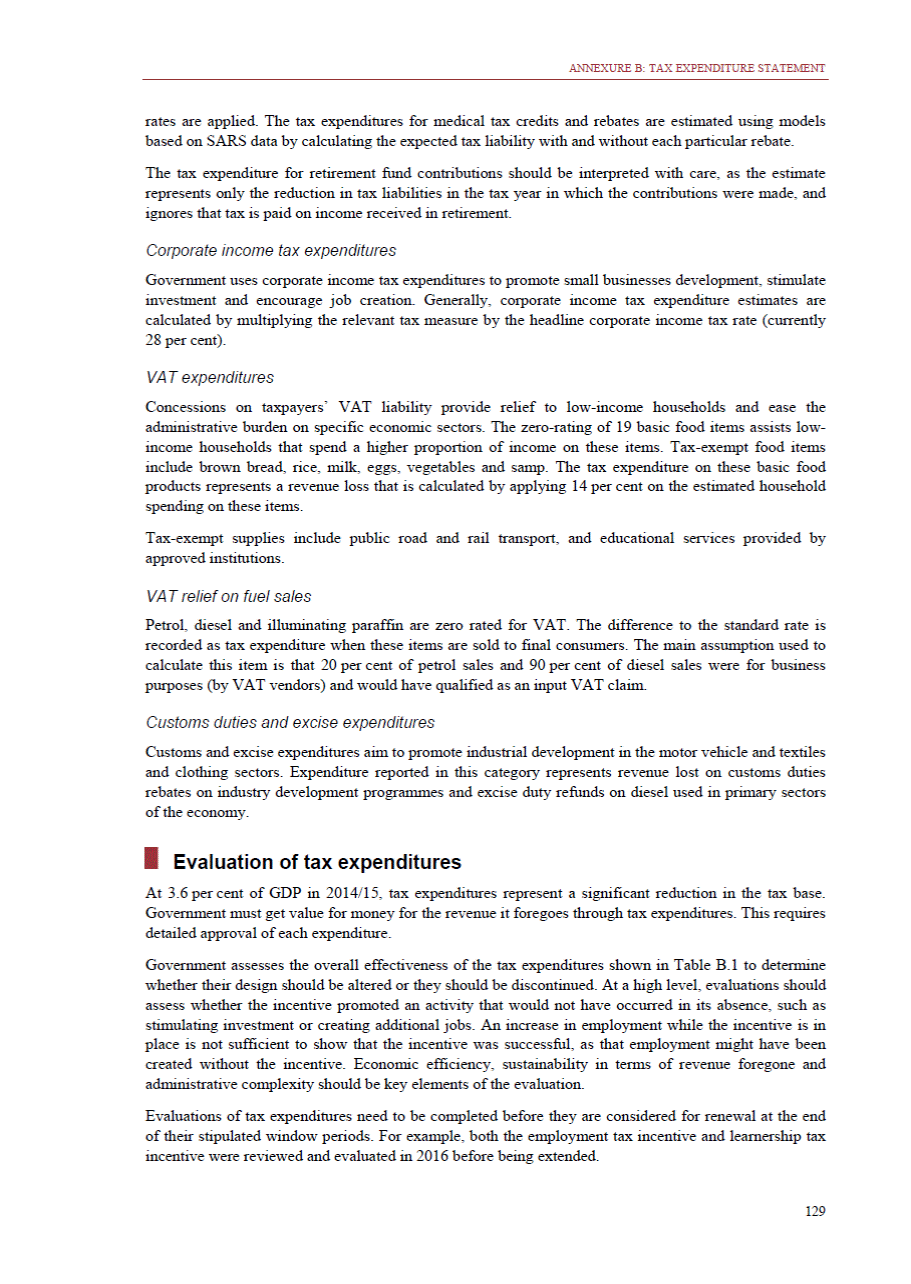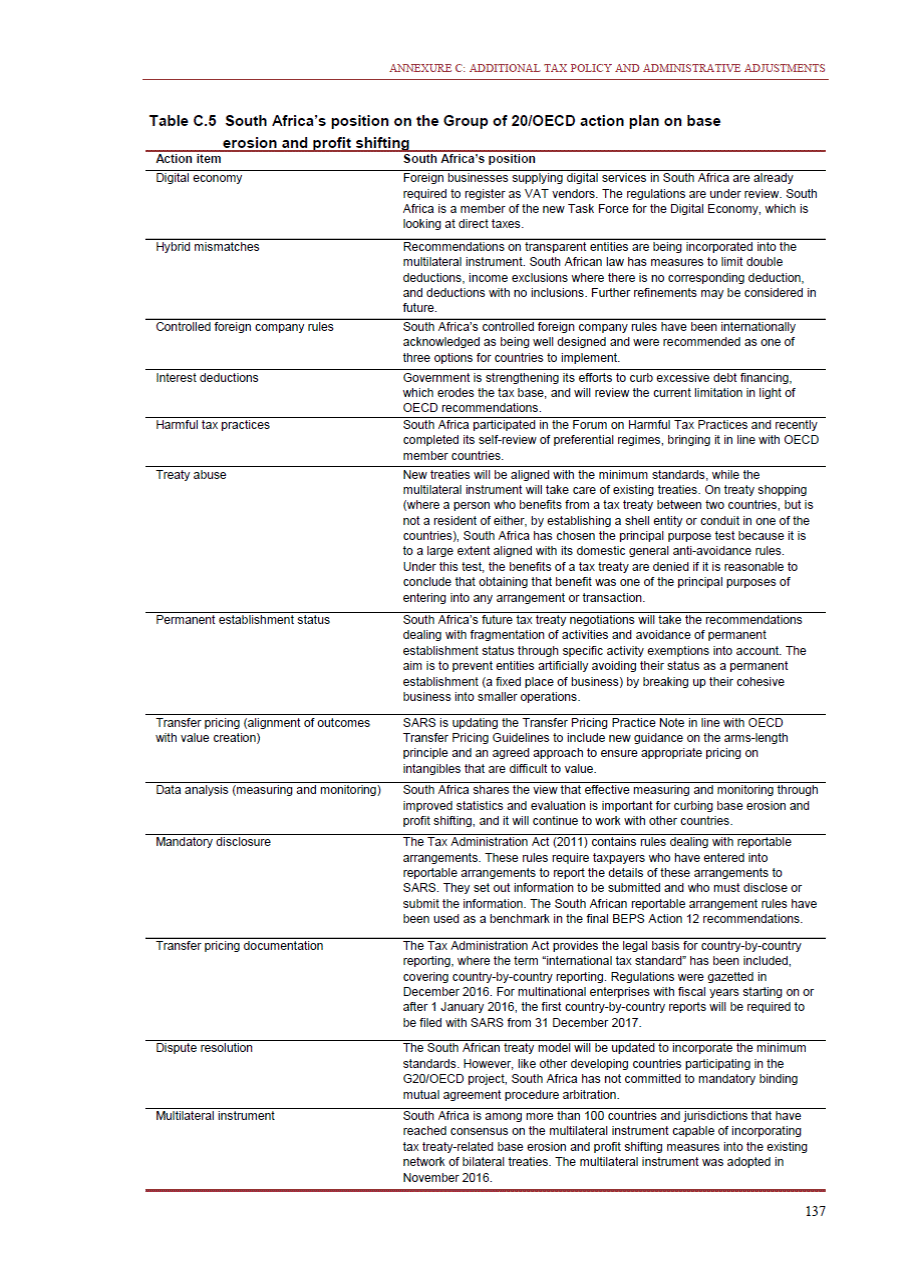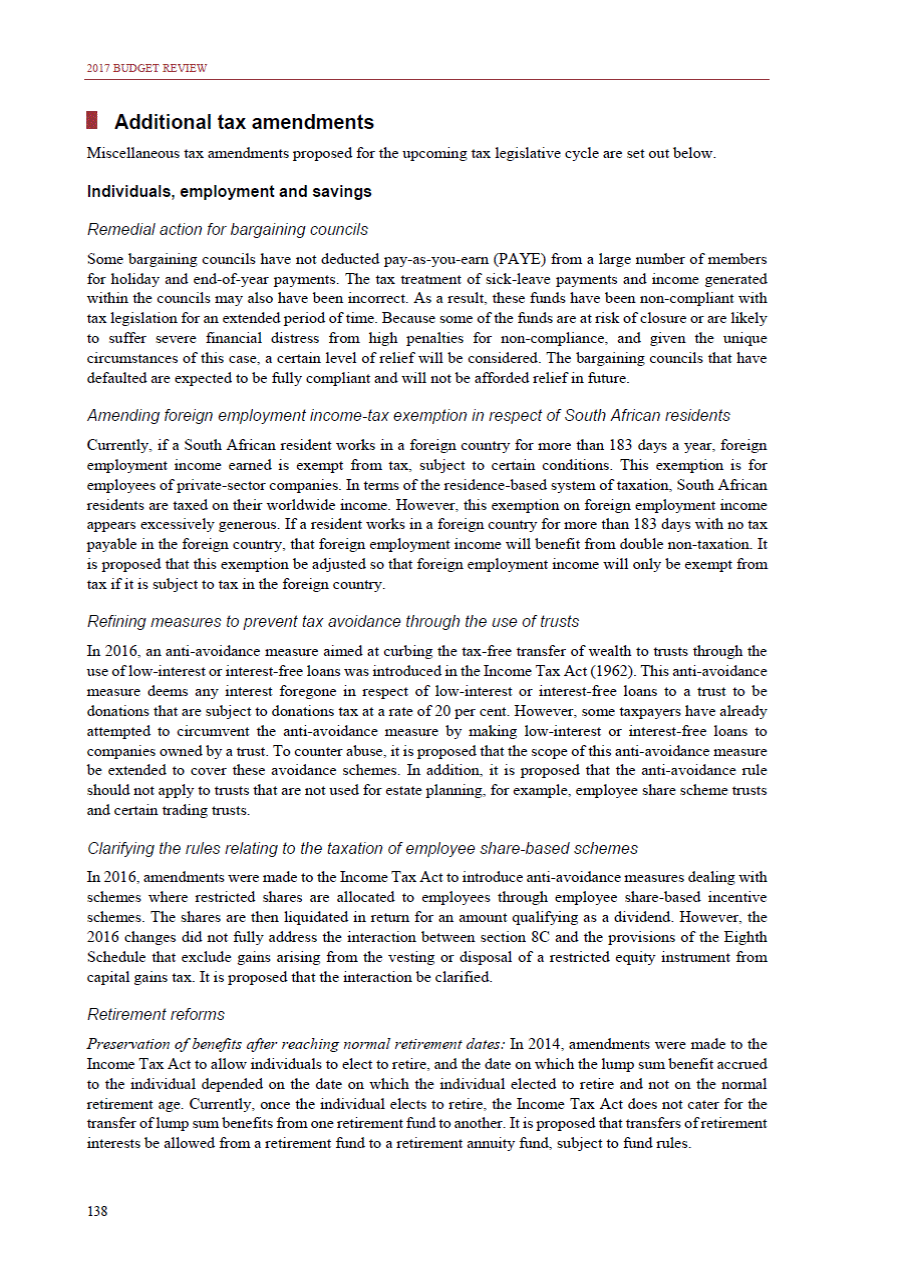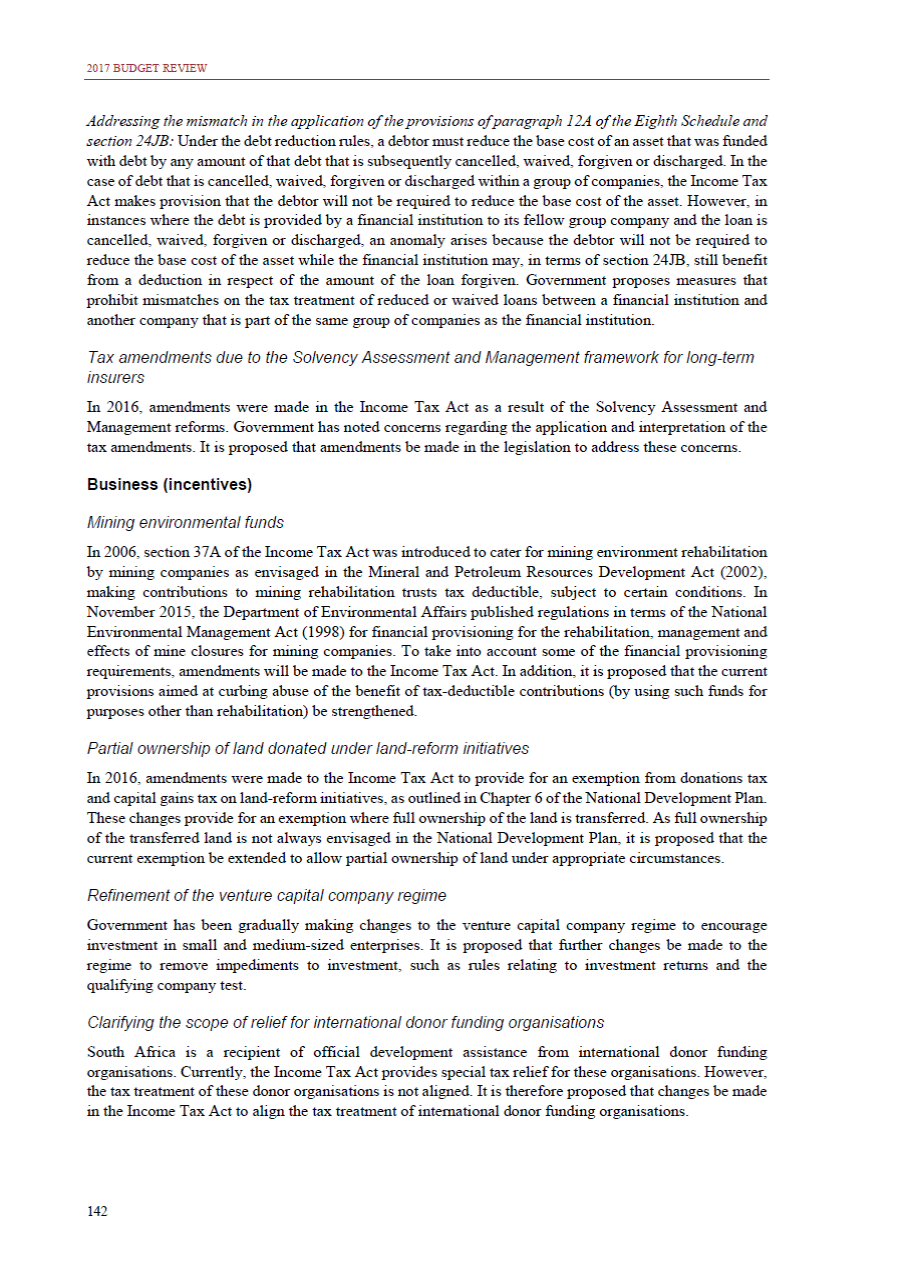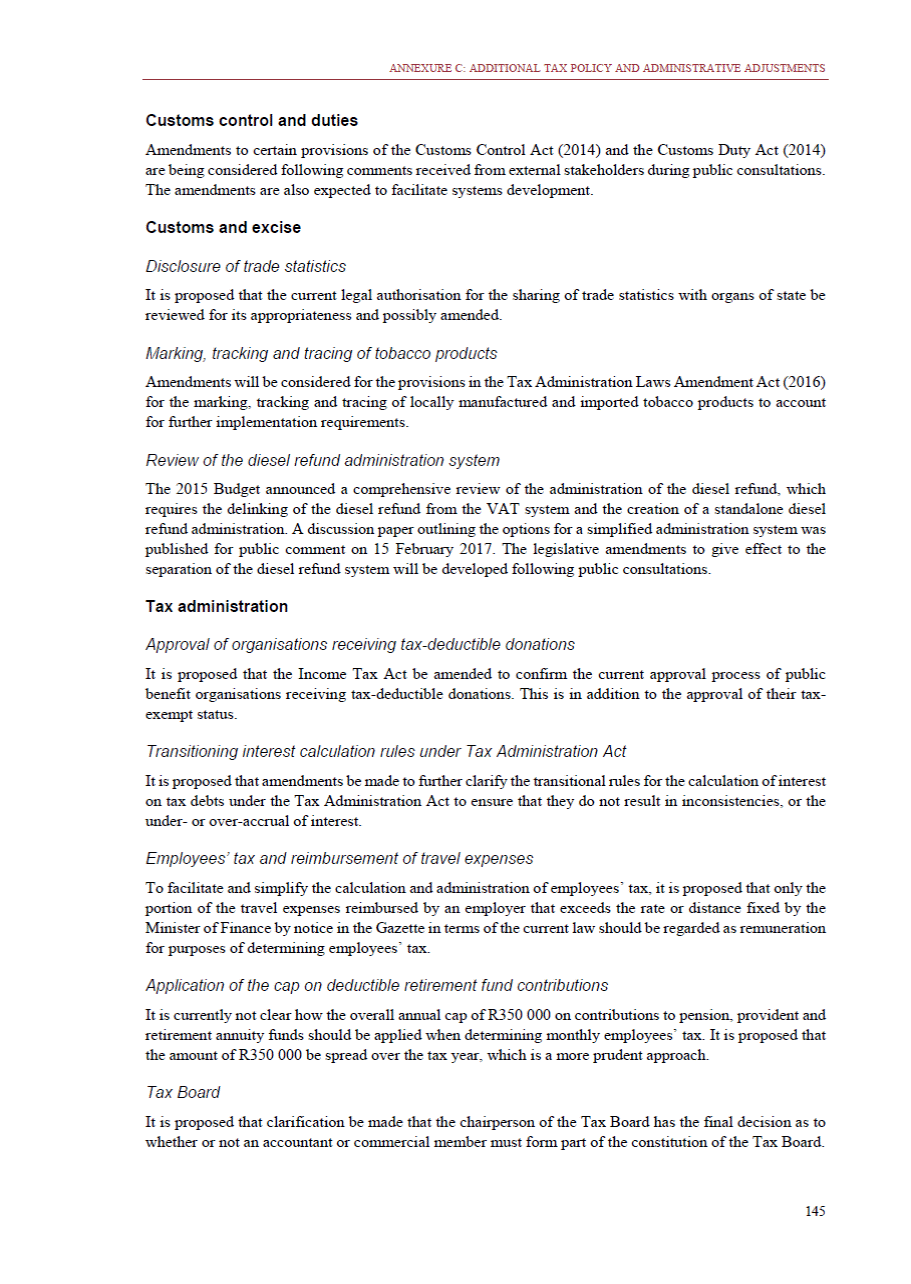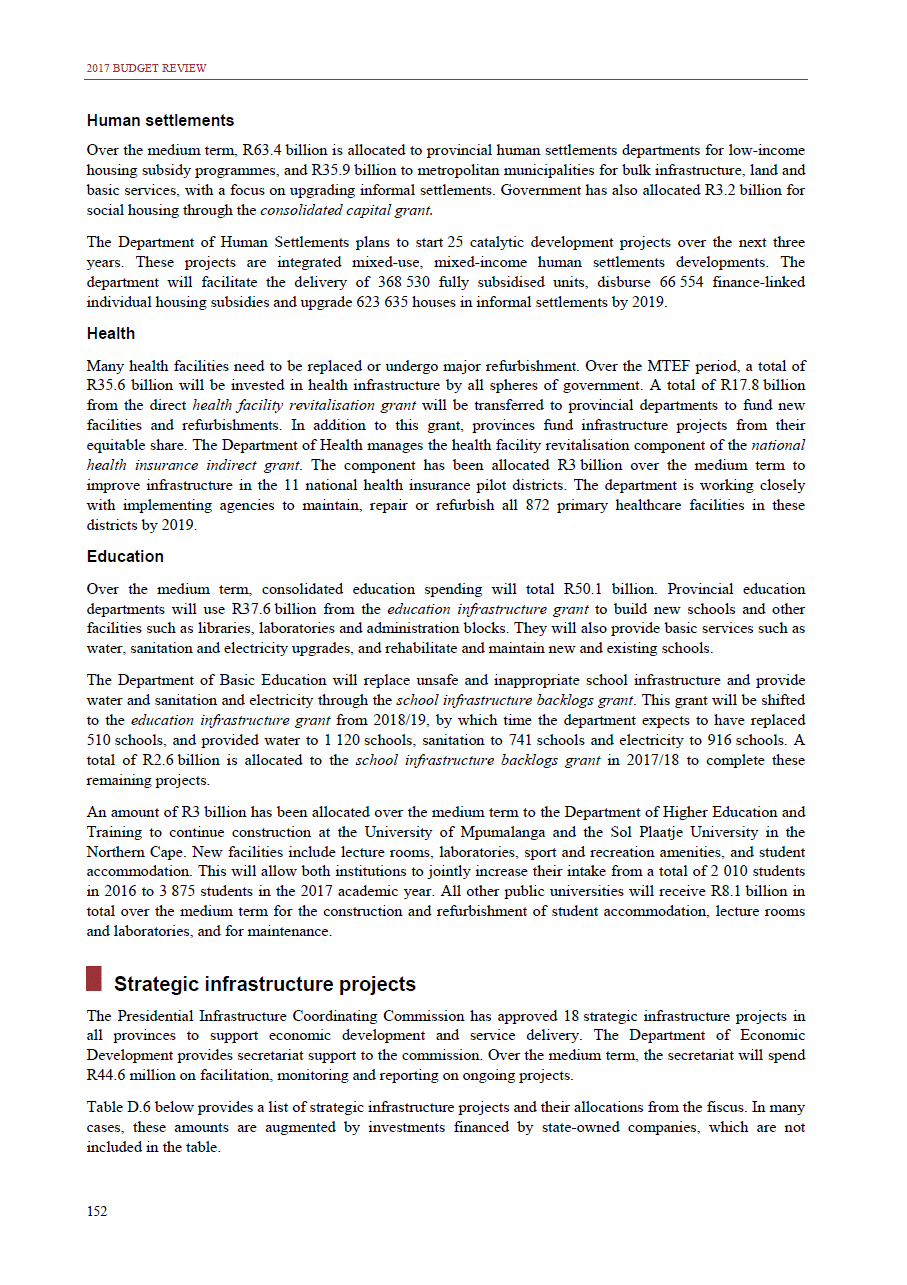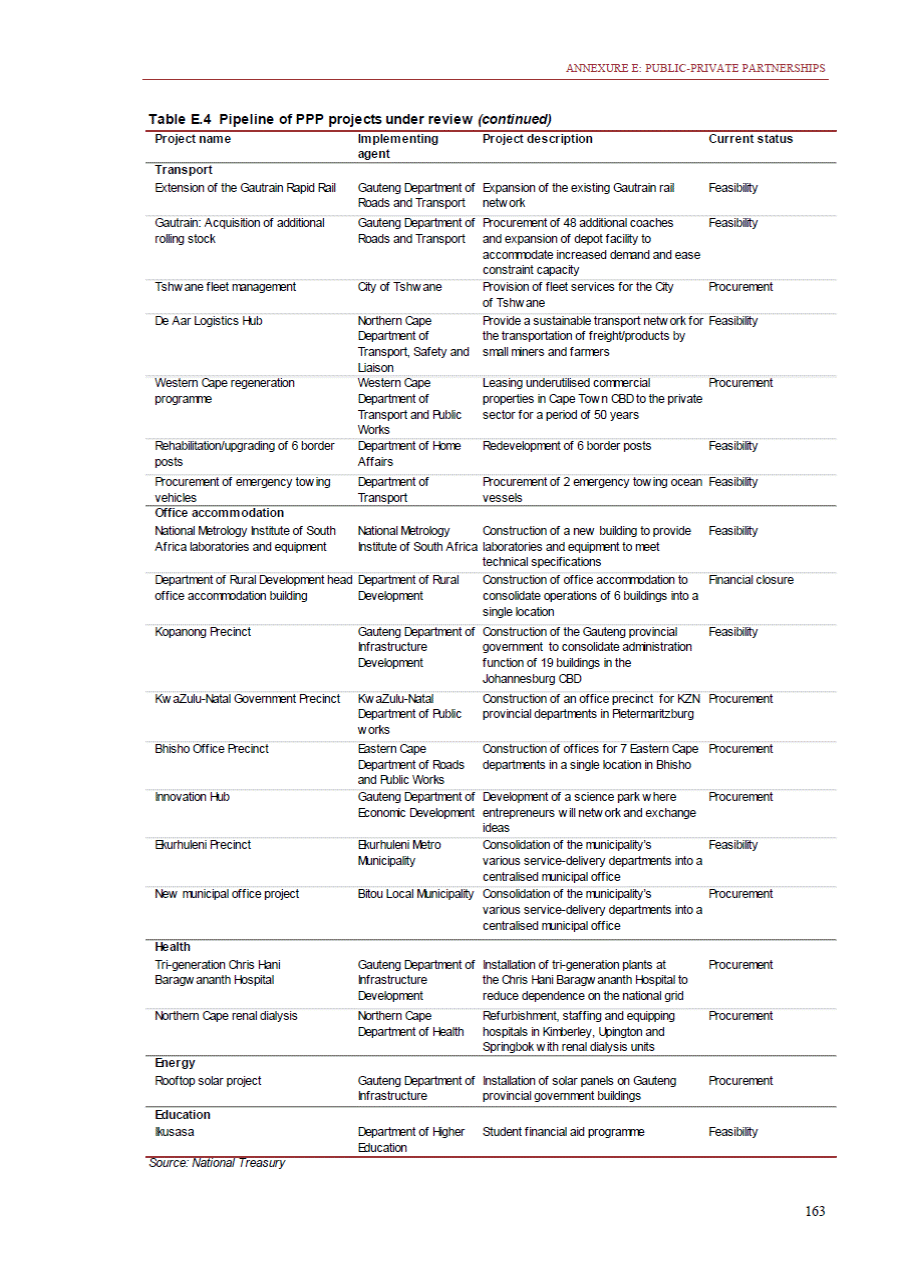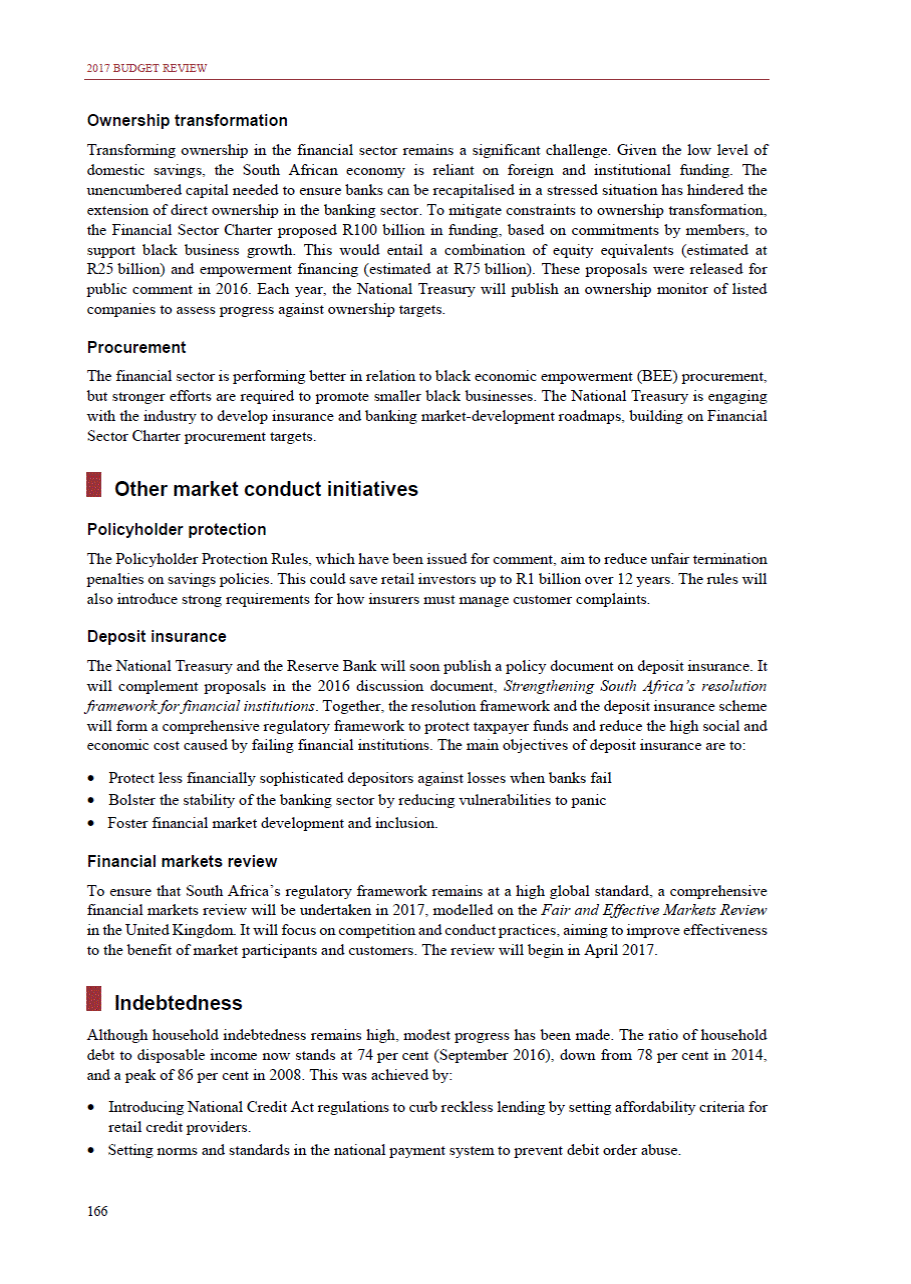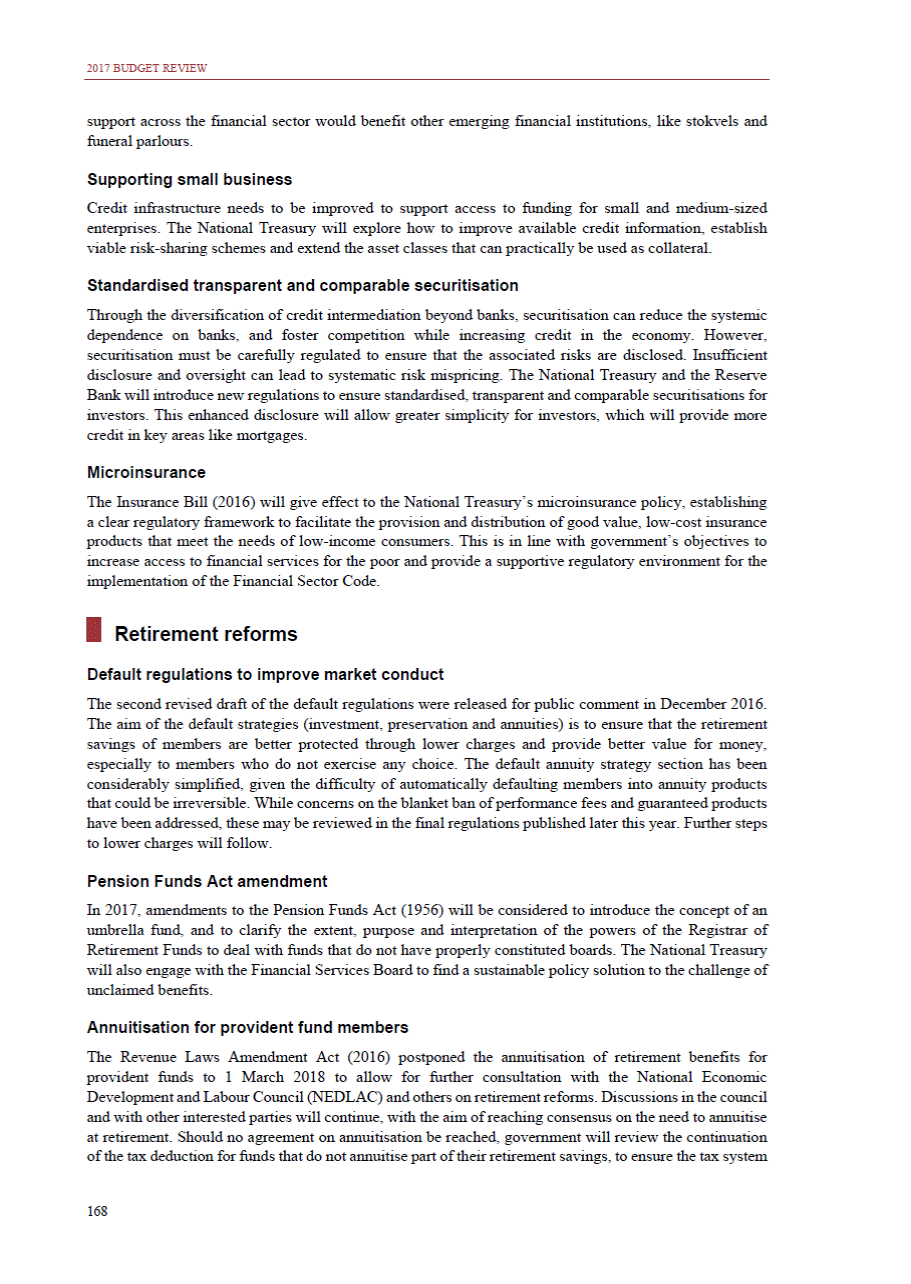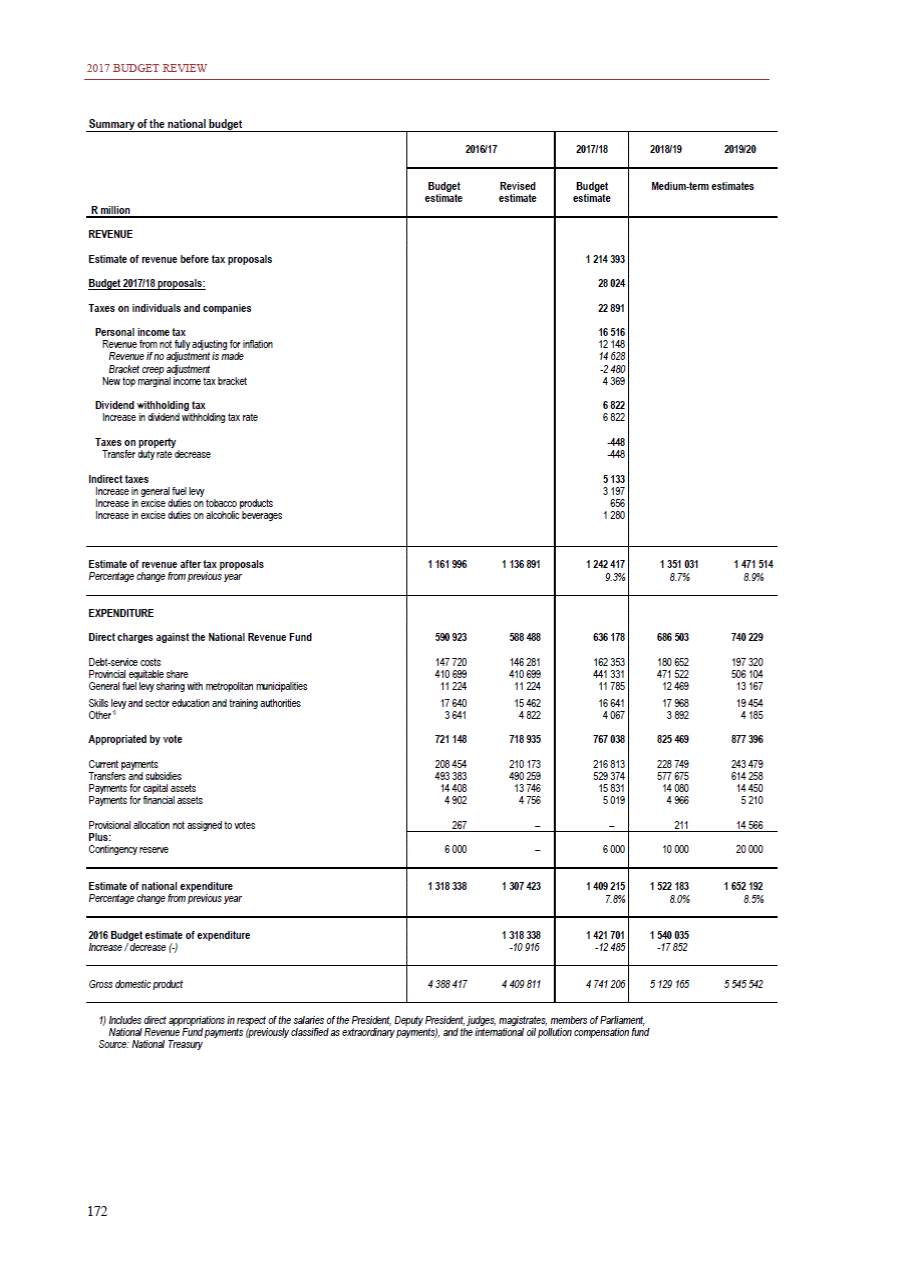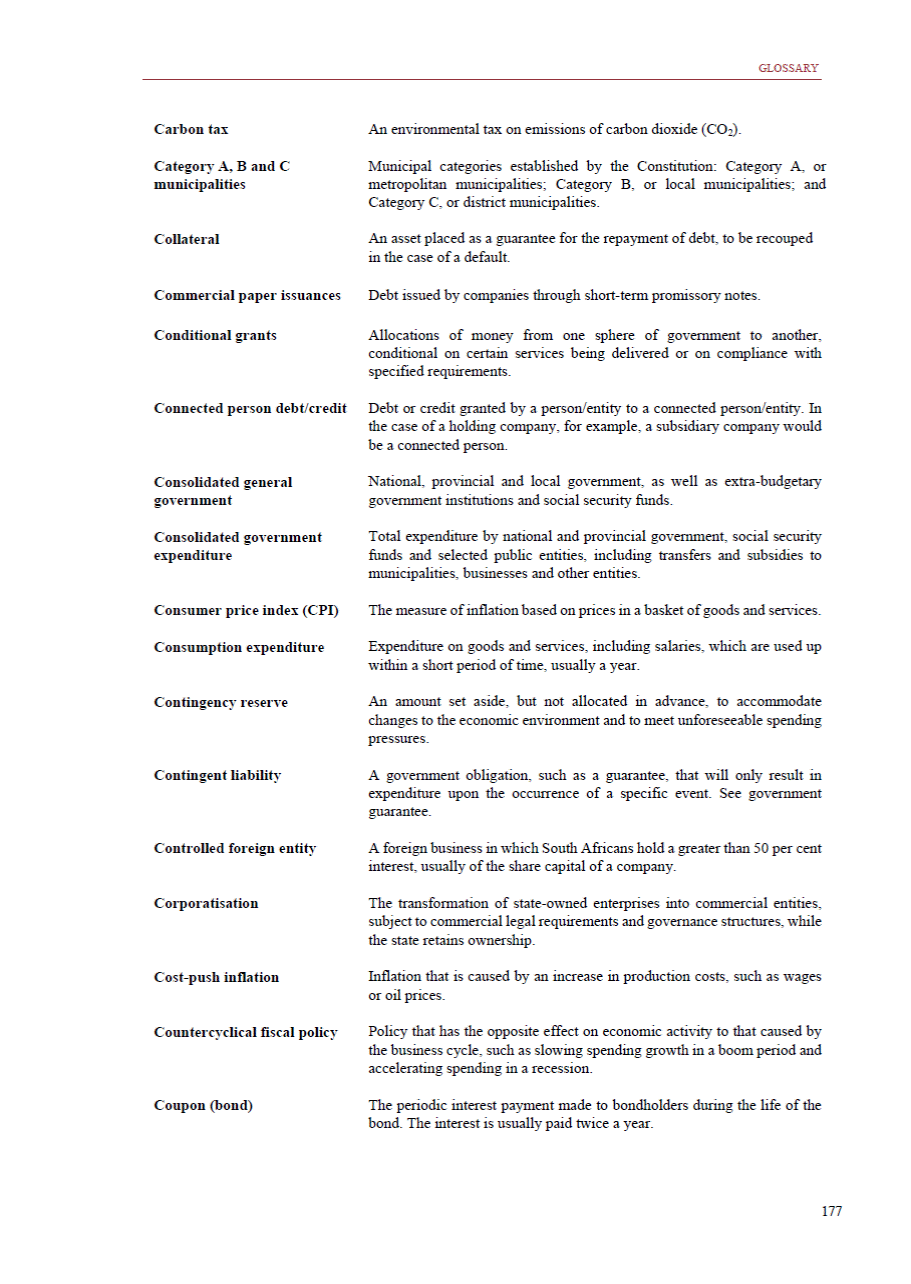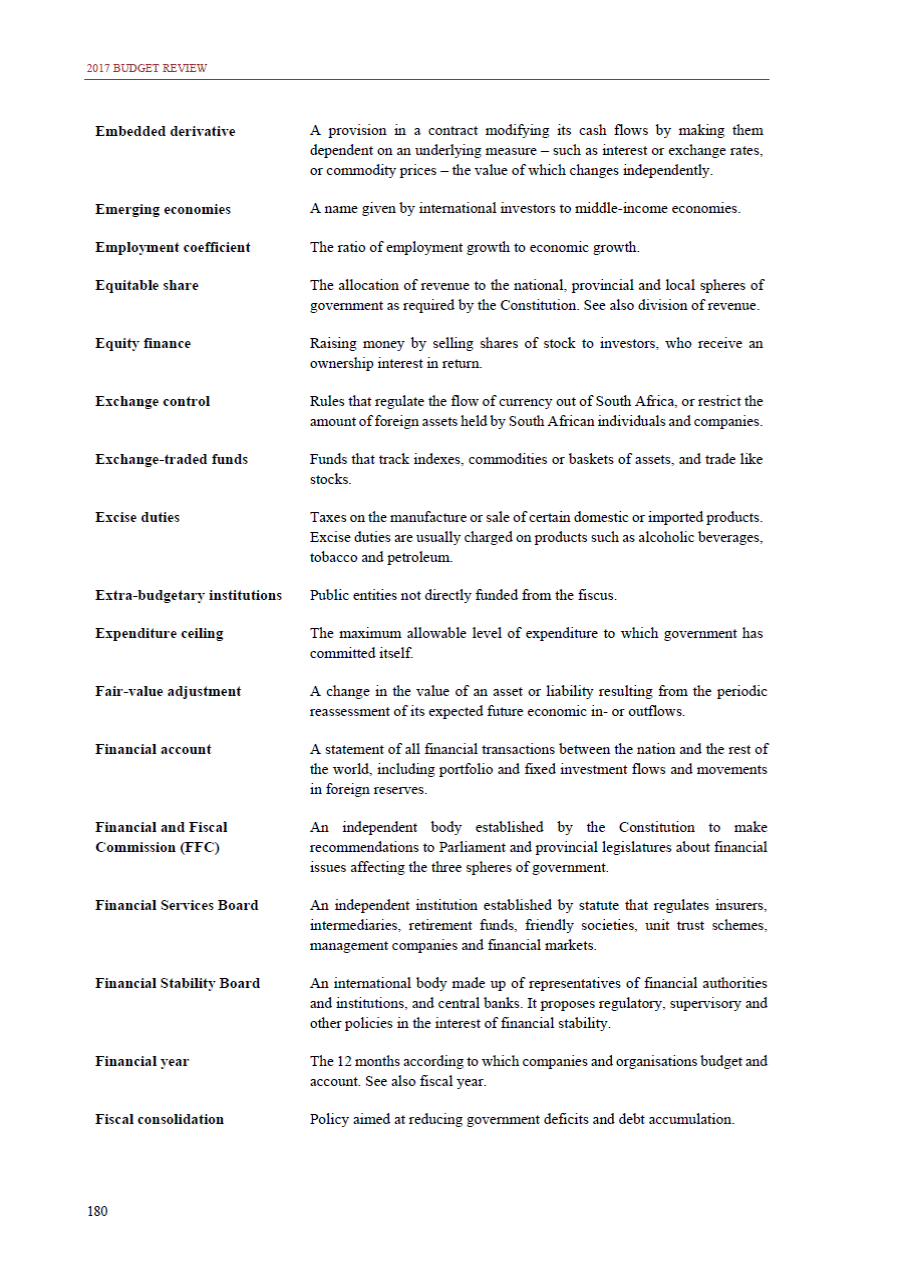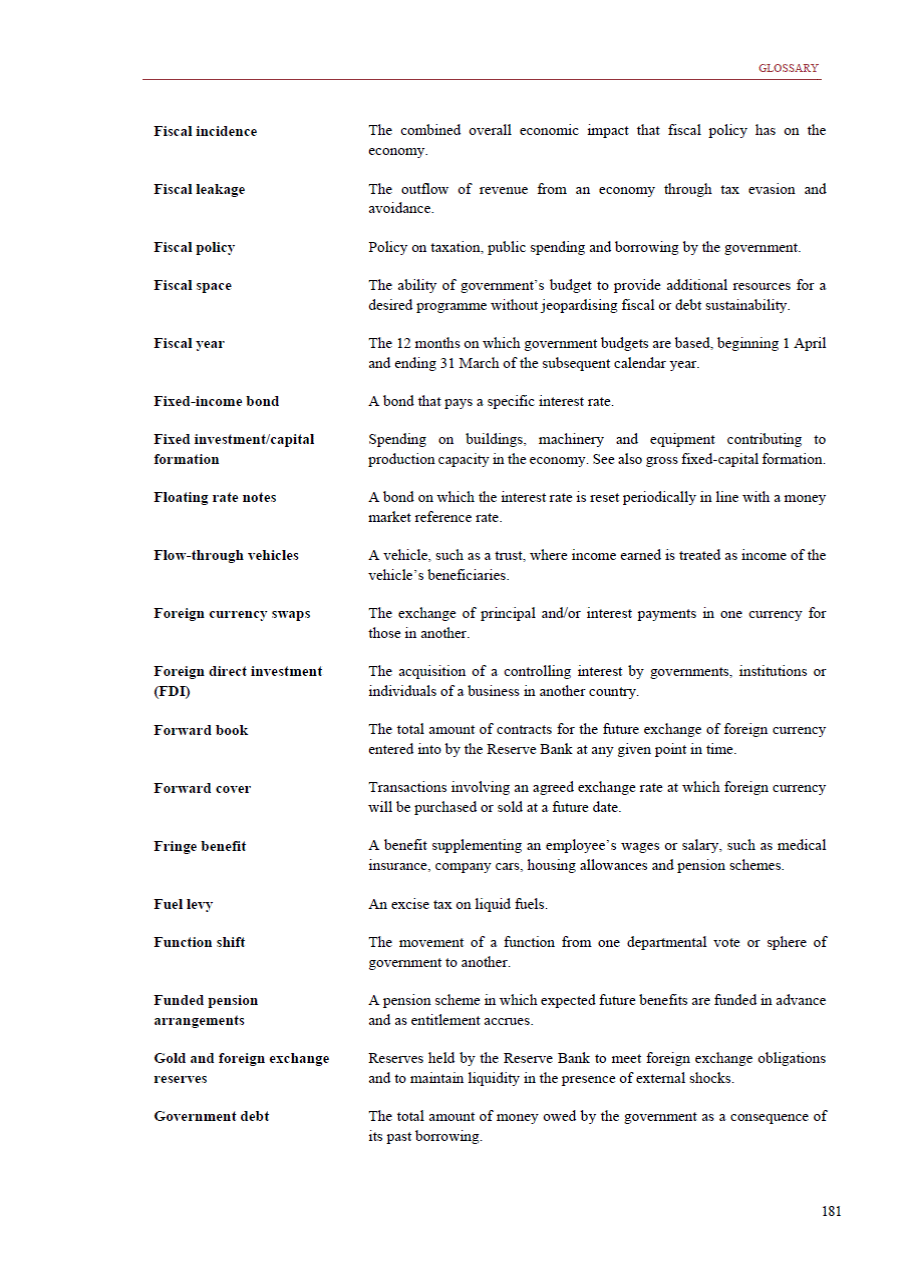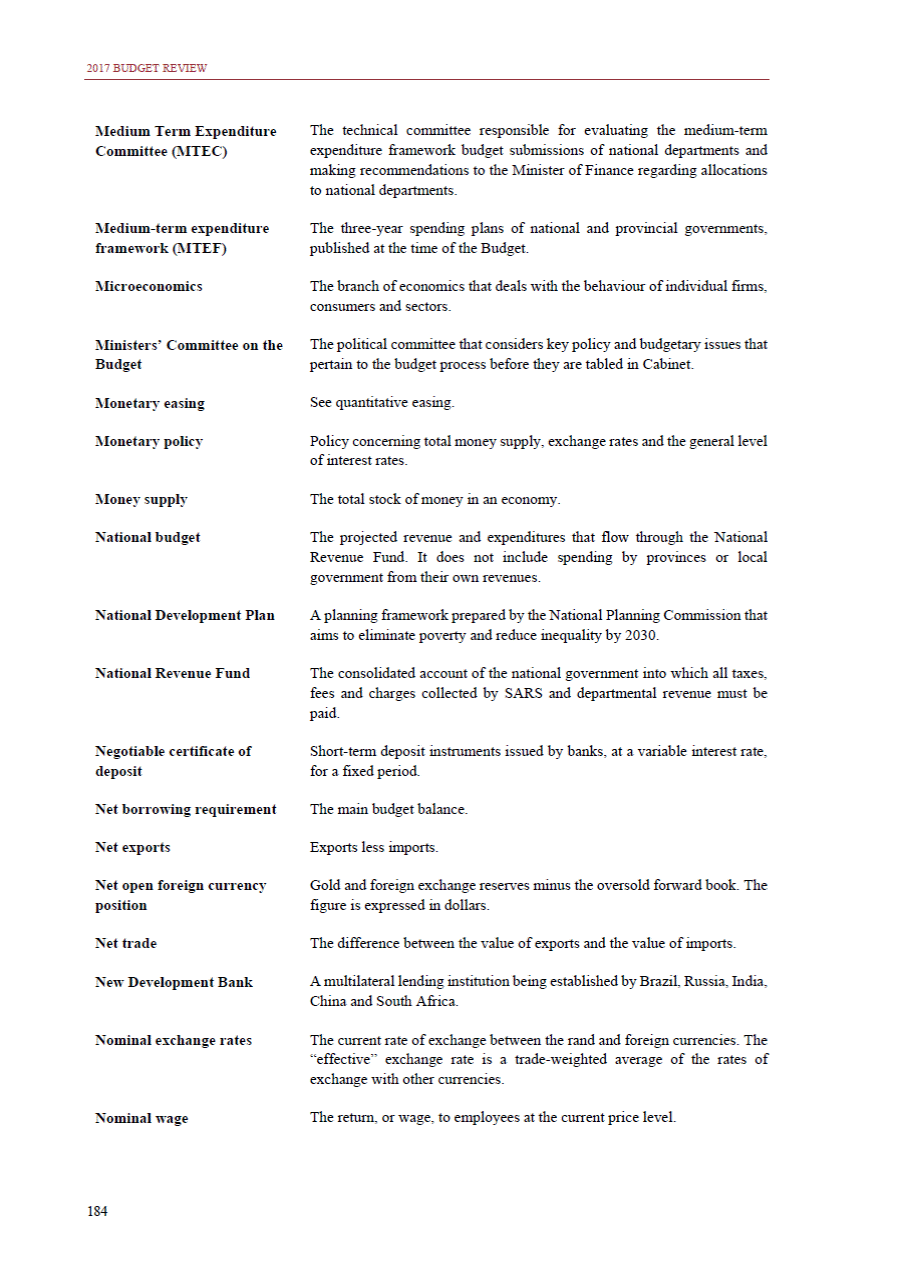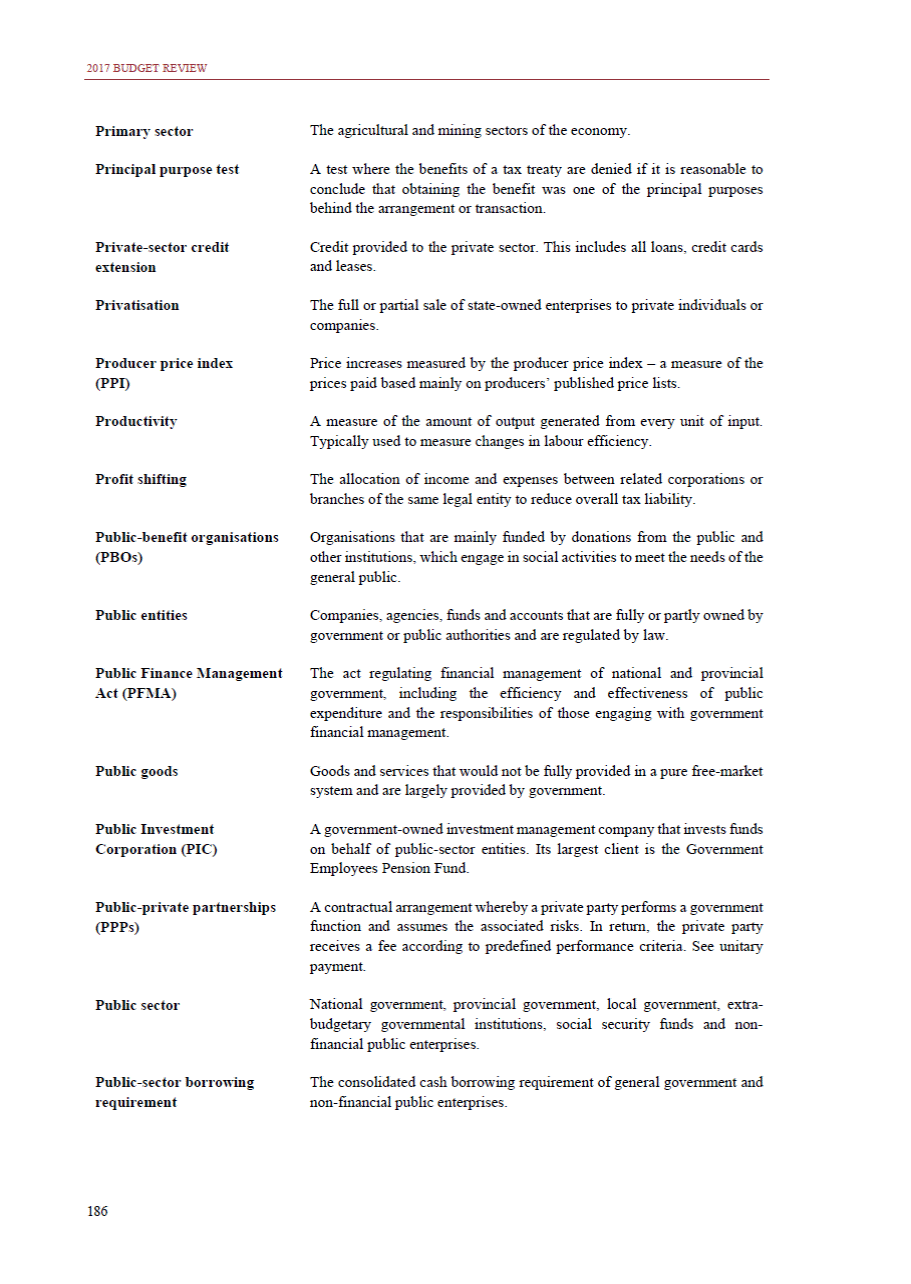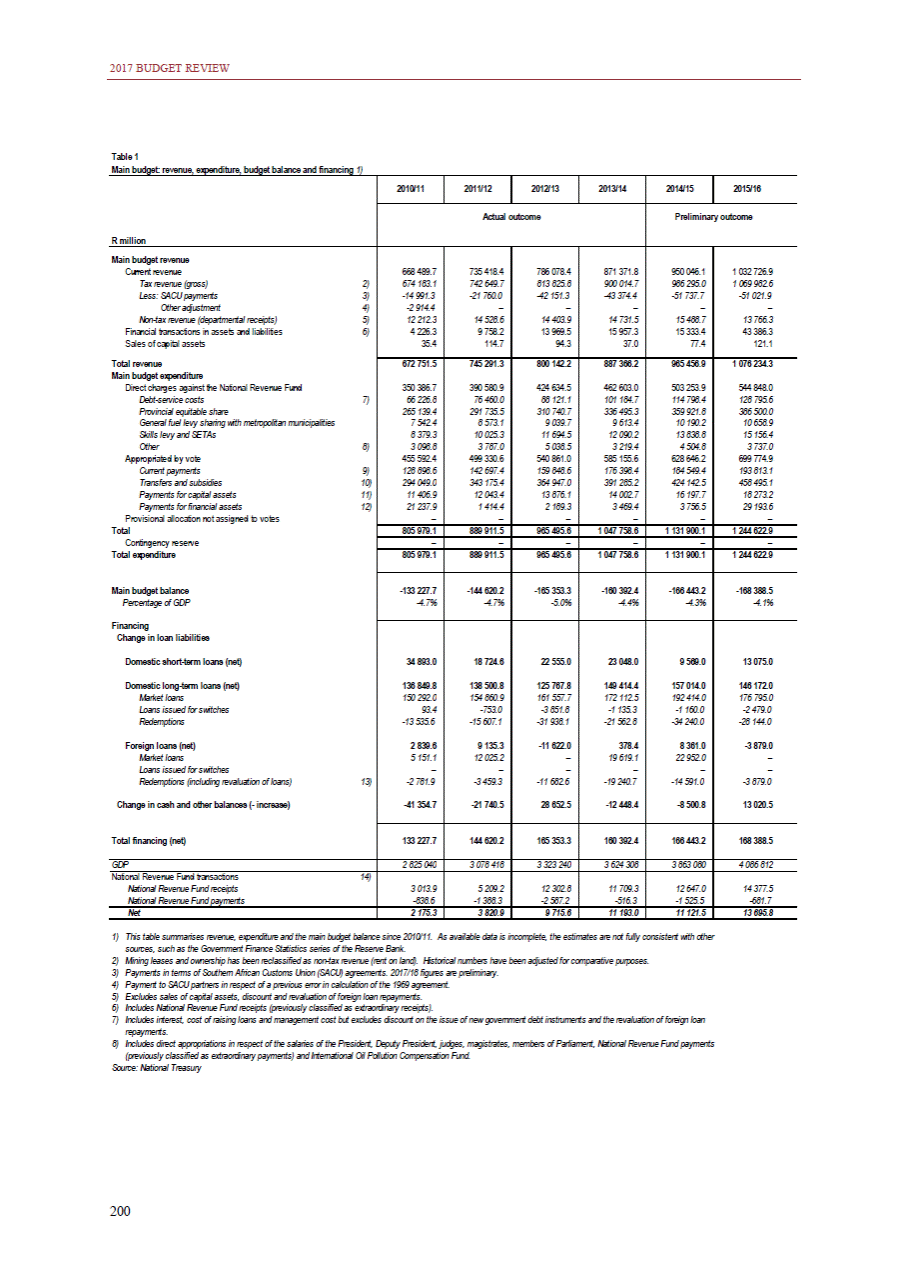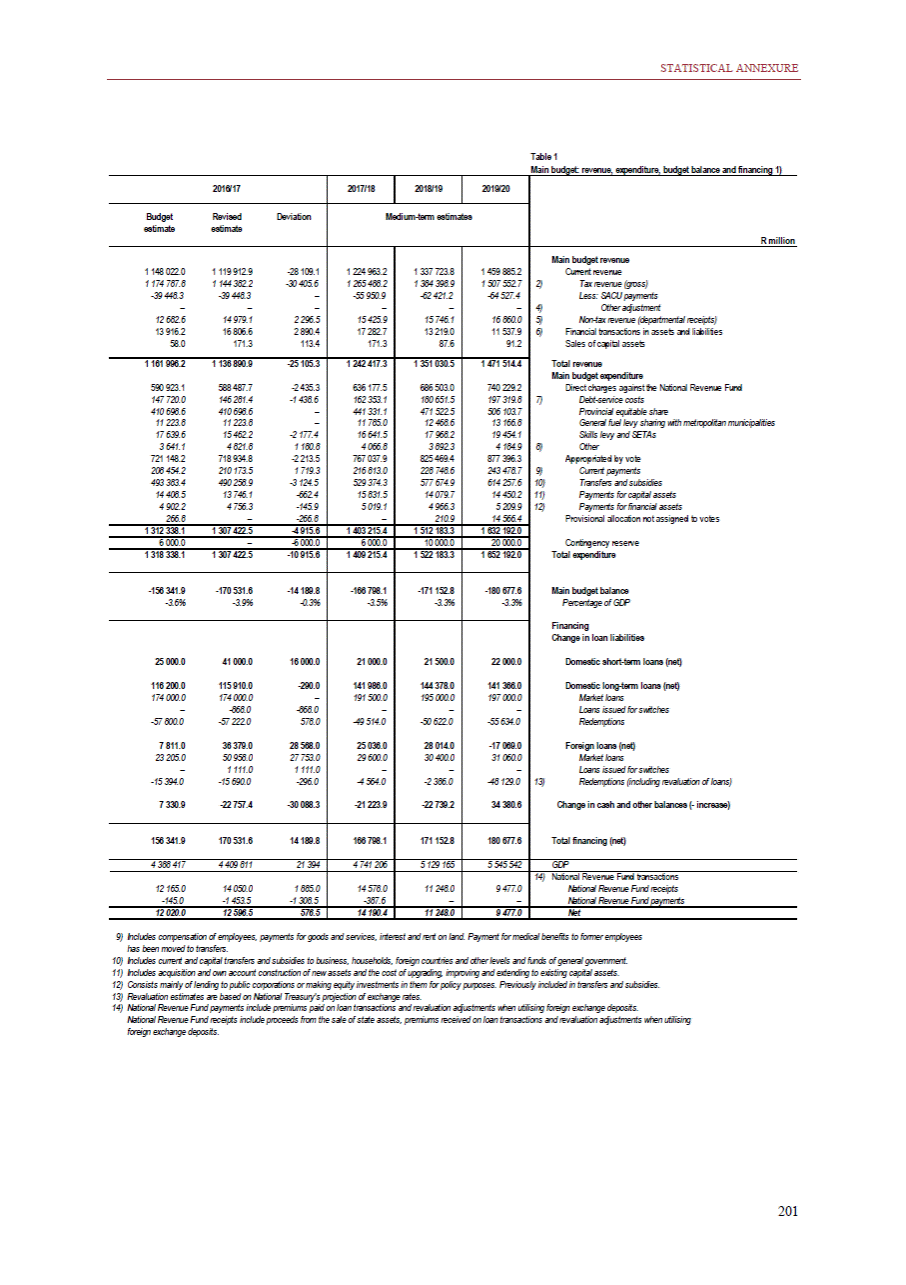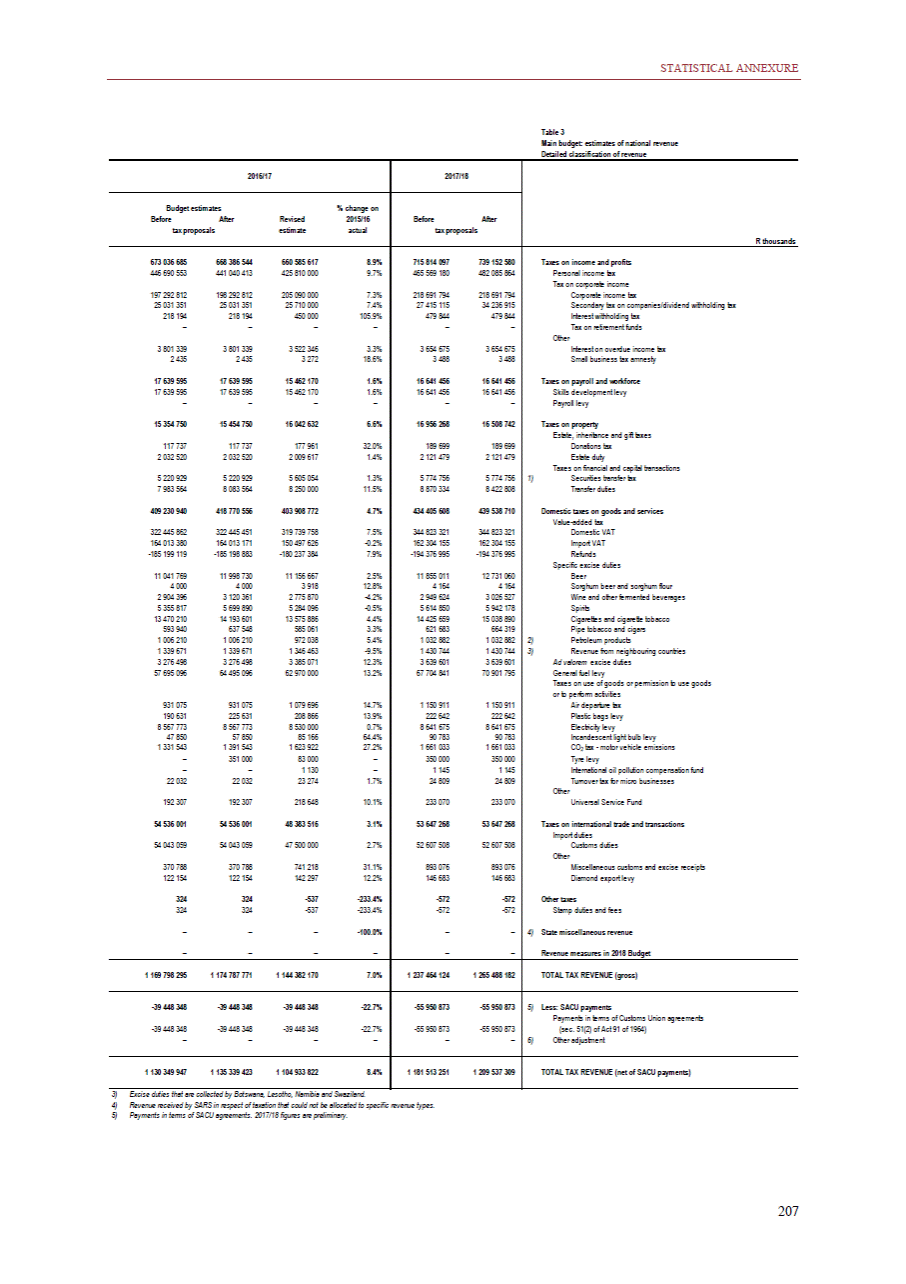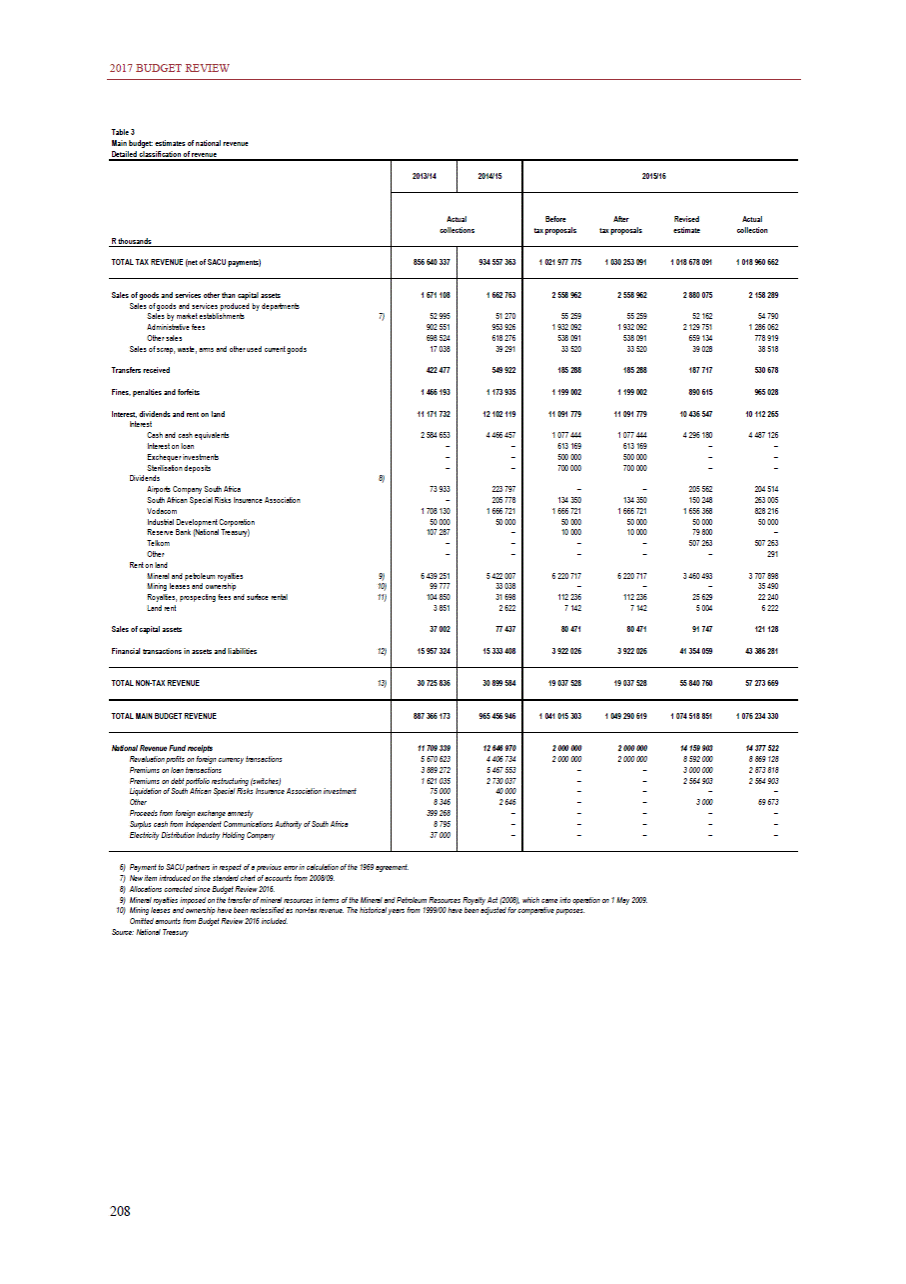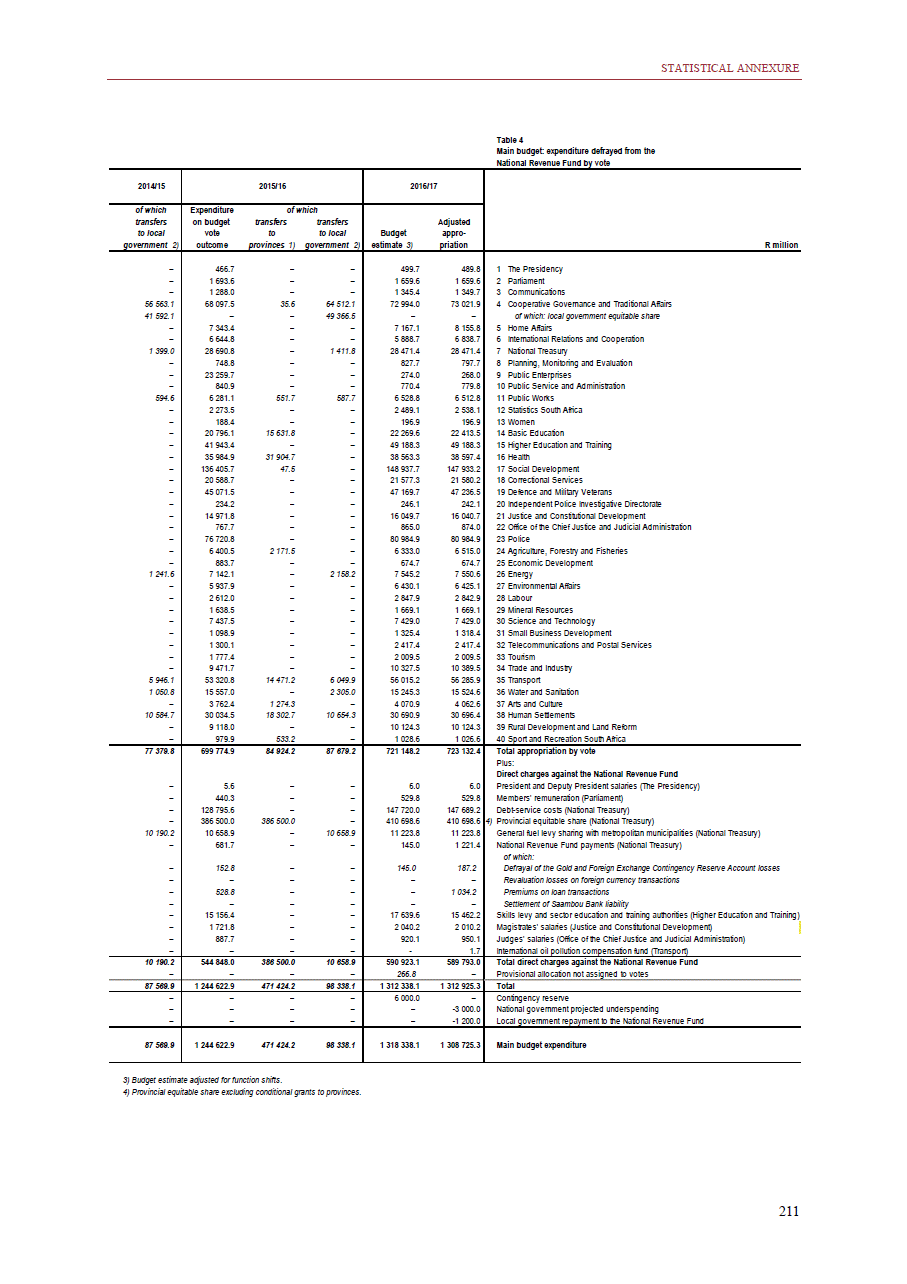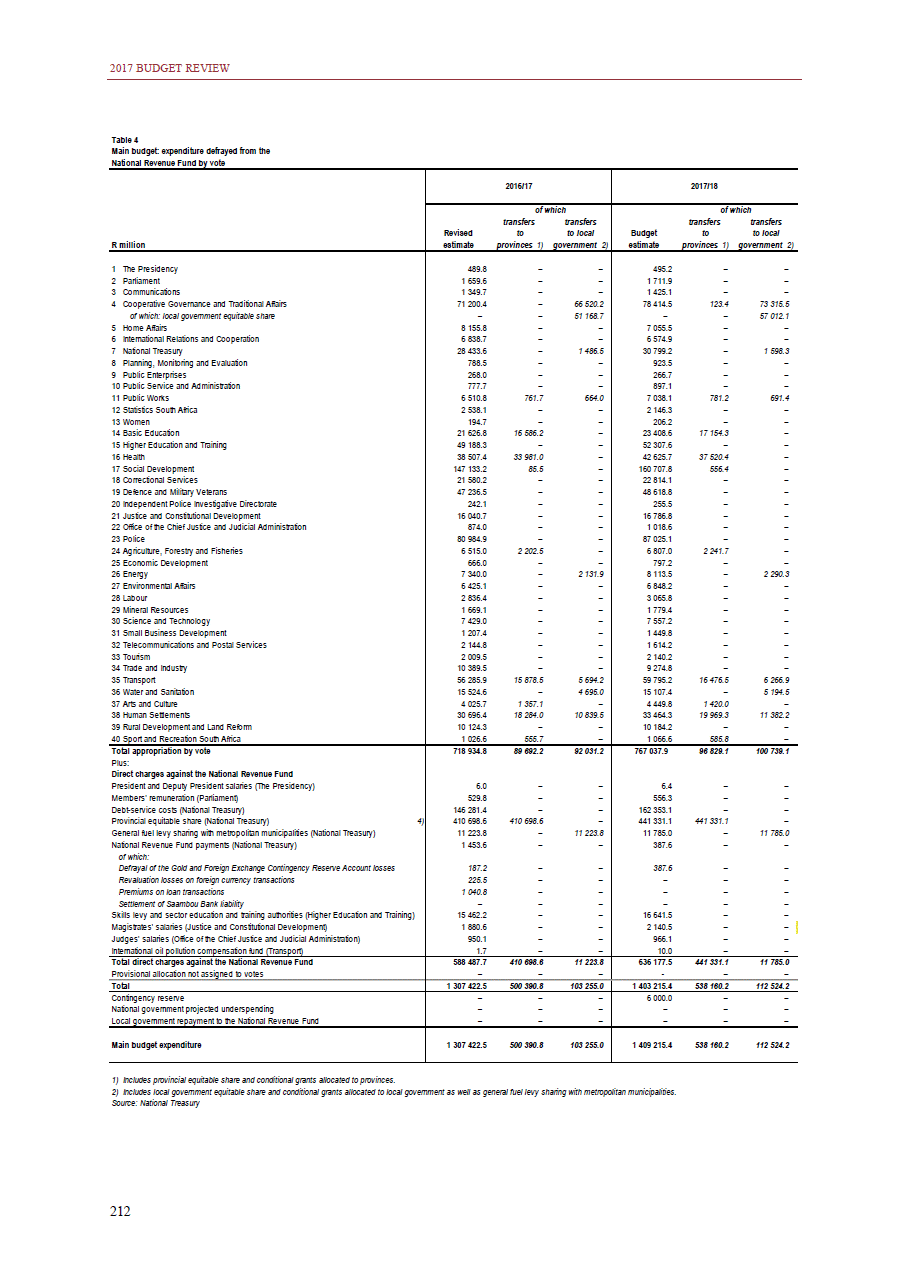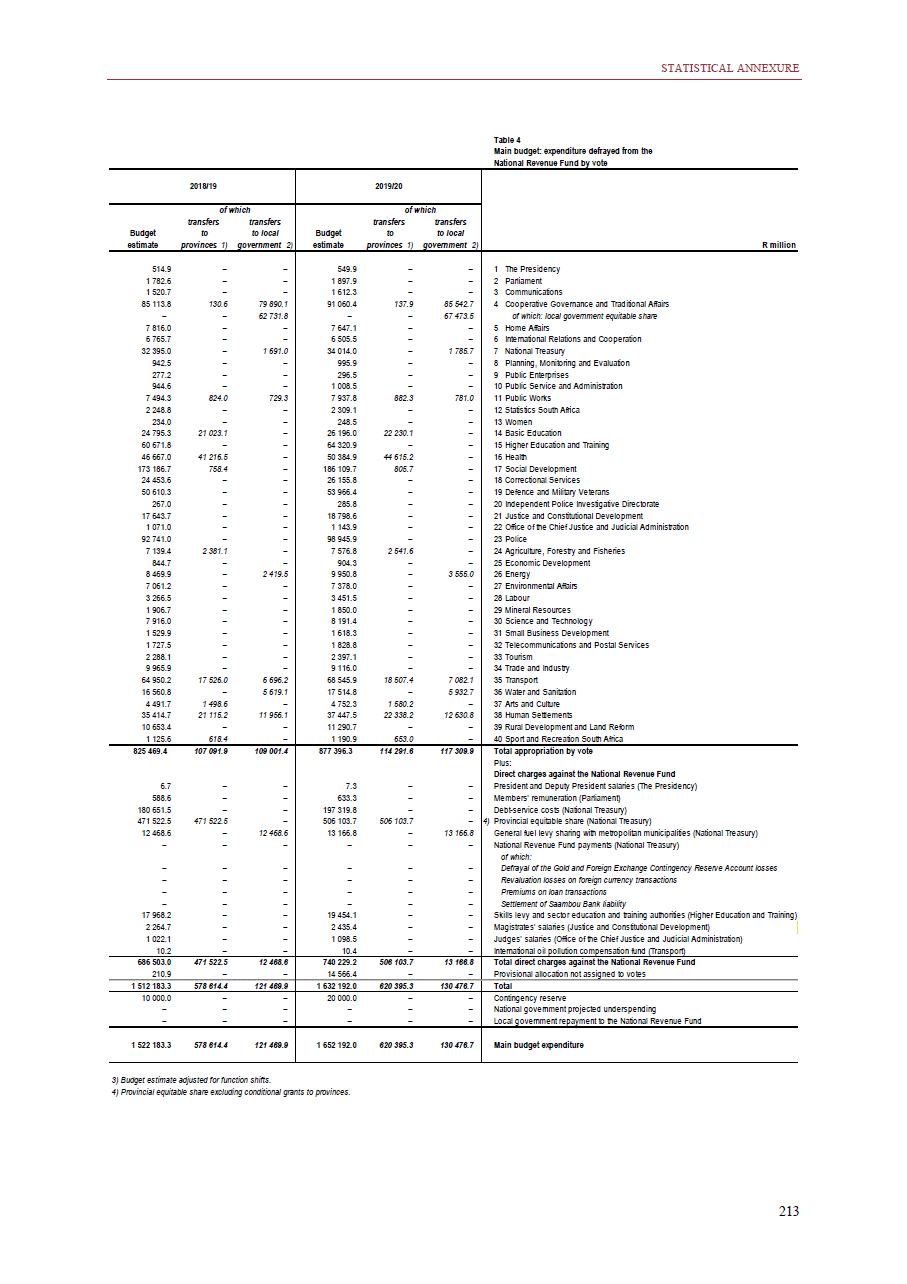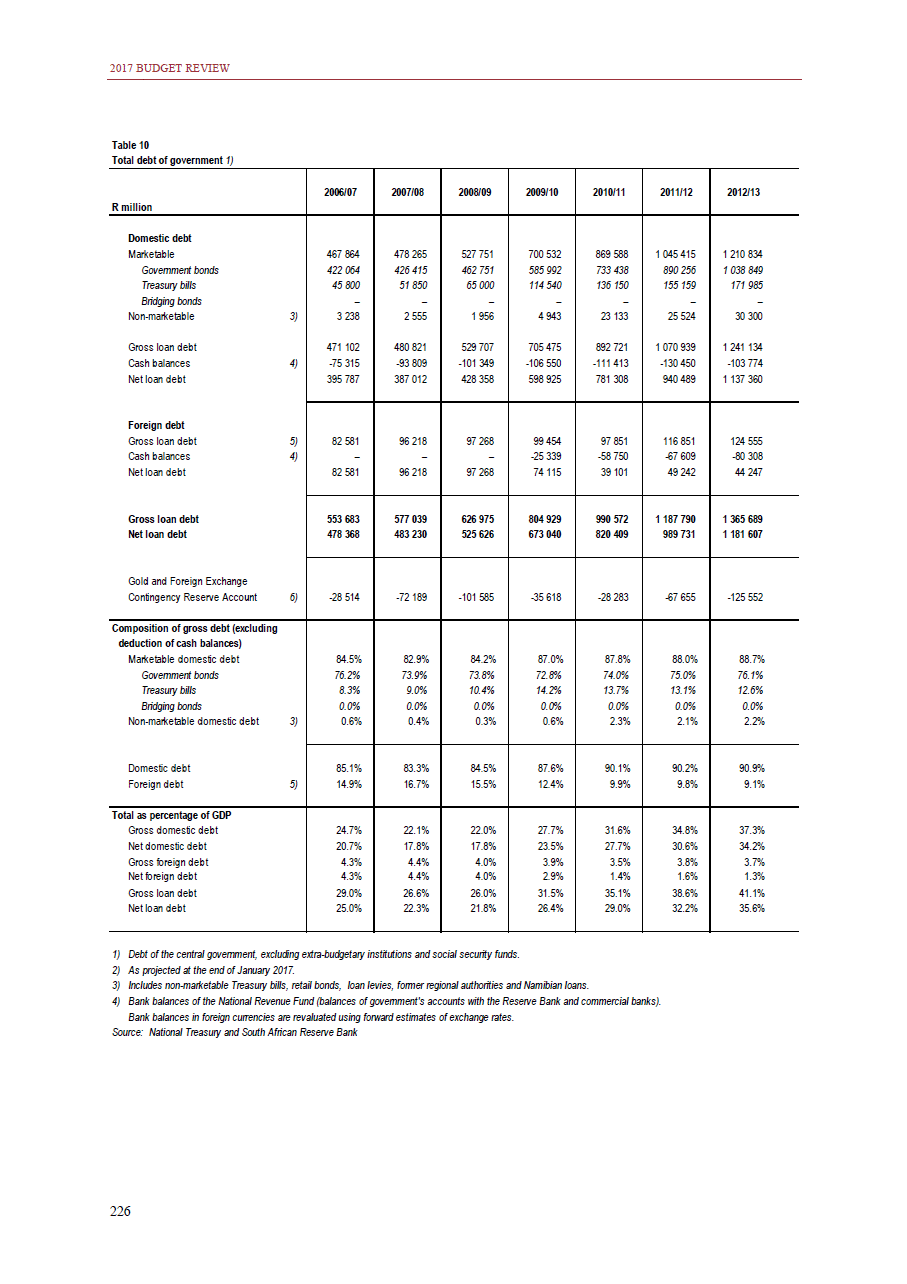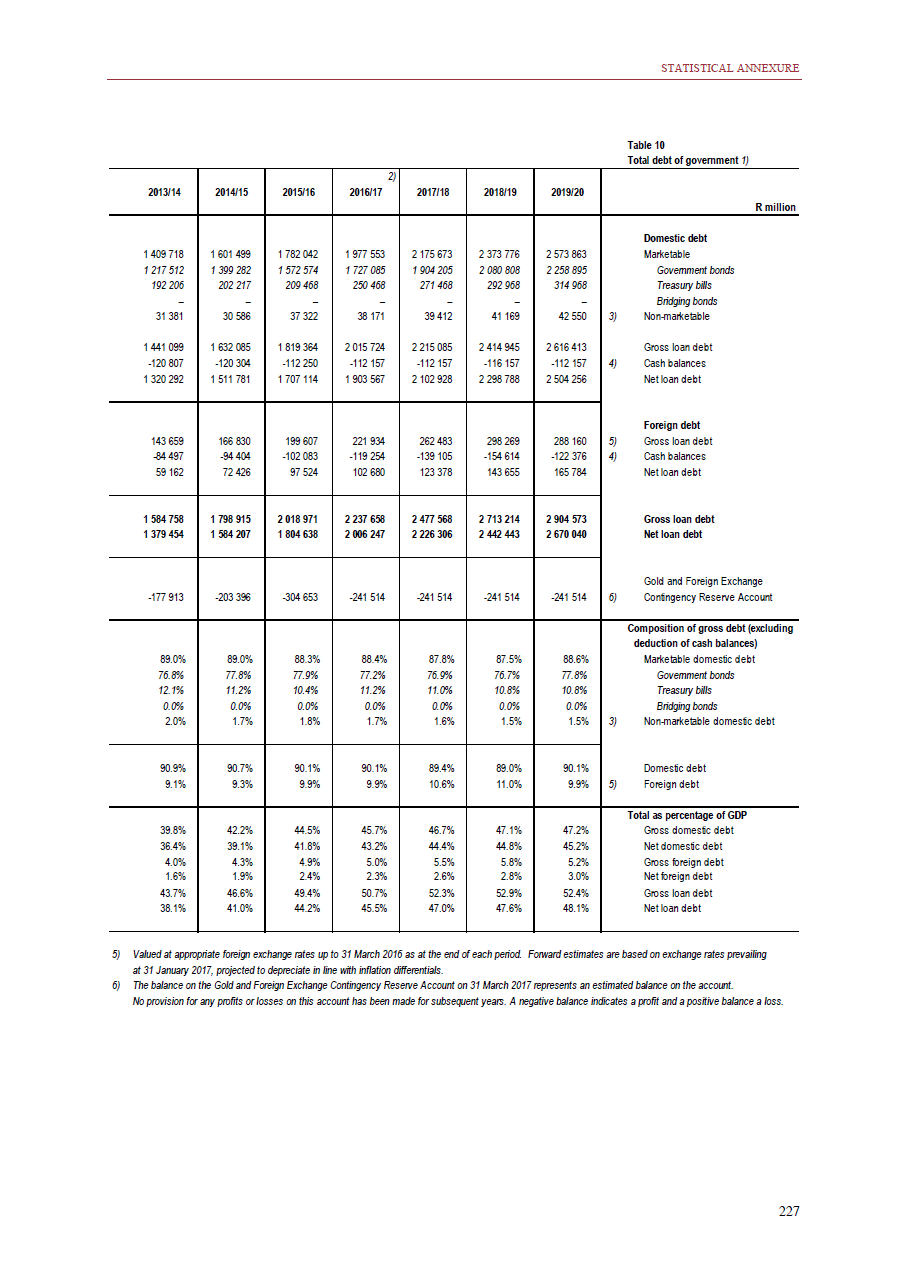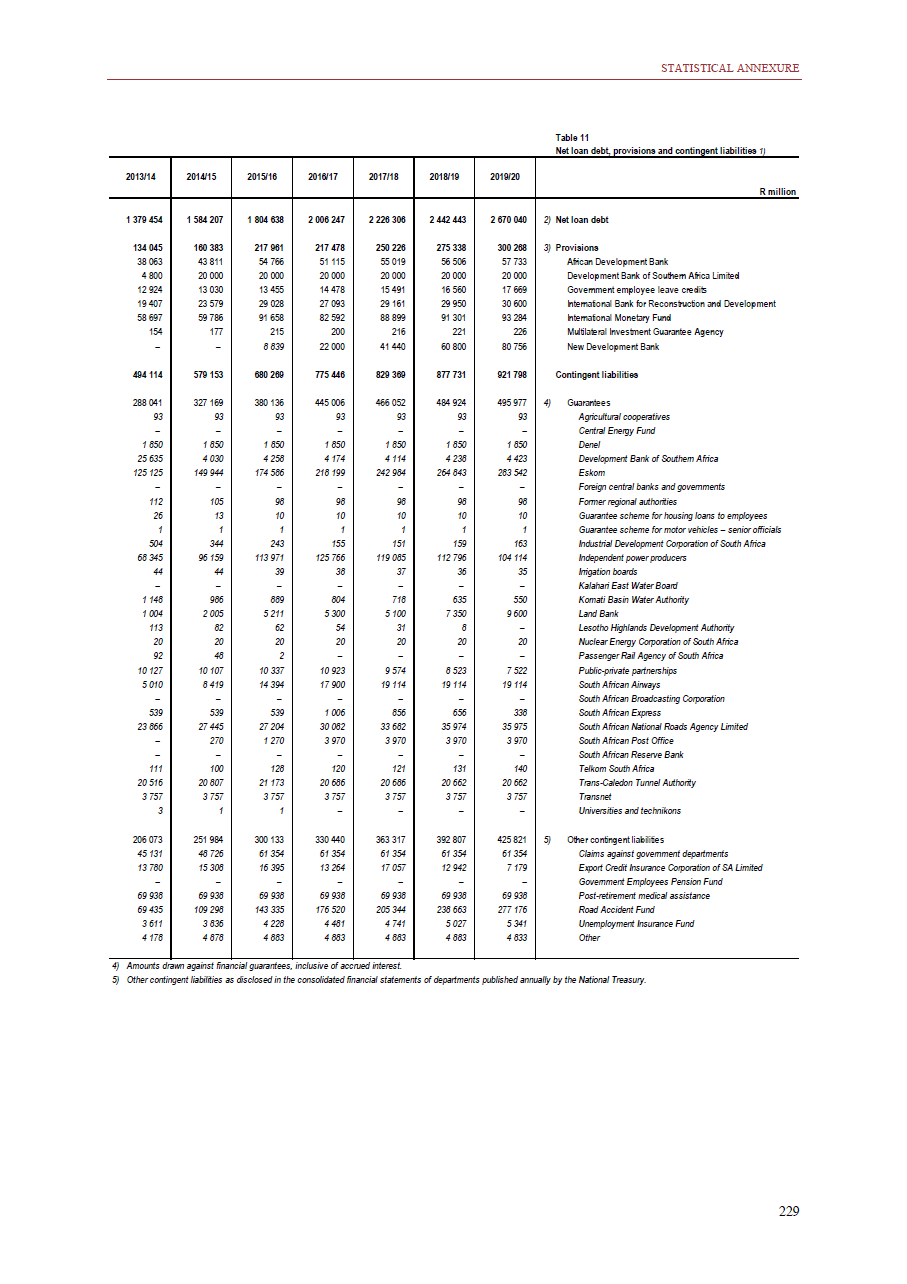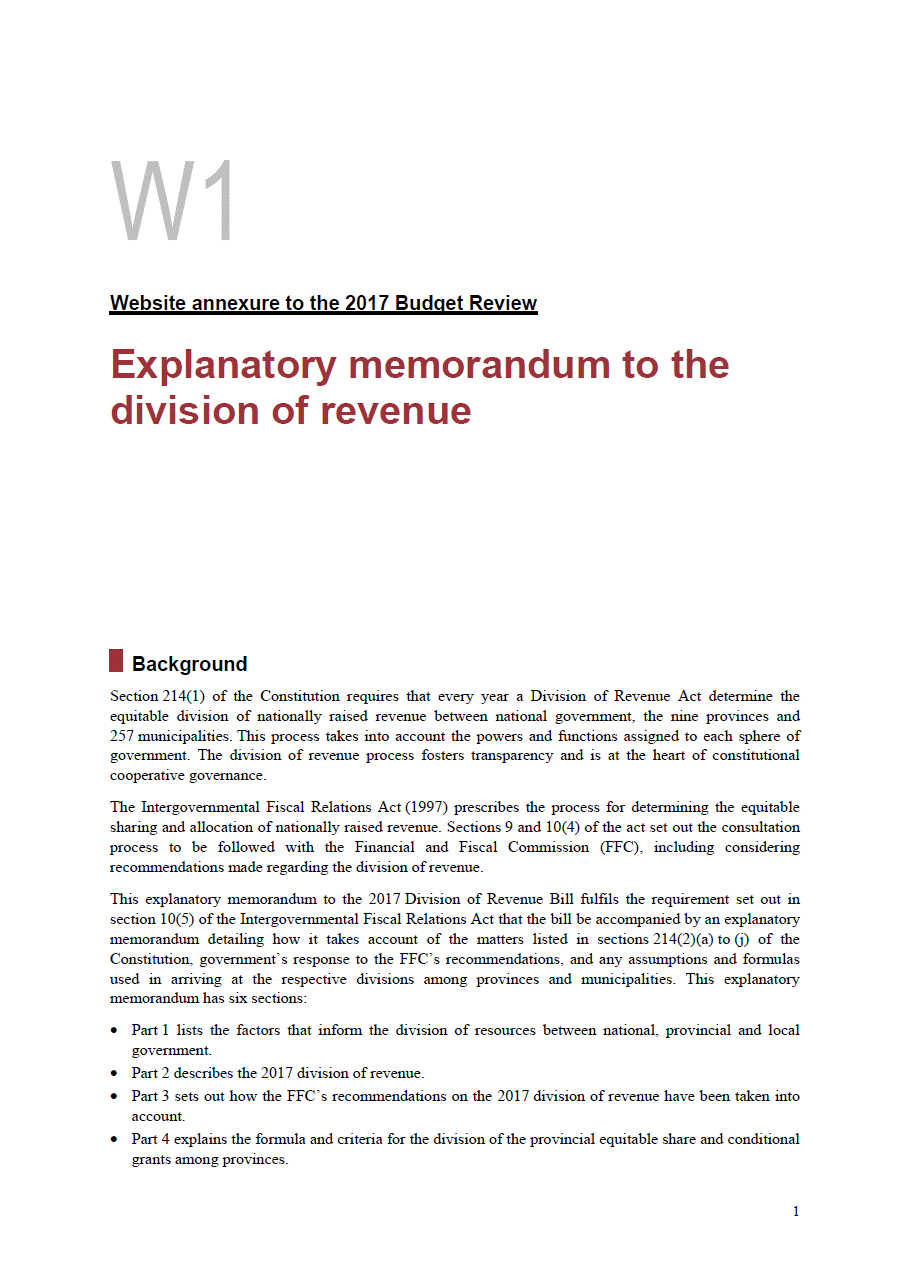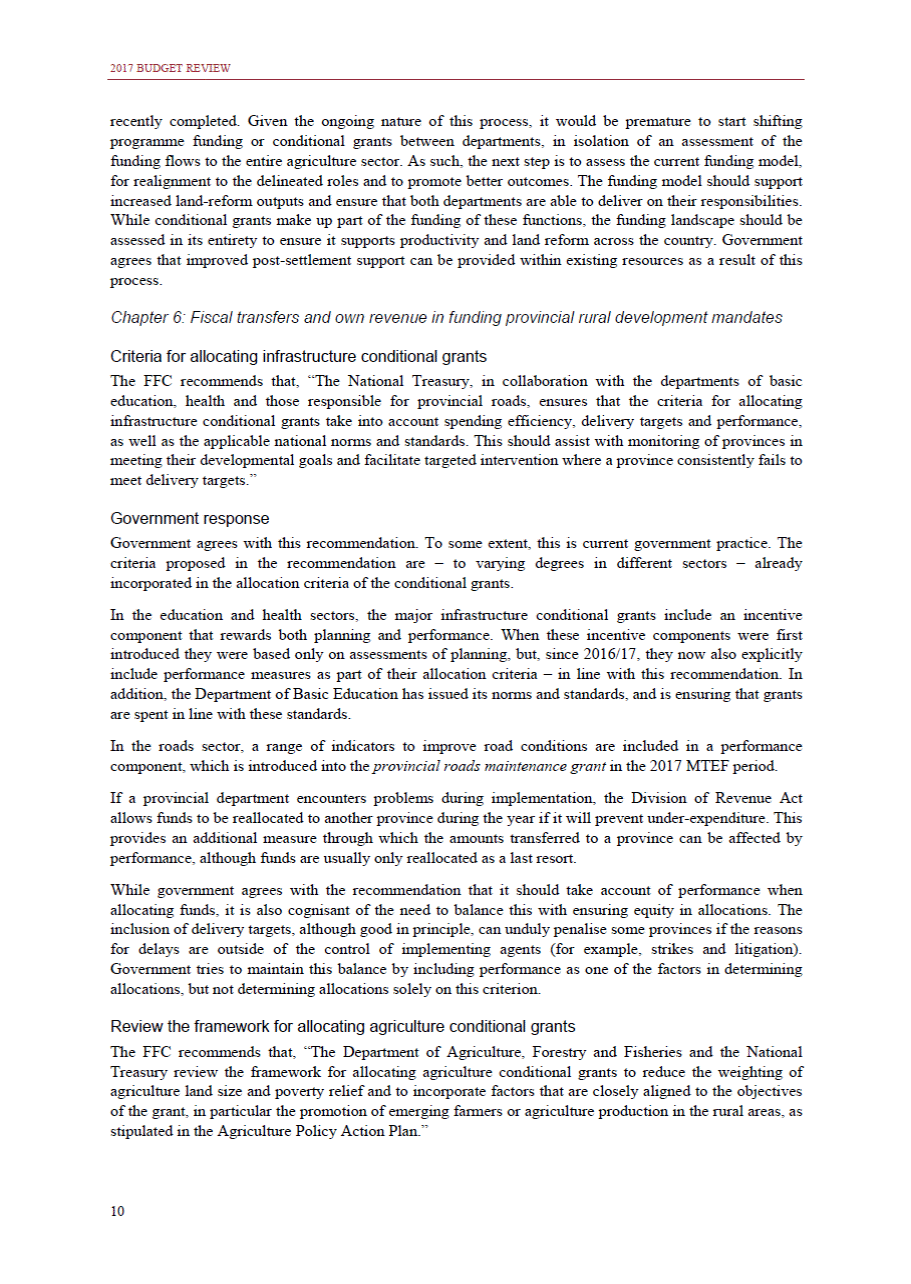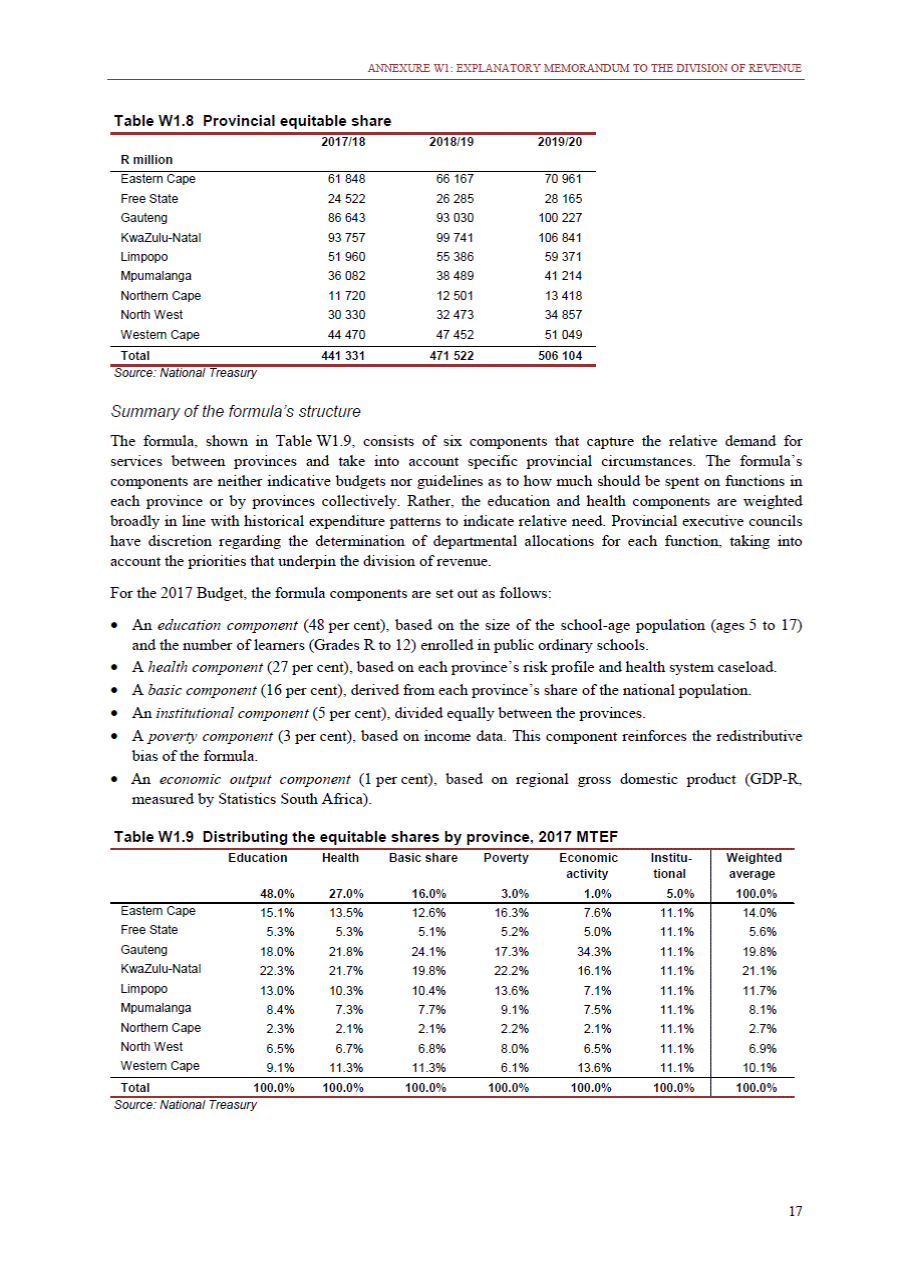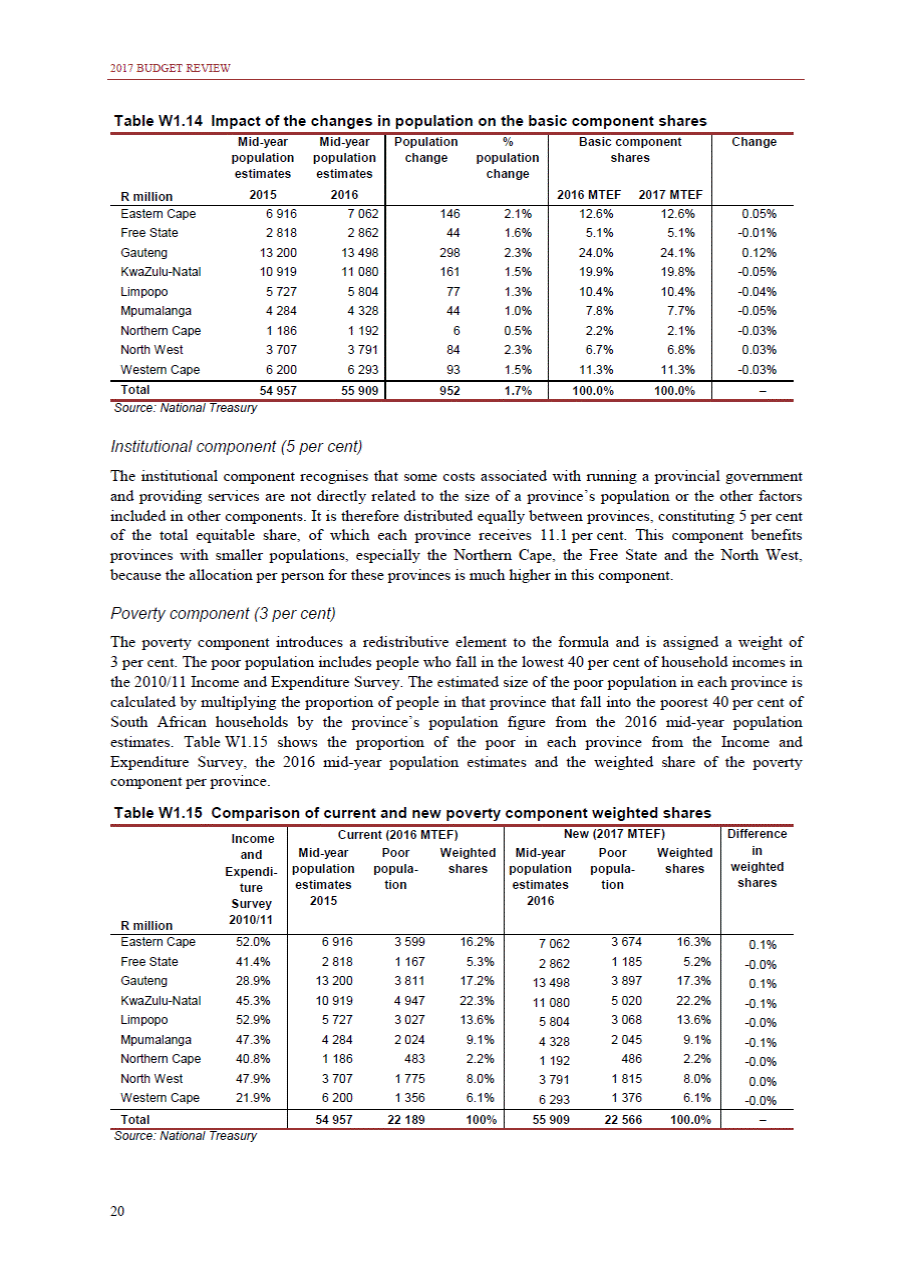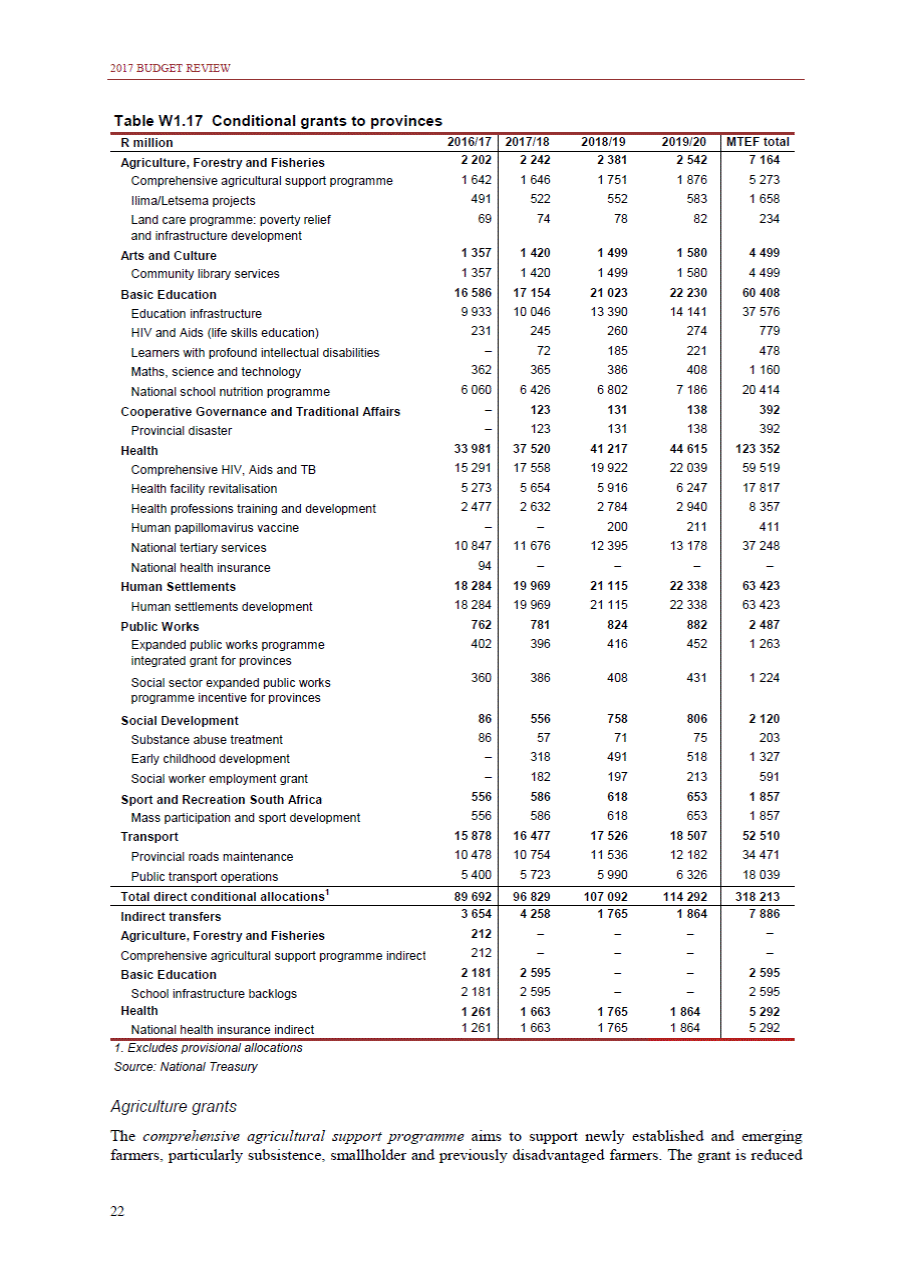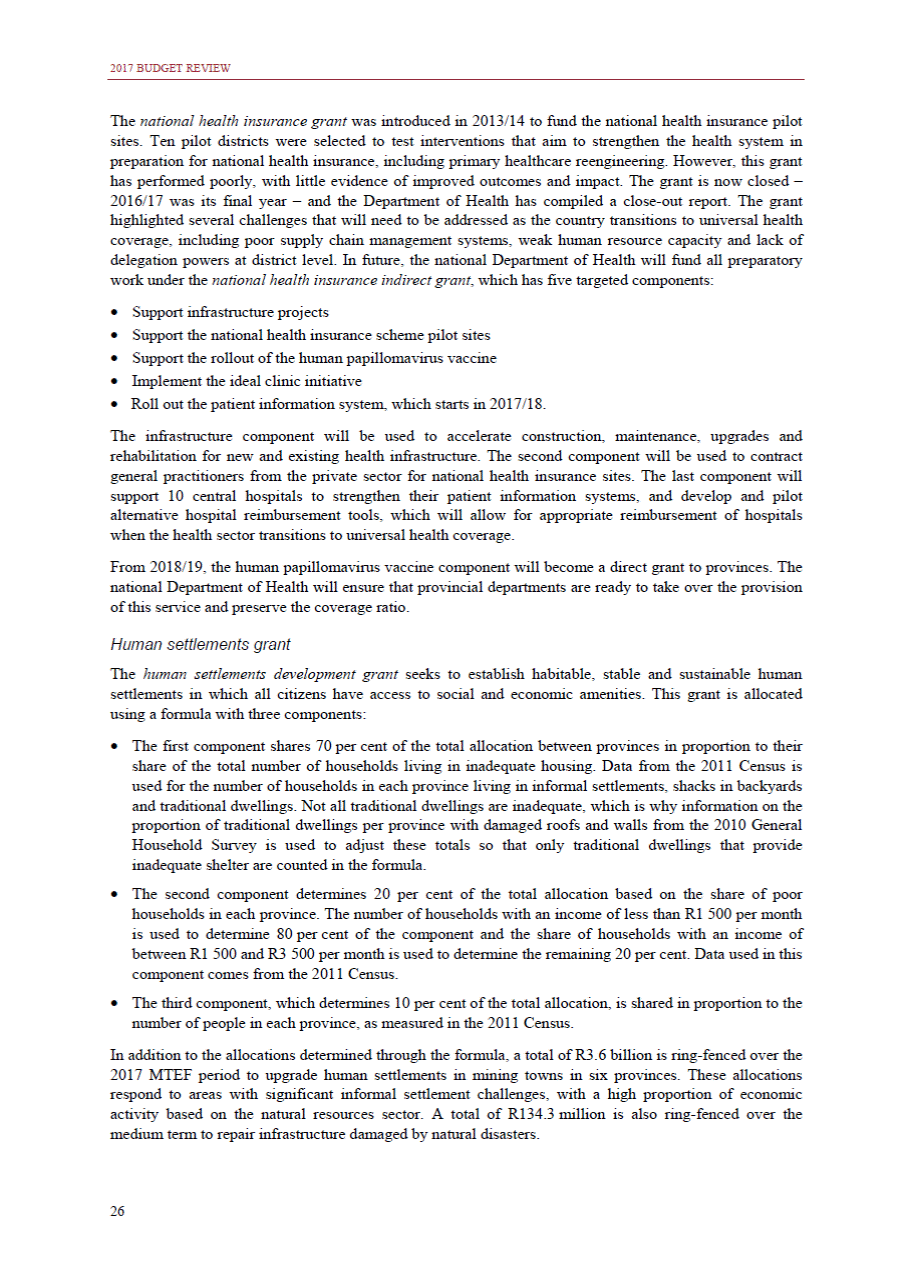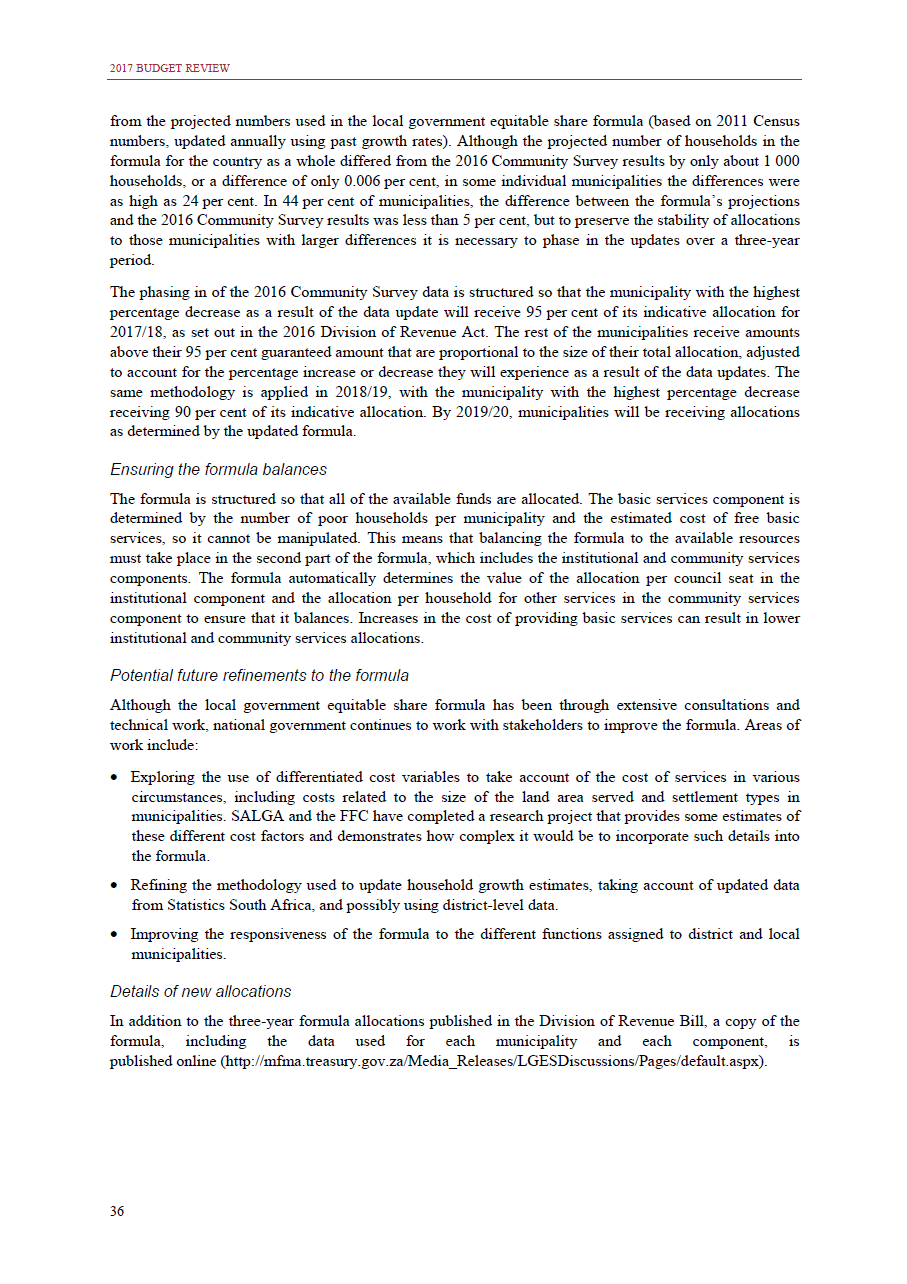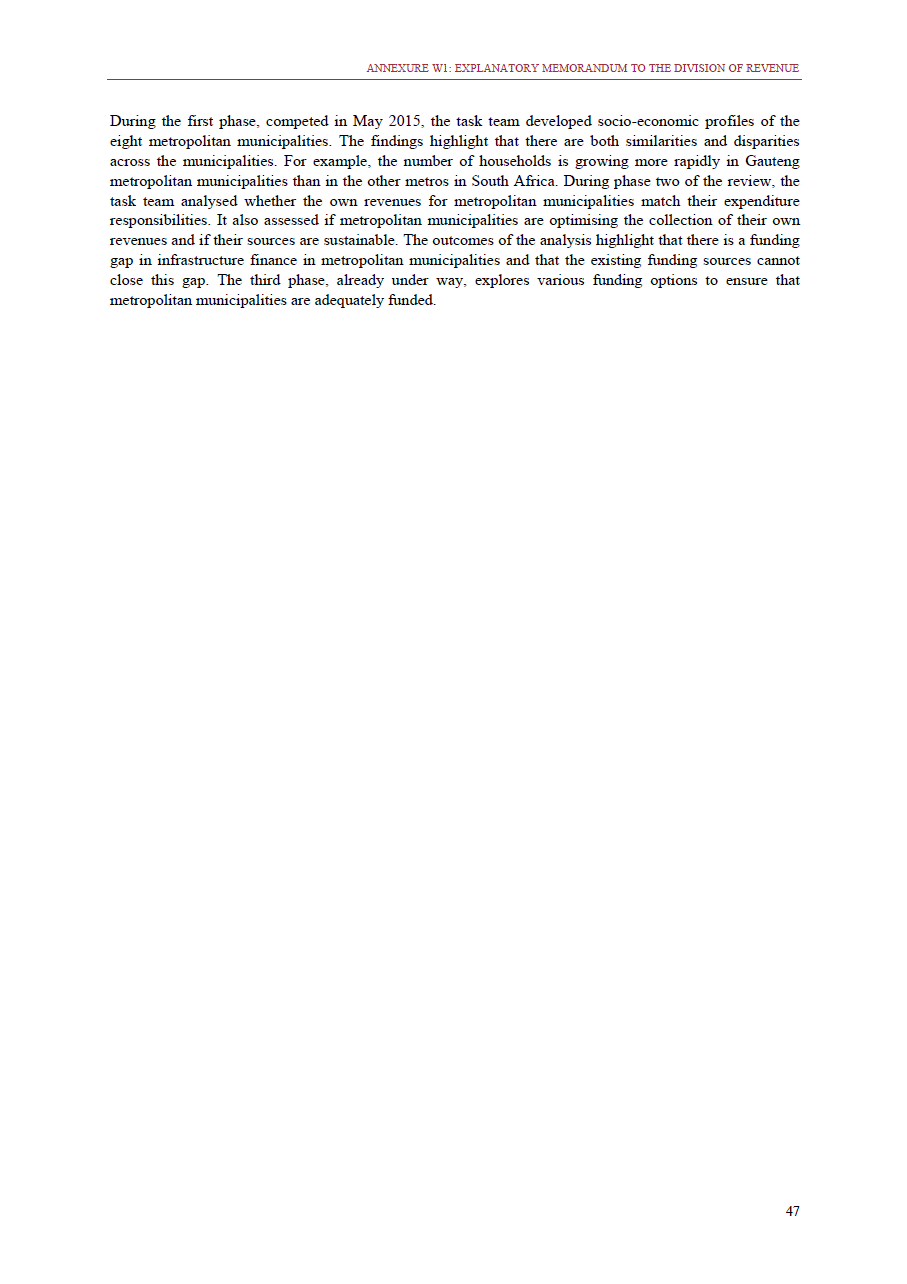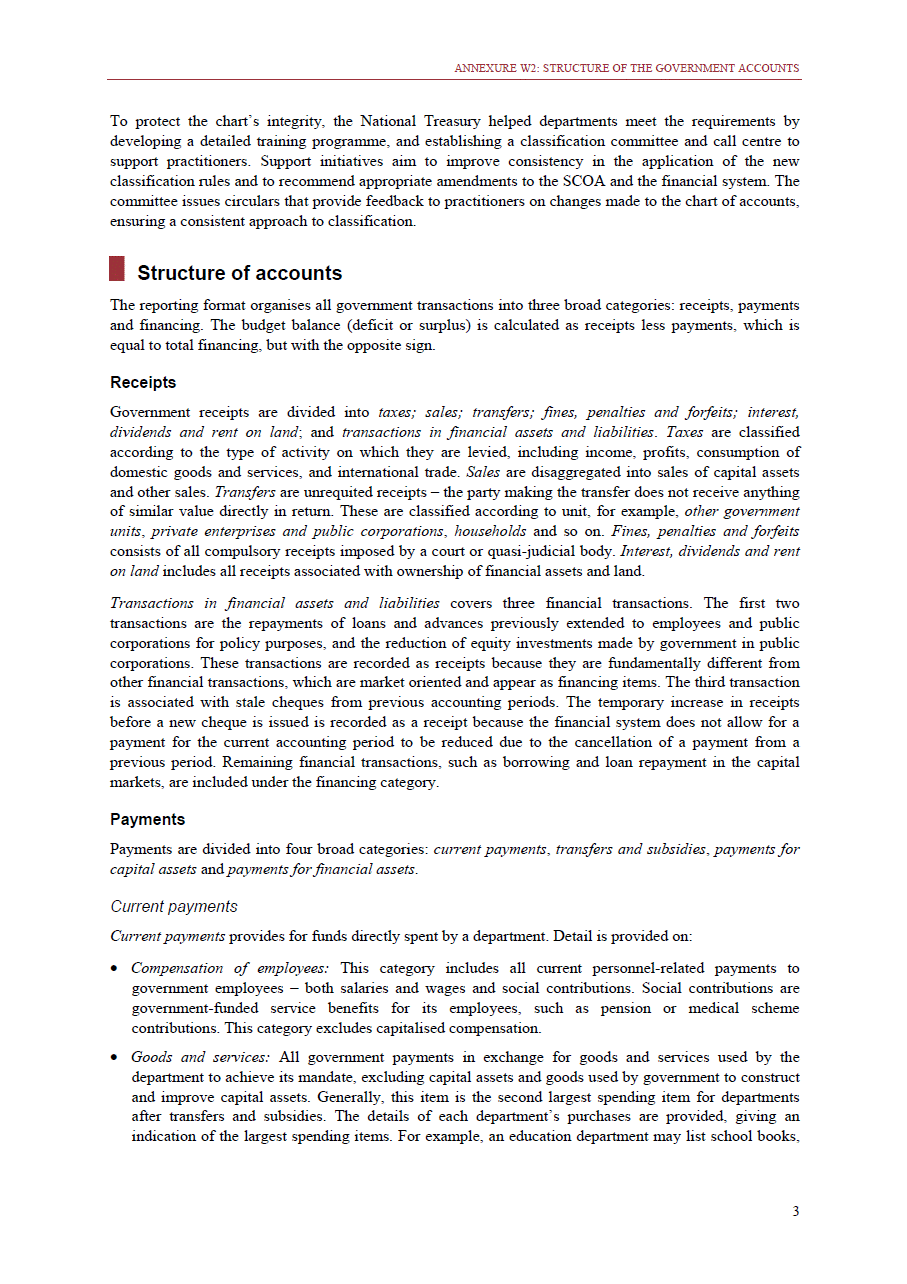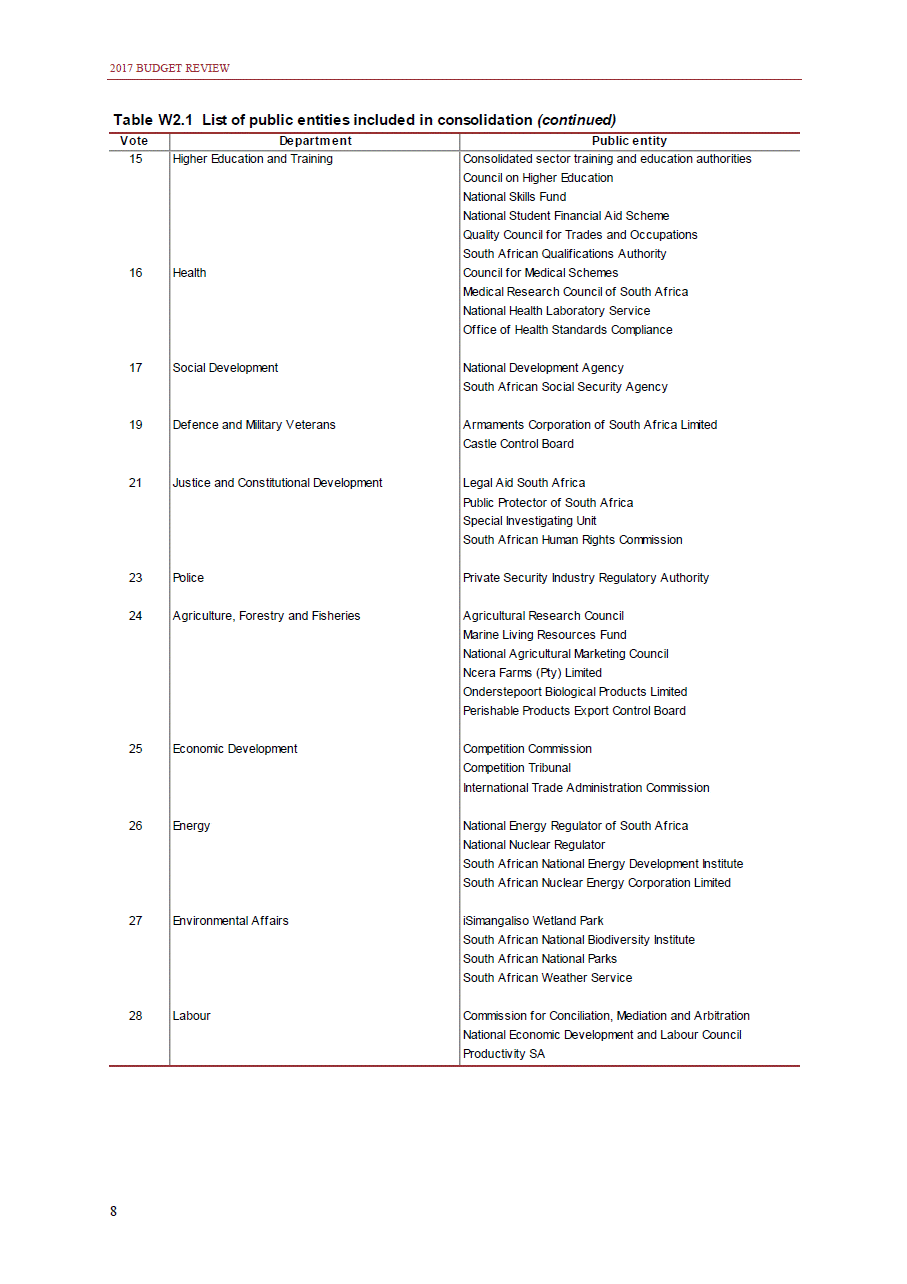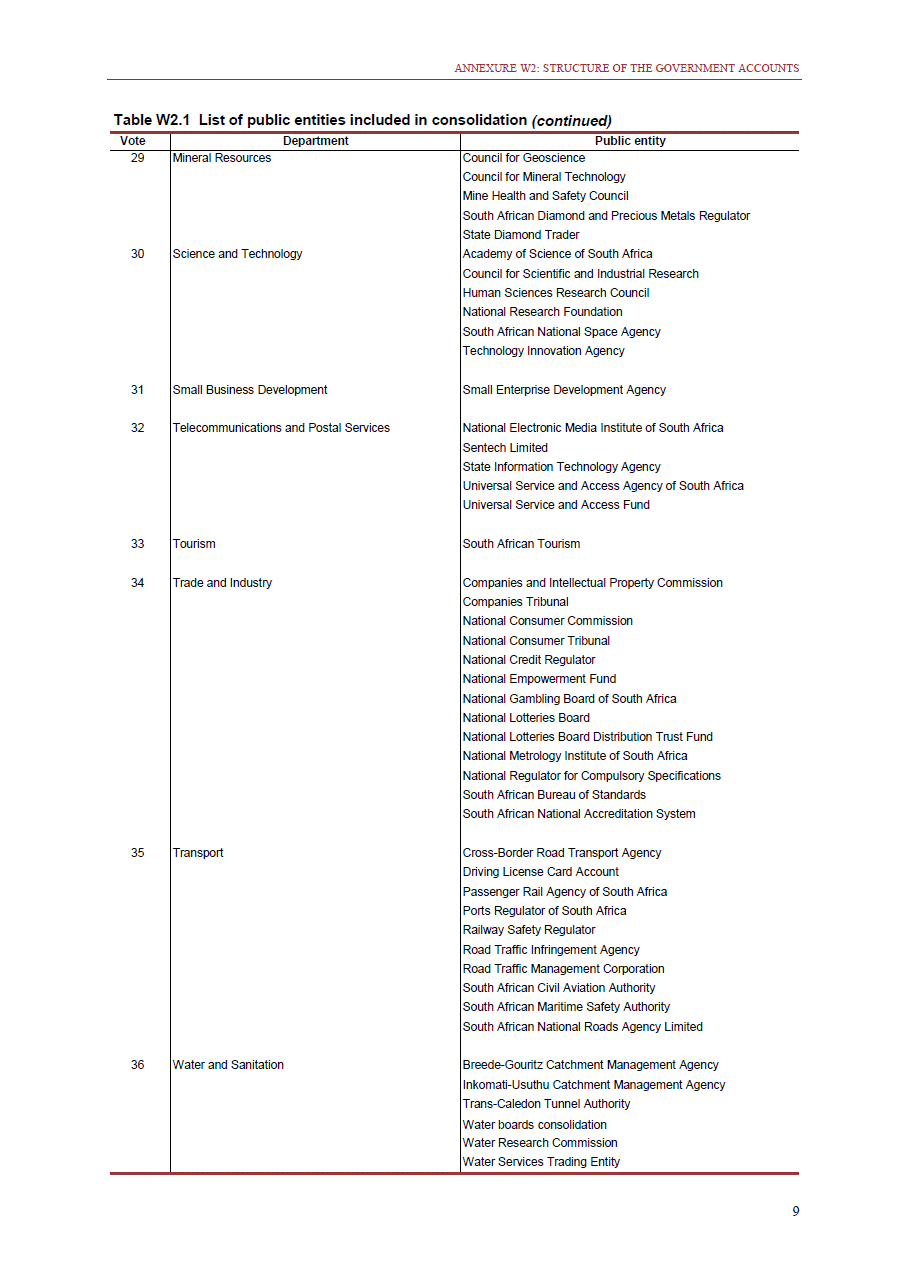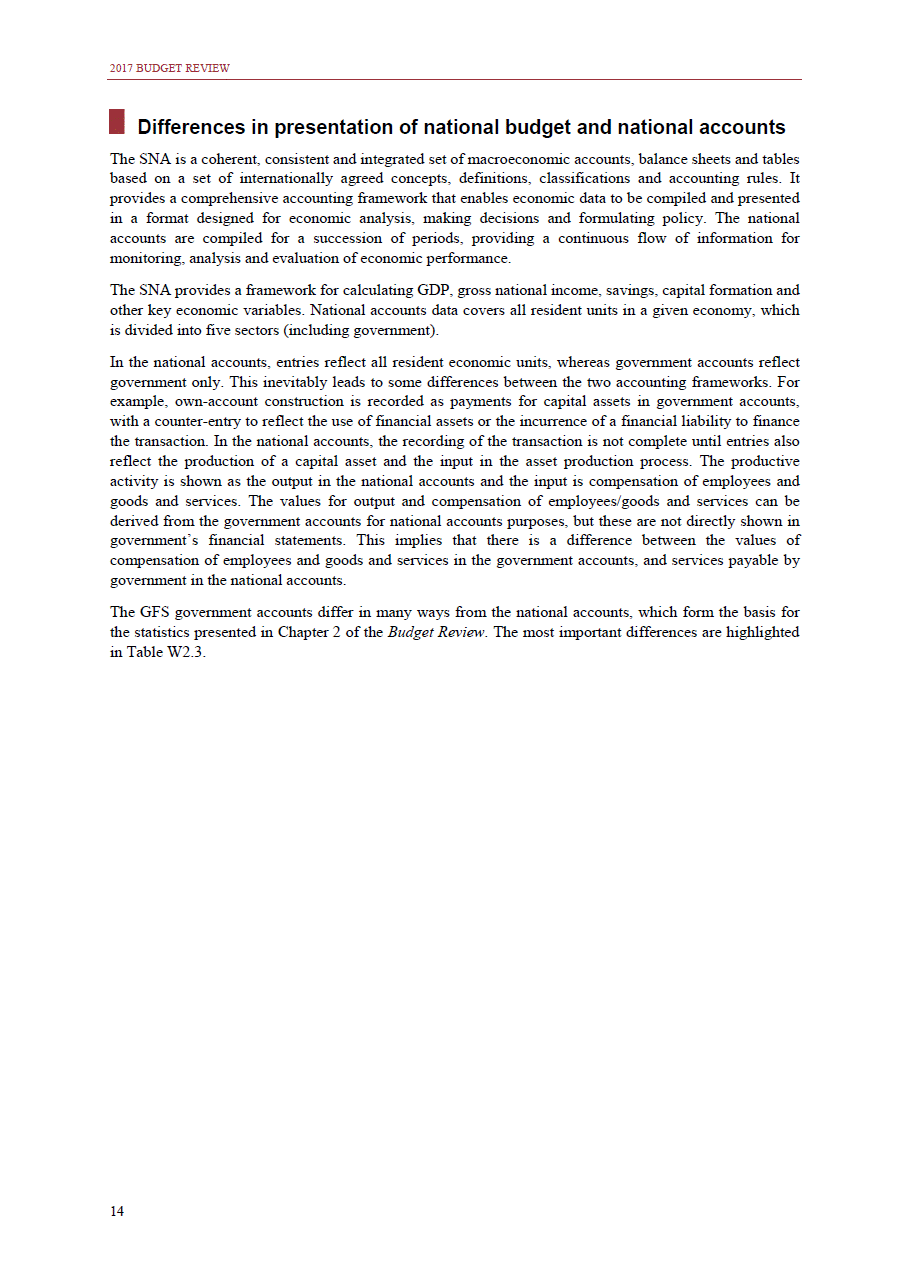ANNEXURE W2: STRUCTURE OF THE GOVERNMENT ACCOUNTS Financing As a broad classification category, financing encompasses all financial transactions other than transactions in financial assets and liabilities and payments for financial assets, which are included as part of receipts and payments. Items recorded under financing reflect funding to cover a government deficit or the use of funds available from a government surplus. Government’s gross borrowing requirement, which represents the shortfall between revenue and expenditure plus the repayment of maturing loans, is included in the financing category. The gross borrowing requirement is financed in the domestic and international market through Treasury bills, fixed-income, inflation-linked and retail bonds, foreign loans and the use of government’s cash deposits. Functional classification To be consistent with the GFS, government payments are classified according to their functional and economic characteristics. The items in the economic classification have been described above, under payments. The main function of the economic classification is to categorise transactions according to type of object or input, such as compensation of employees or interest payments. Data must be classified this way to calculate the surplus or deficit, as well as government’s contribution to the economy in the form of output, value added and final consumption. The functional classification complements the economic classification. It serves to distinguish transactions by policy purpose or type of outlay. This is also referred to as expense by output. Its main purpose is to facilitate understanding of how funds available to government have been spent on health, education, general public services, public order and safety, and so on. The broad categories in the functional classification are listed below: • General public services refers to the administration, operation or support of executive and legislative organs, financial and fiscal affairs, and external affairs. It includes foreign economic aid to developing countries and economic aid through international organisations. The category also covers general services, such as personnel services, overall planning and statistical services, and basic research in the general public service. State debt costs are included in this category. Defence includes administration, operation and support of military and civil defence, and the operation of military aid missions accredited to foreign governments or attached to international military organisations. Applied research and development (R&D) related to defence is also included. Public order and safety covers police services, fire protection services, justice and law courts, prisons and related R&D. Economic affairs includes government spending associated with the regulation and more efficient operation of the business sector. This category incorporates general economic affairs; commercial and labour affairs; agriculture, forestry, fishing and hunting; fuel and energy; mining; manufacturing and construction; transport; communication and related R&D. Environmental protection relates to the conservation of biodiversity and landscapes – the protection of habitats, including the management of natural parks and reserves, waste management, wastewater management, pollution abatement and related R&D. Housing and community amenities includes the administration of housing and community development affairs and services, water supply, street lighting and related R&D. Health covers spending on services provided to individuals and on a collective basis, including medical products, appliances and equipment, outpatient services, hospital services, public health services and related R&D. Recreation and culture includes recreational and sporting services, cultural services, broadcasting and publishing services, religious and other community services, and related R&D. • • • • • • • 5


